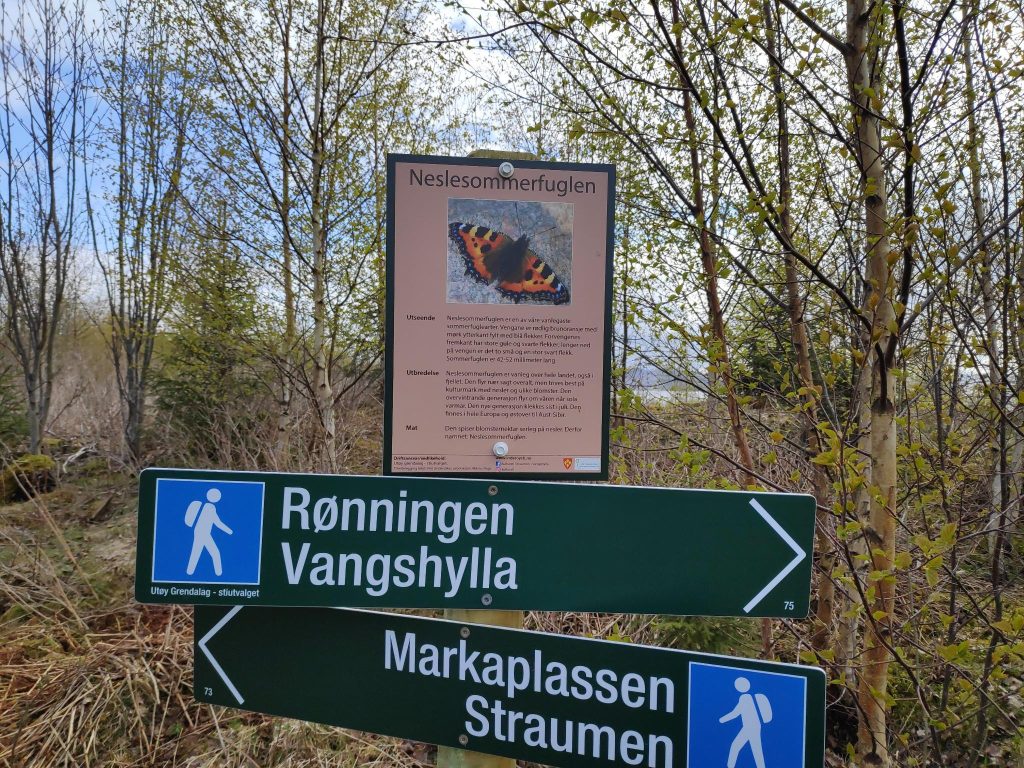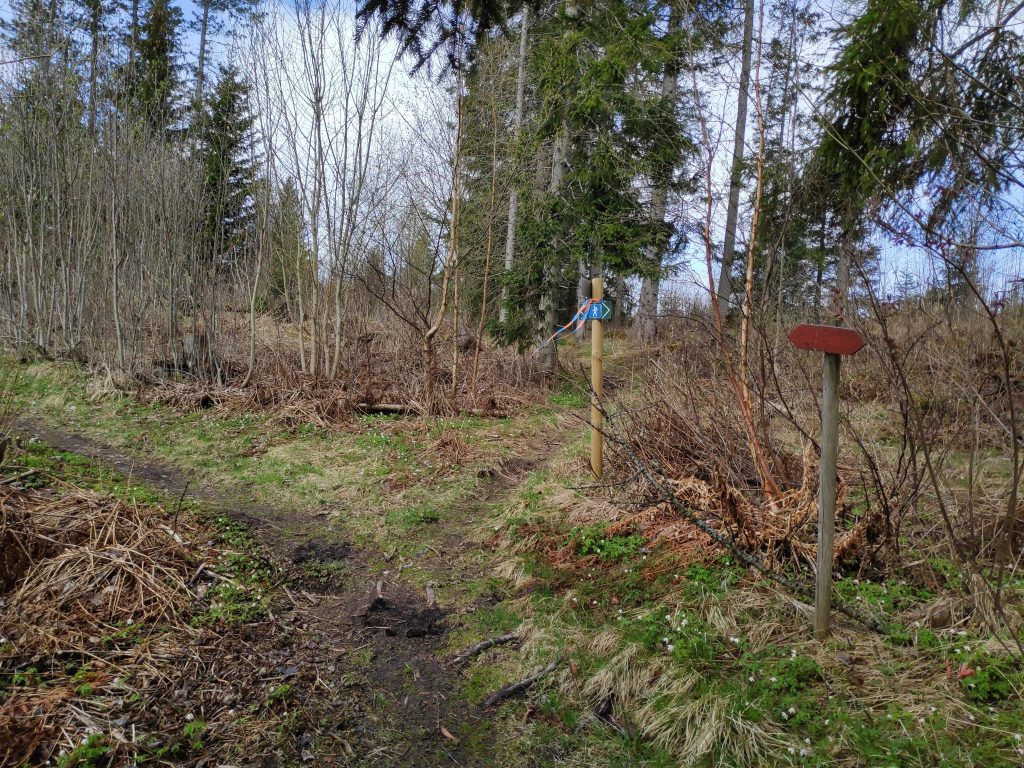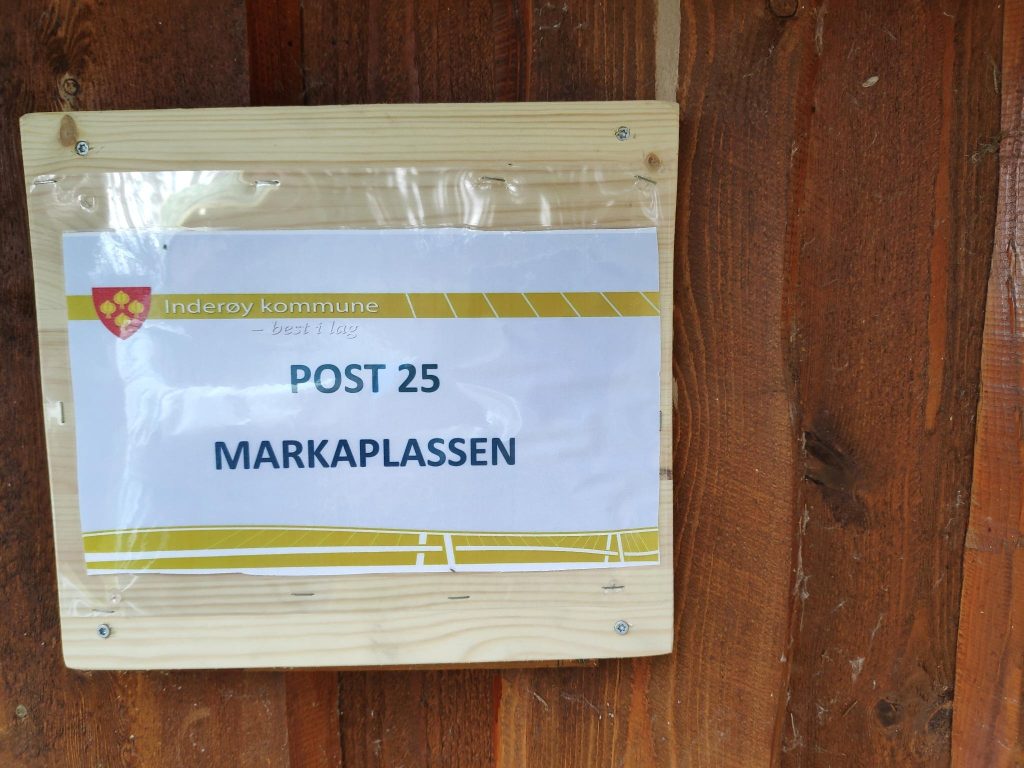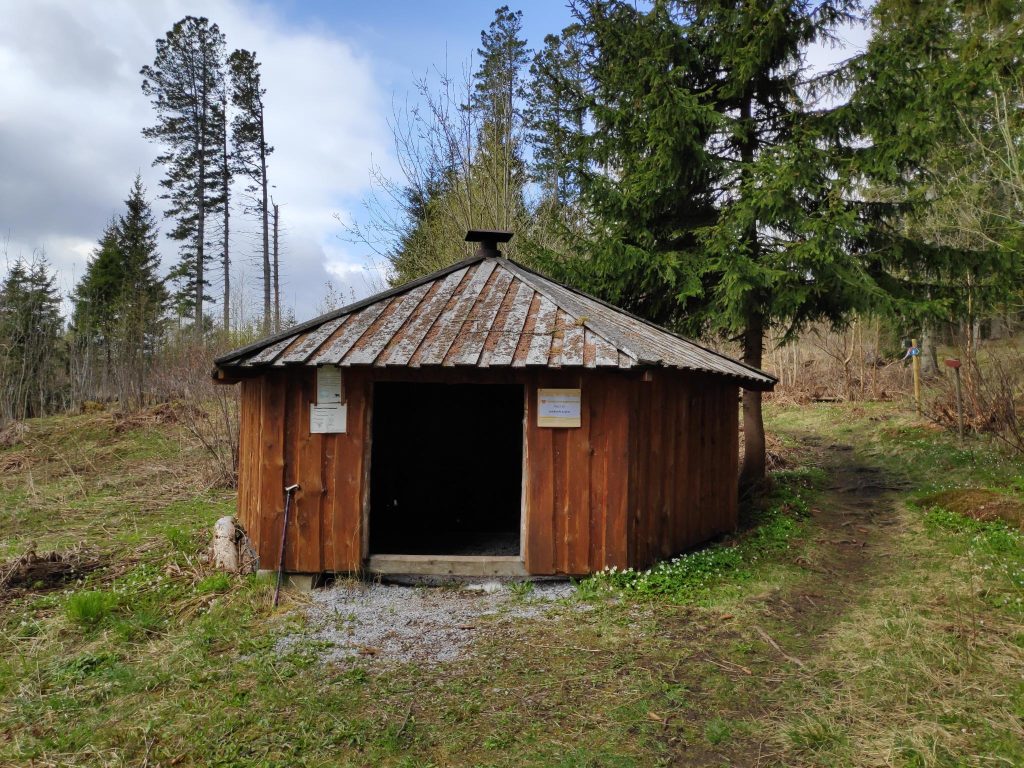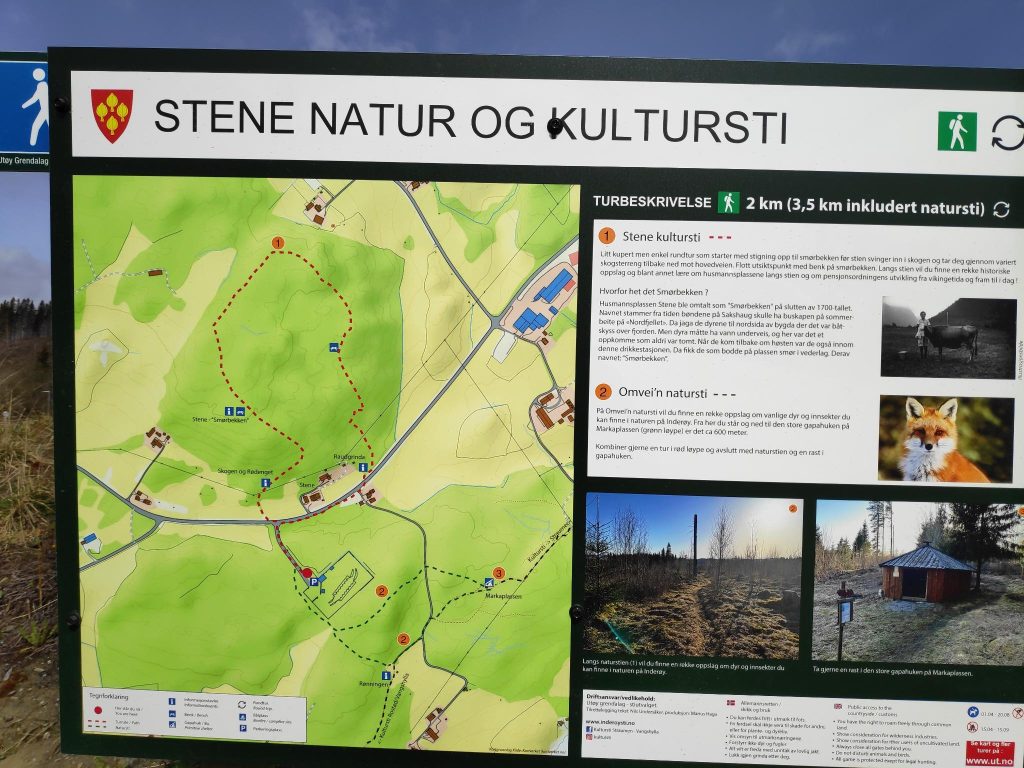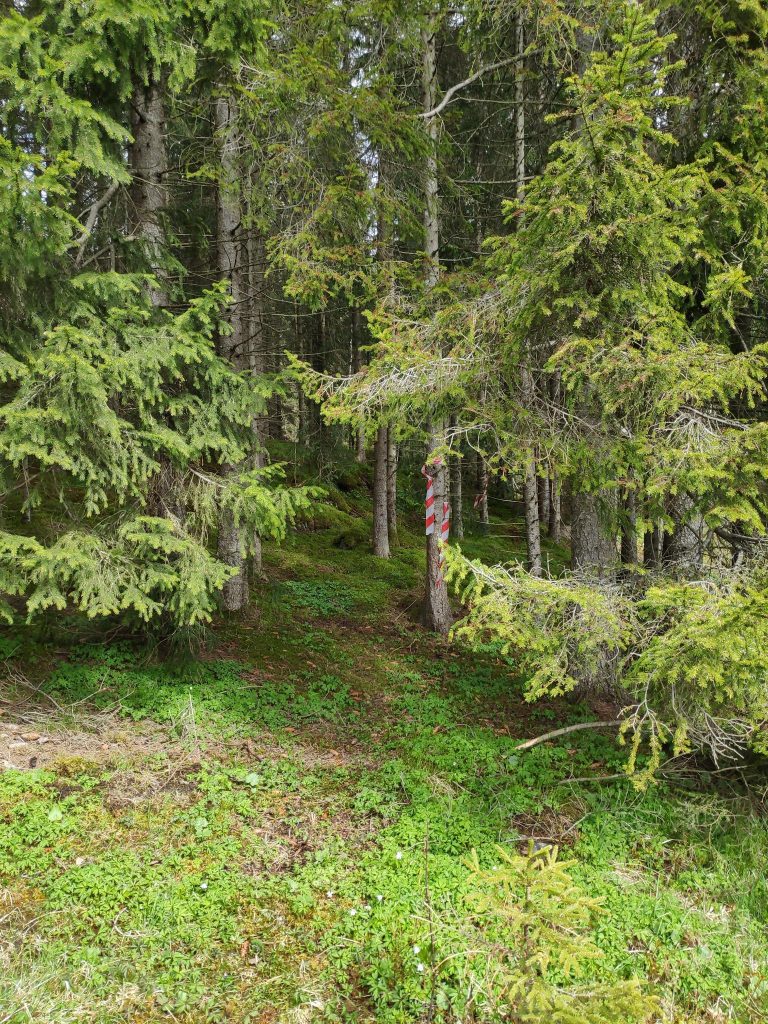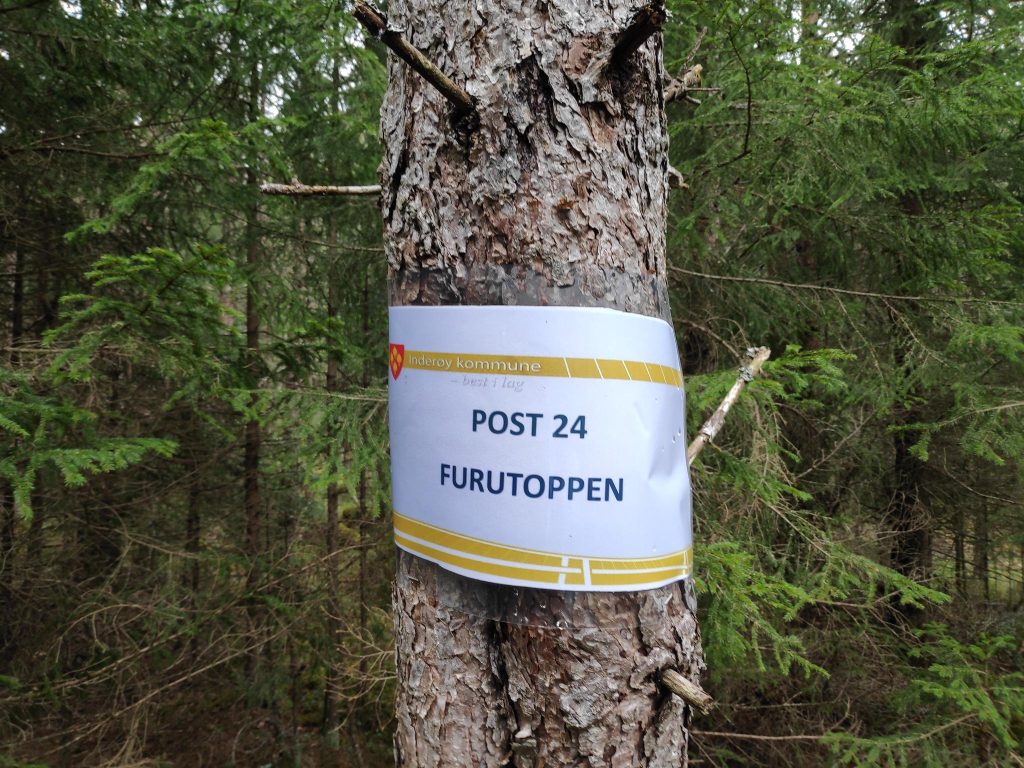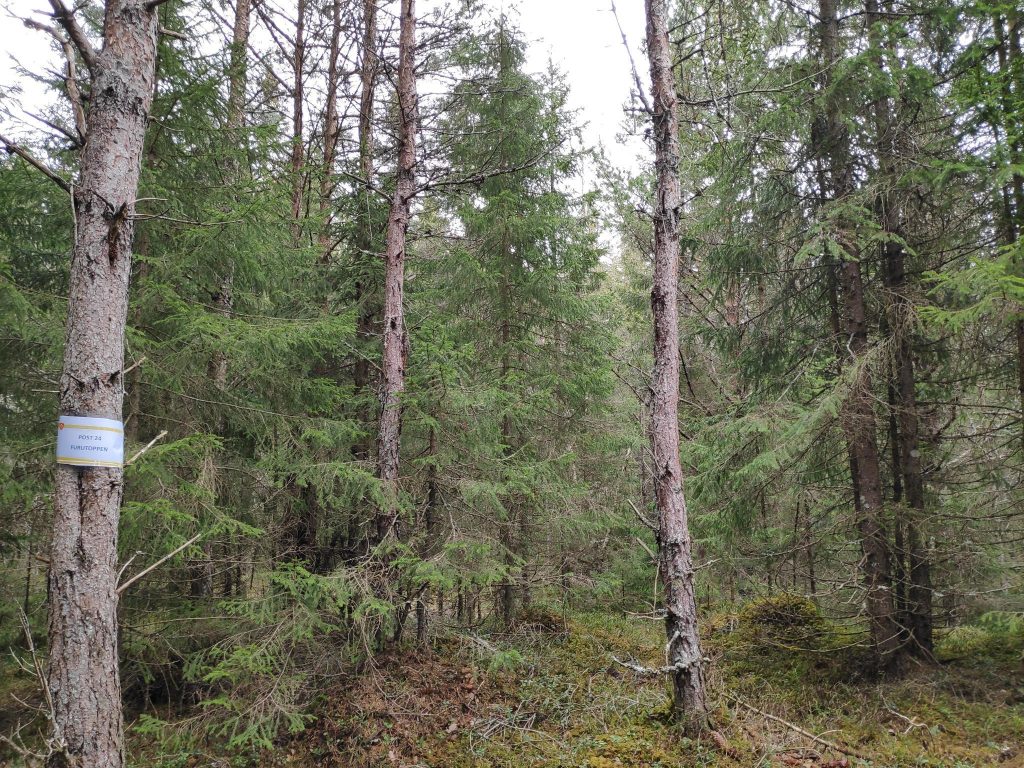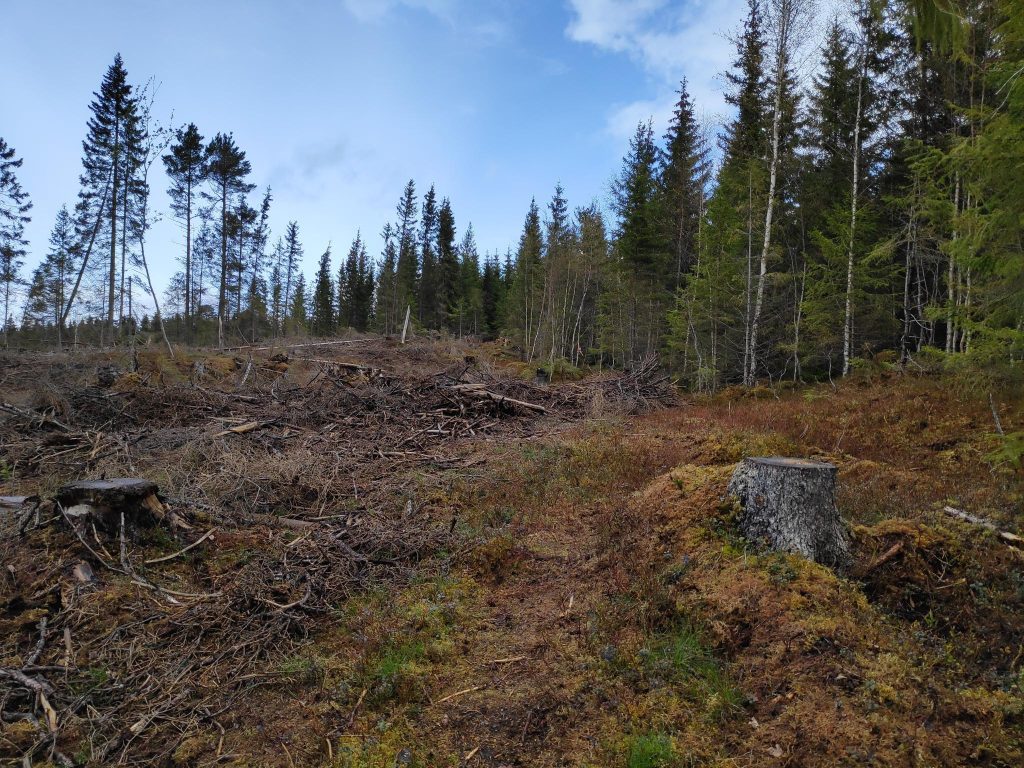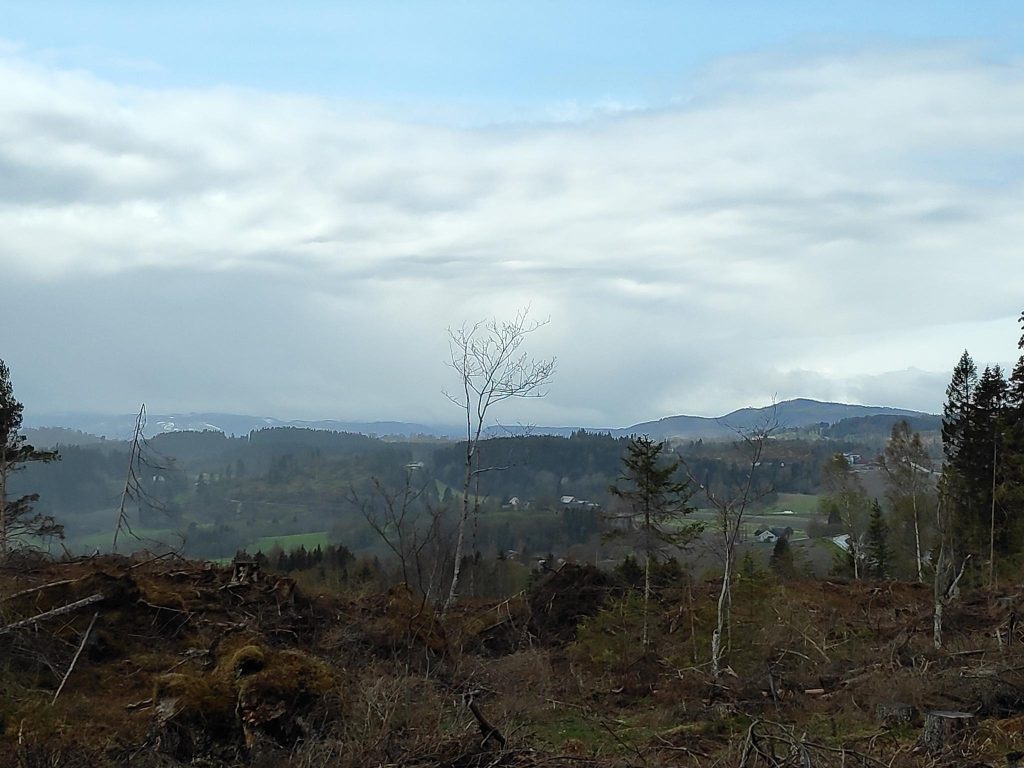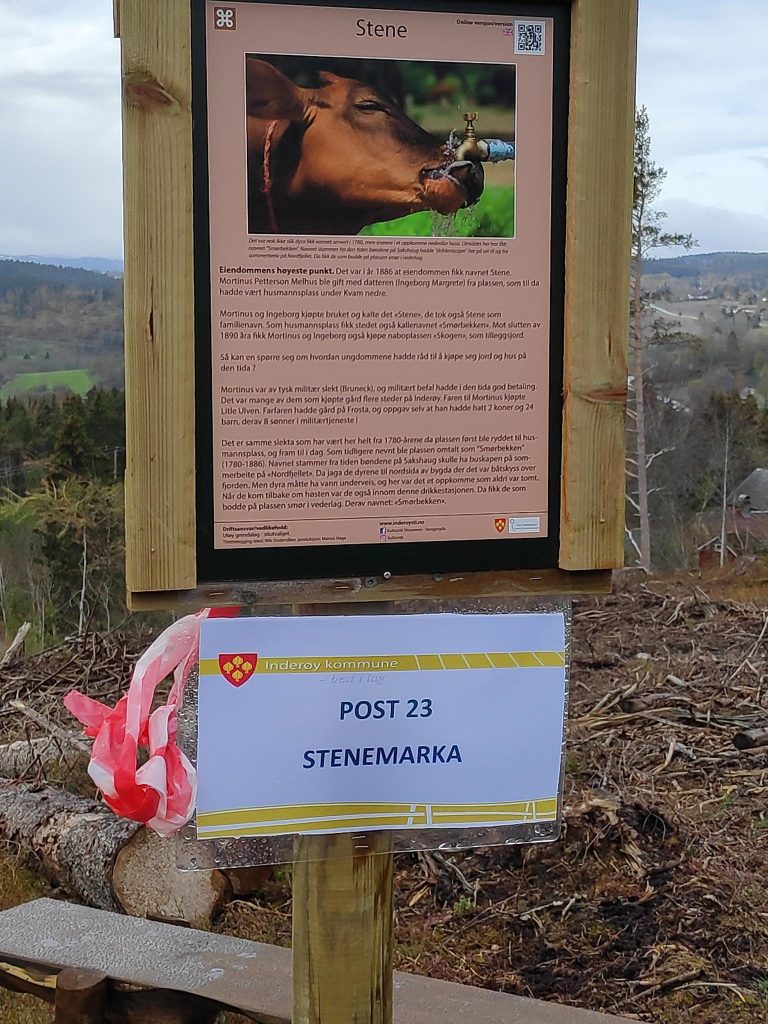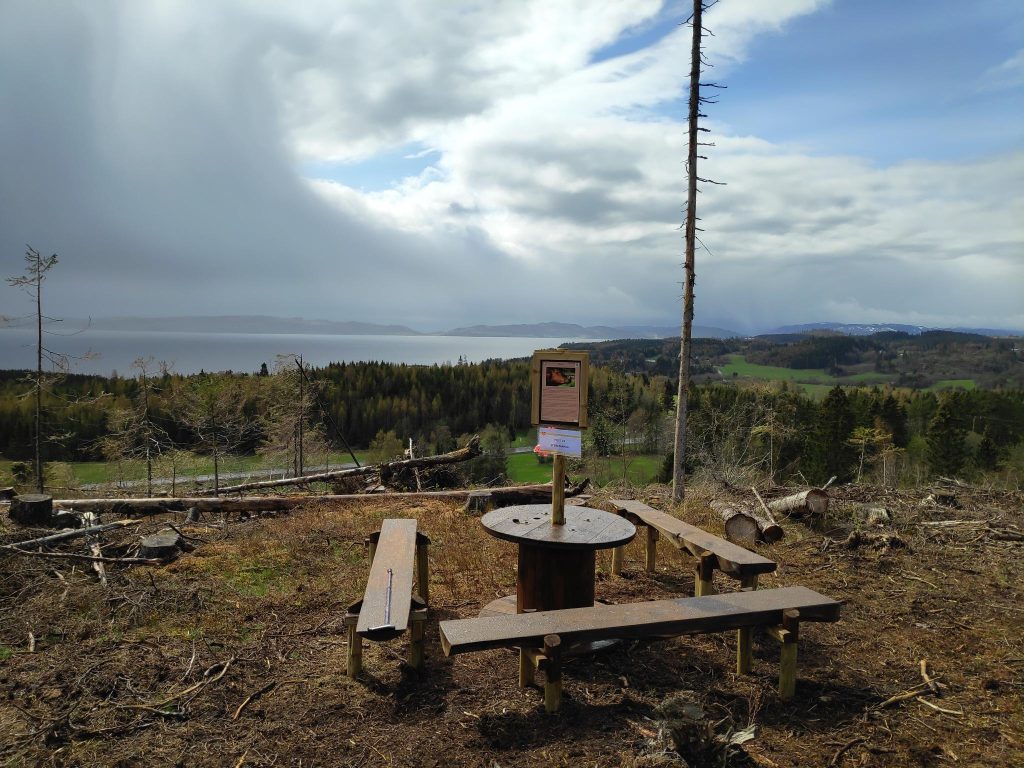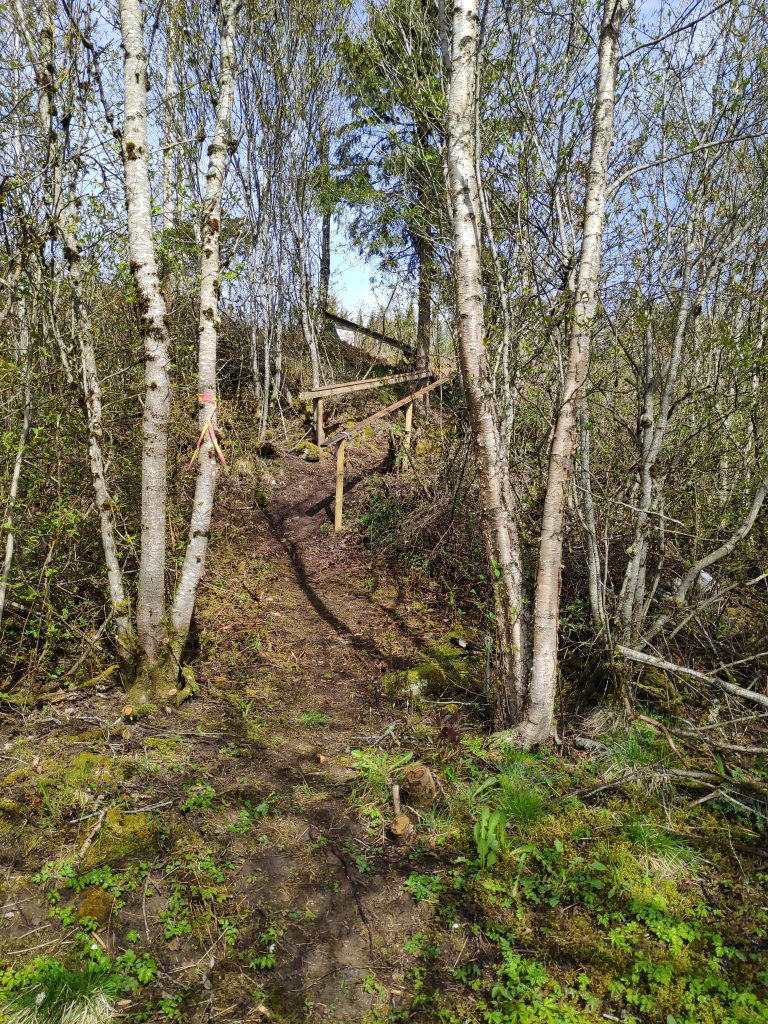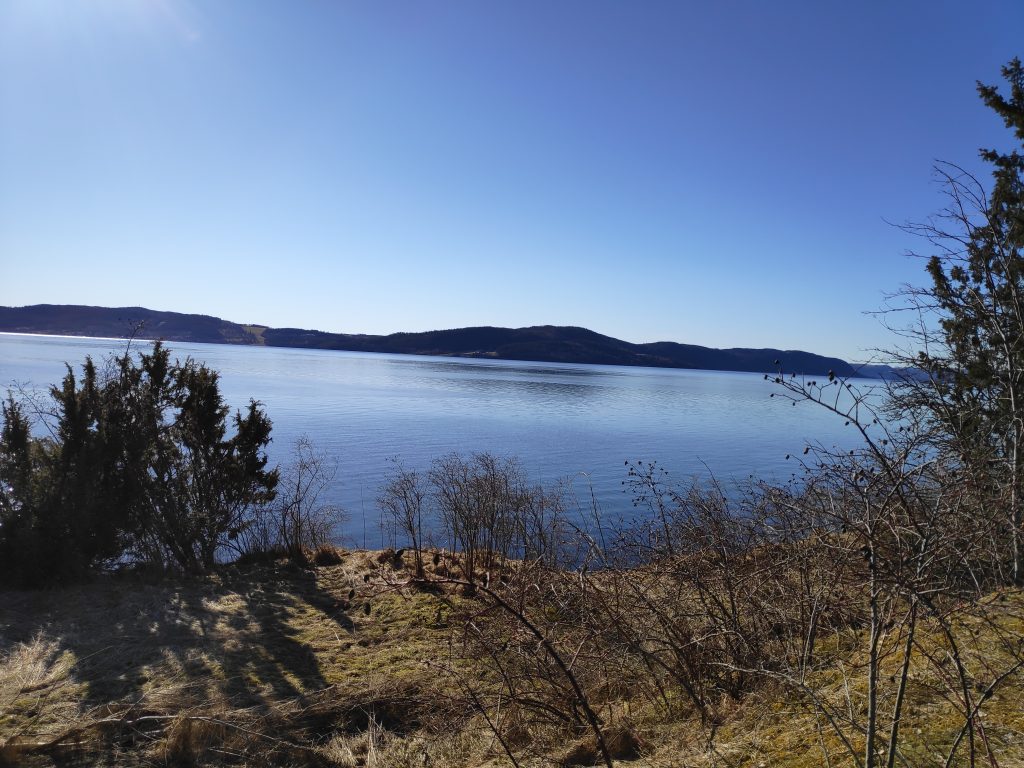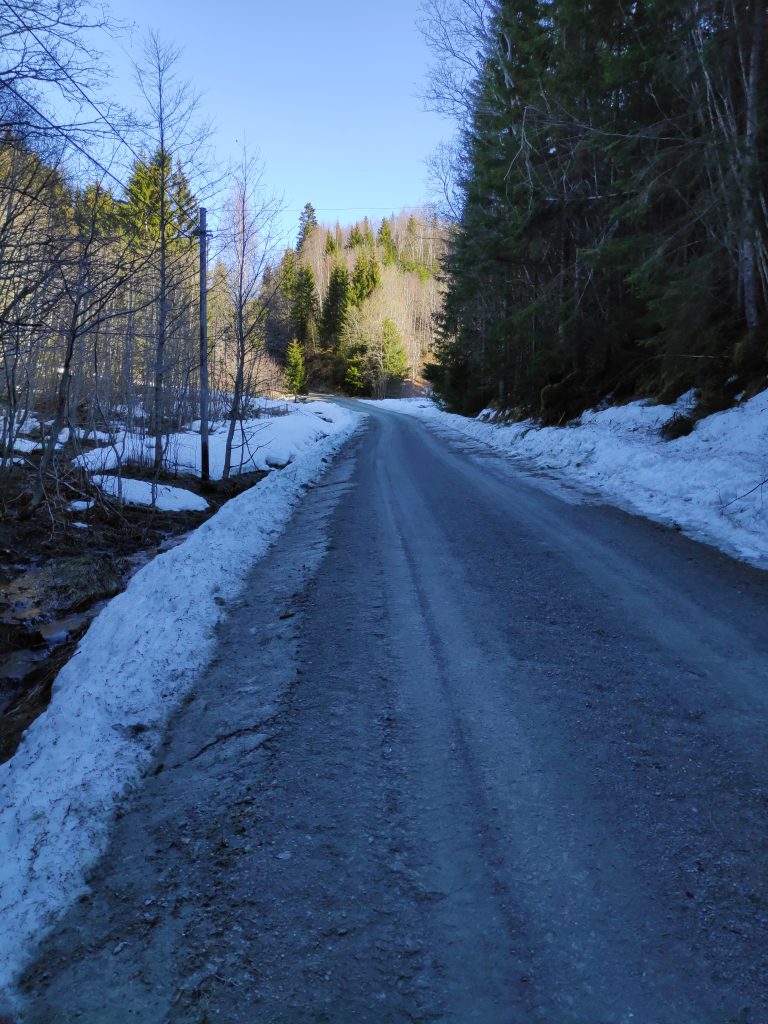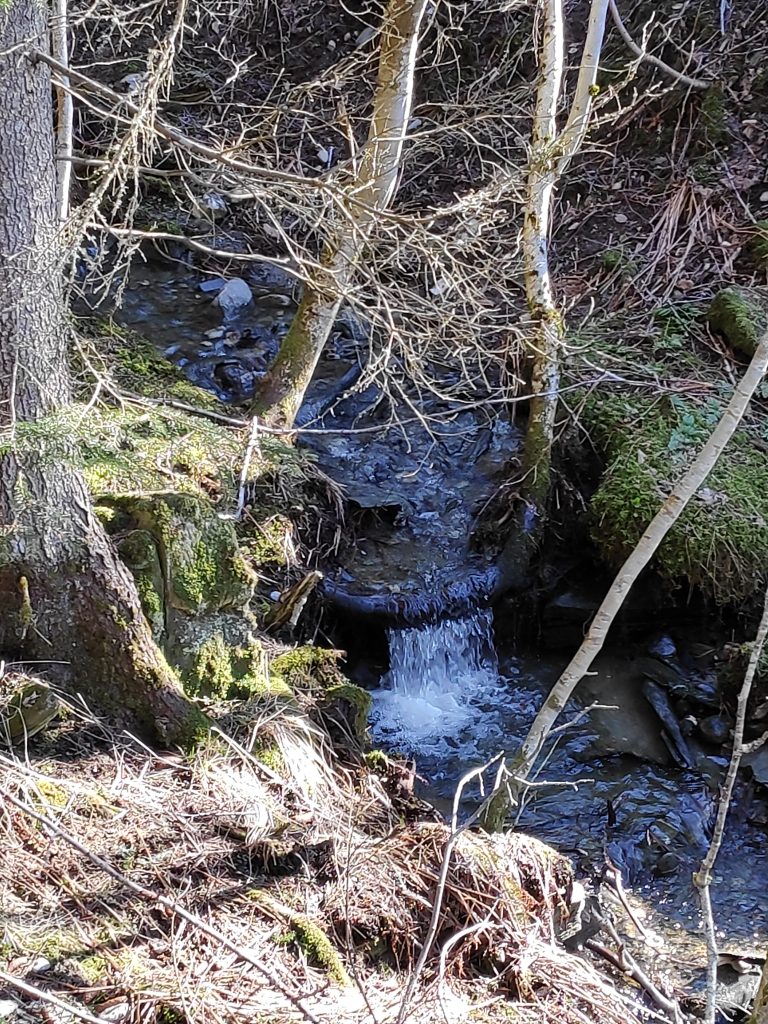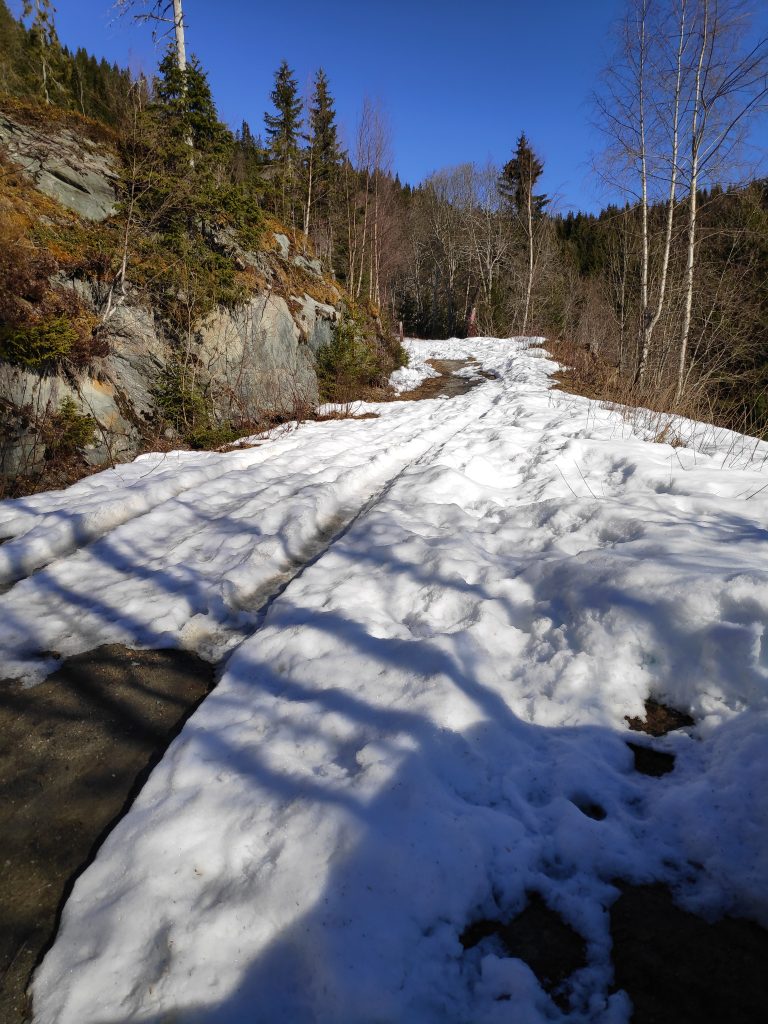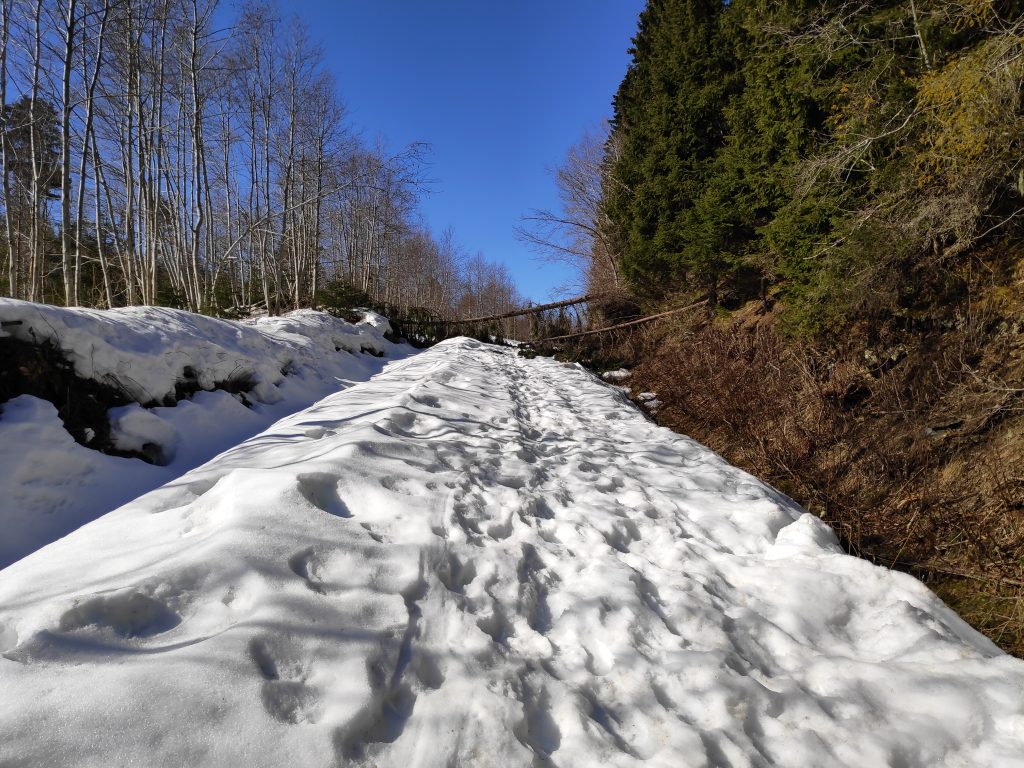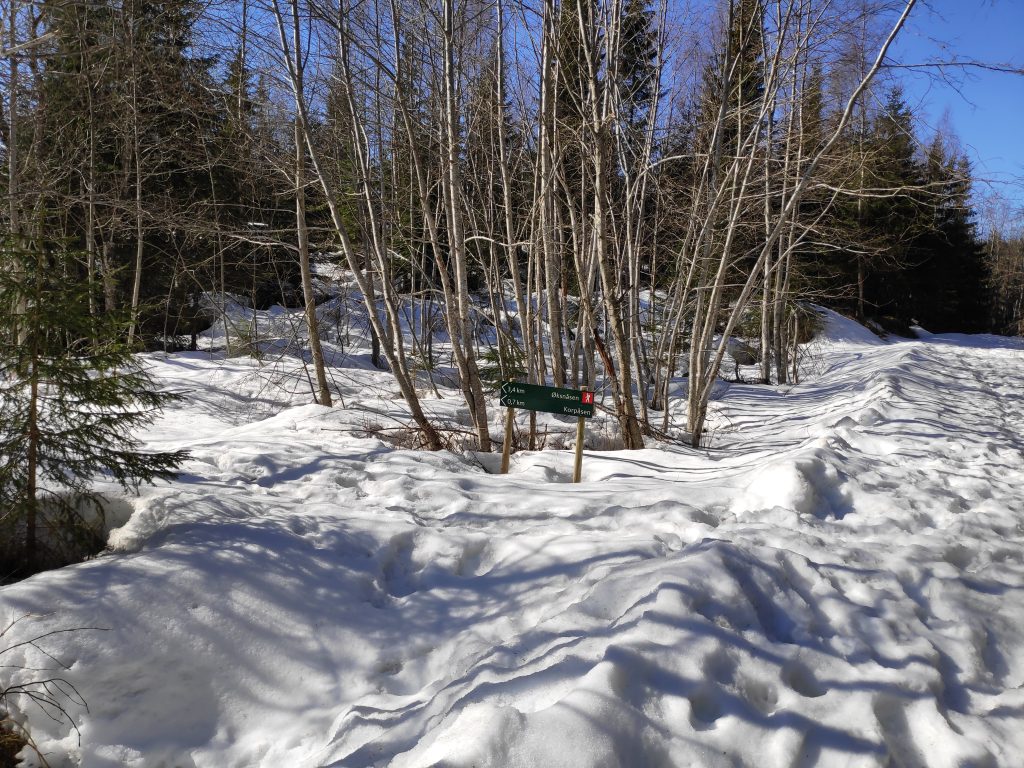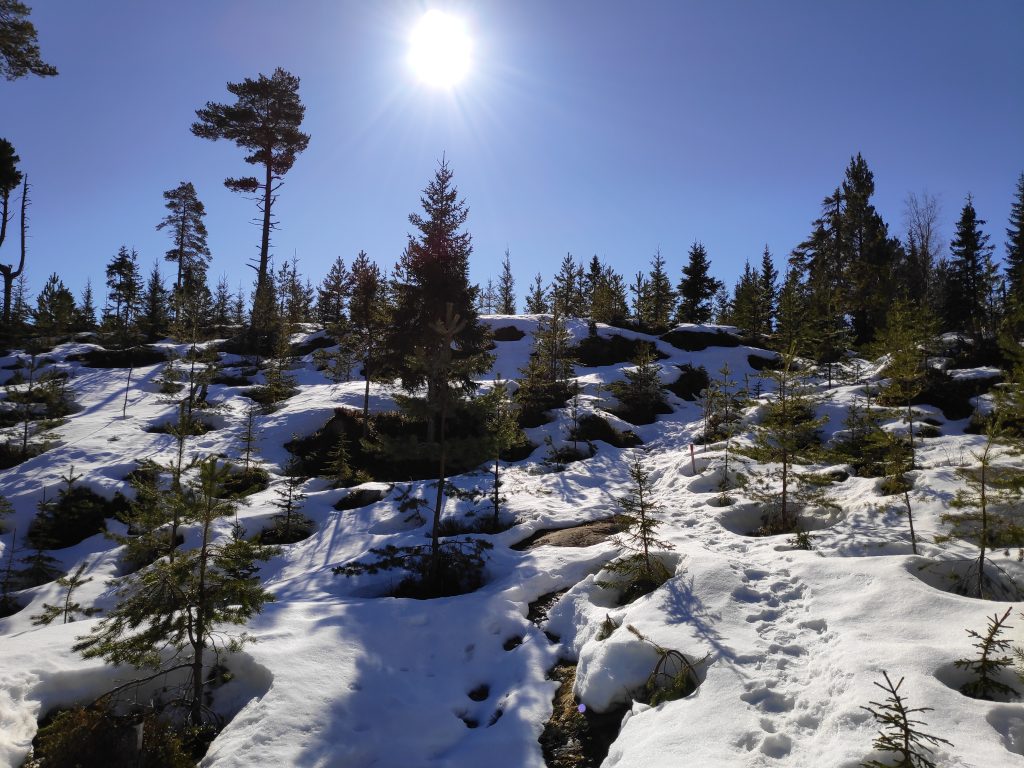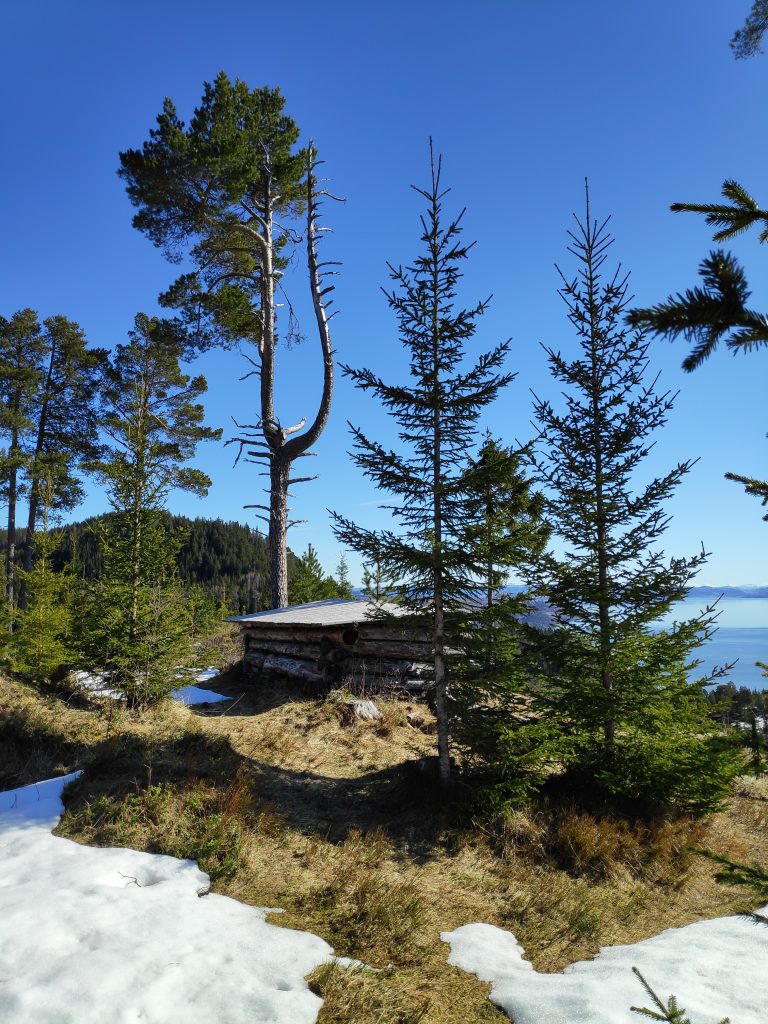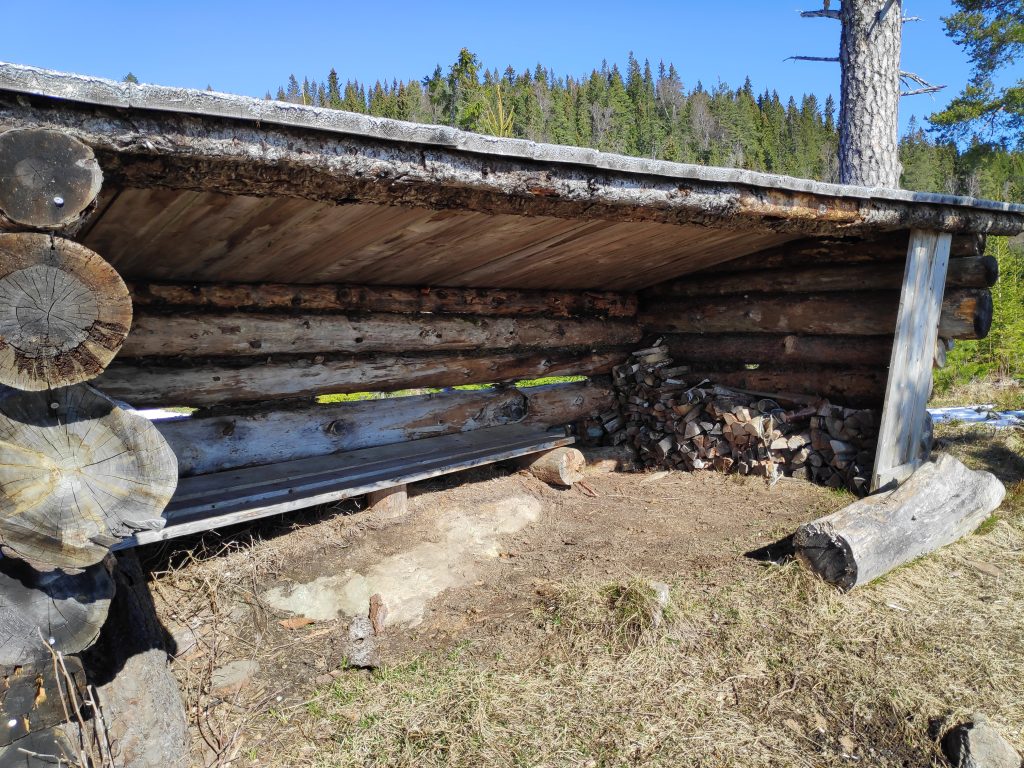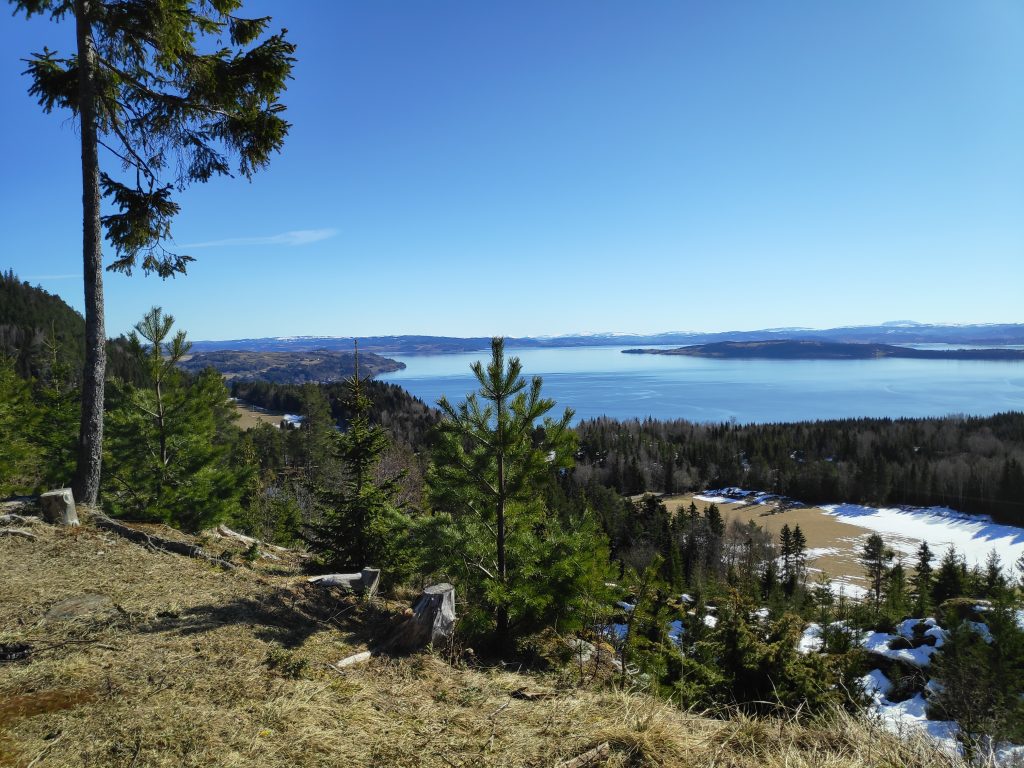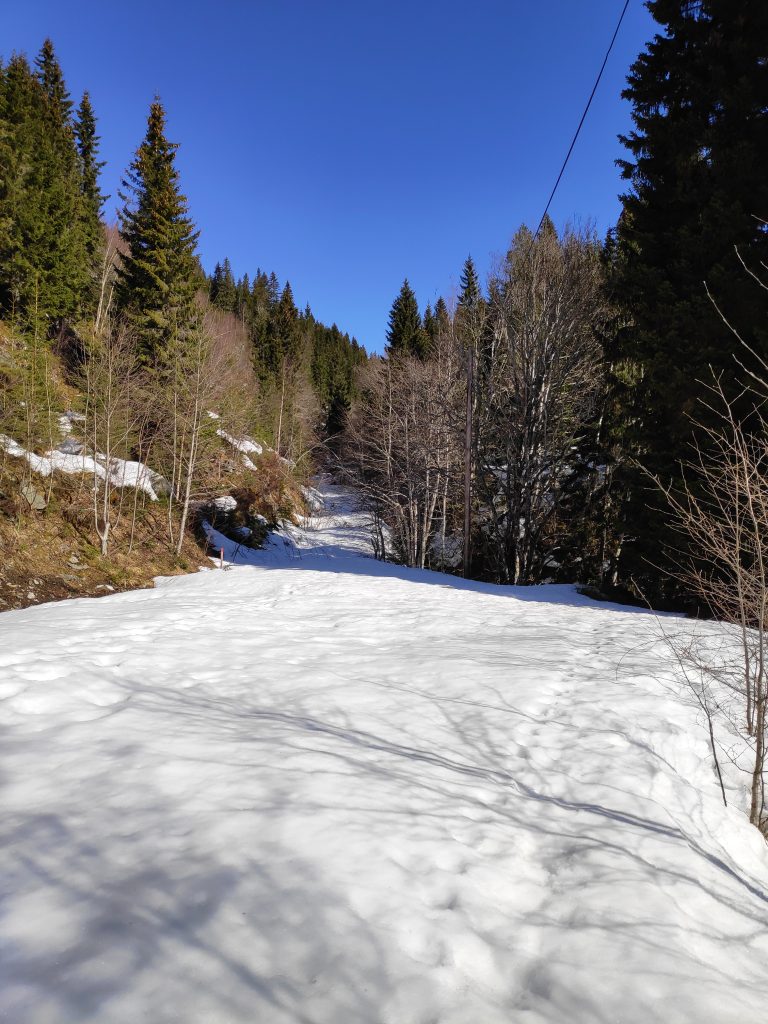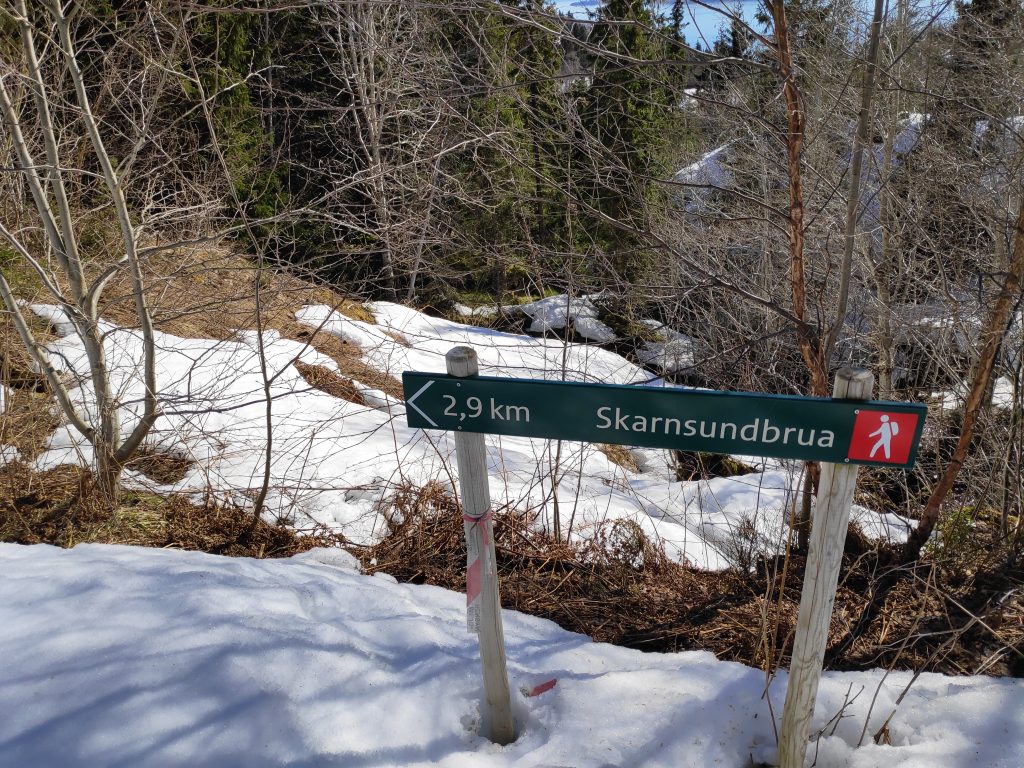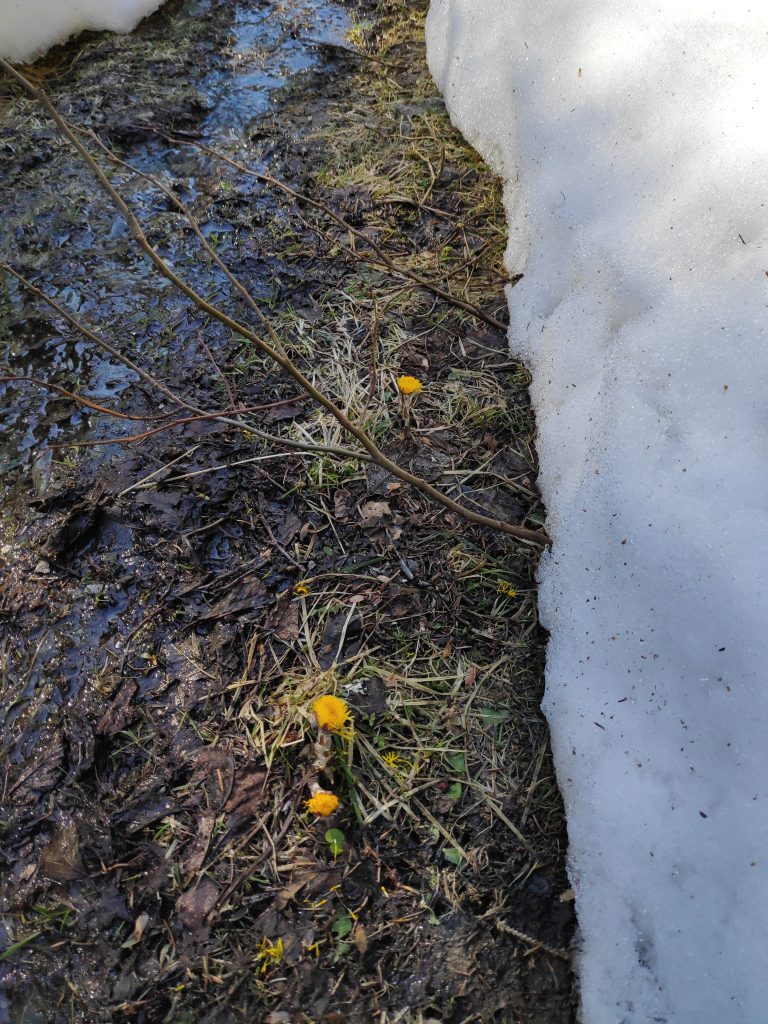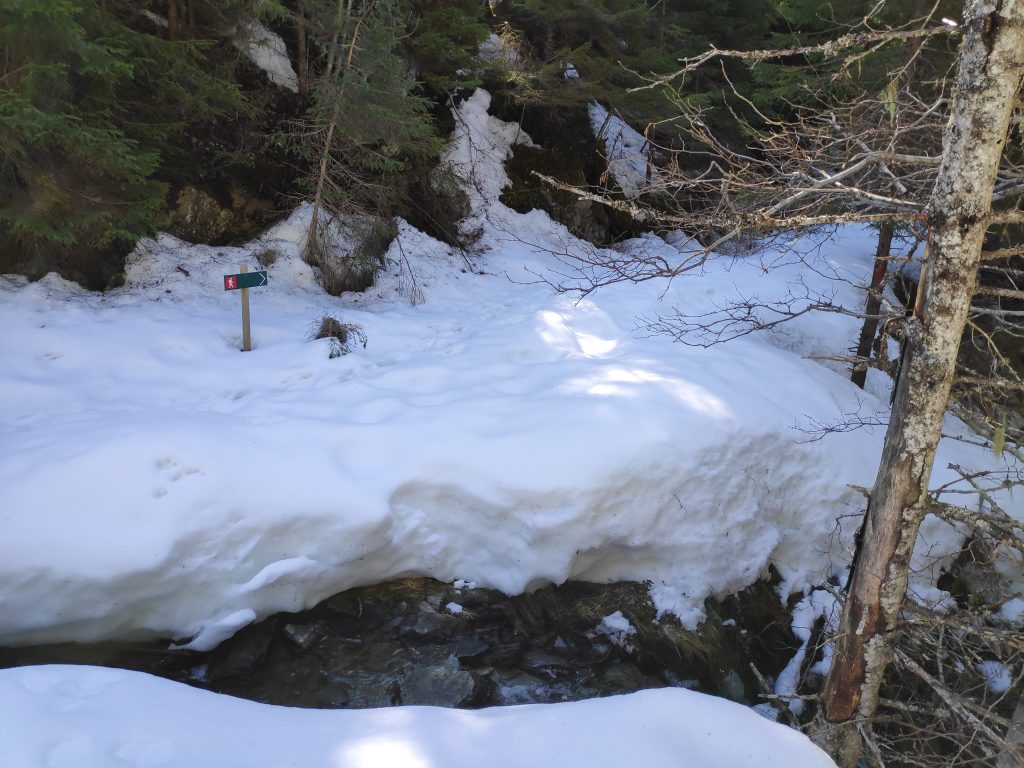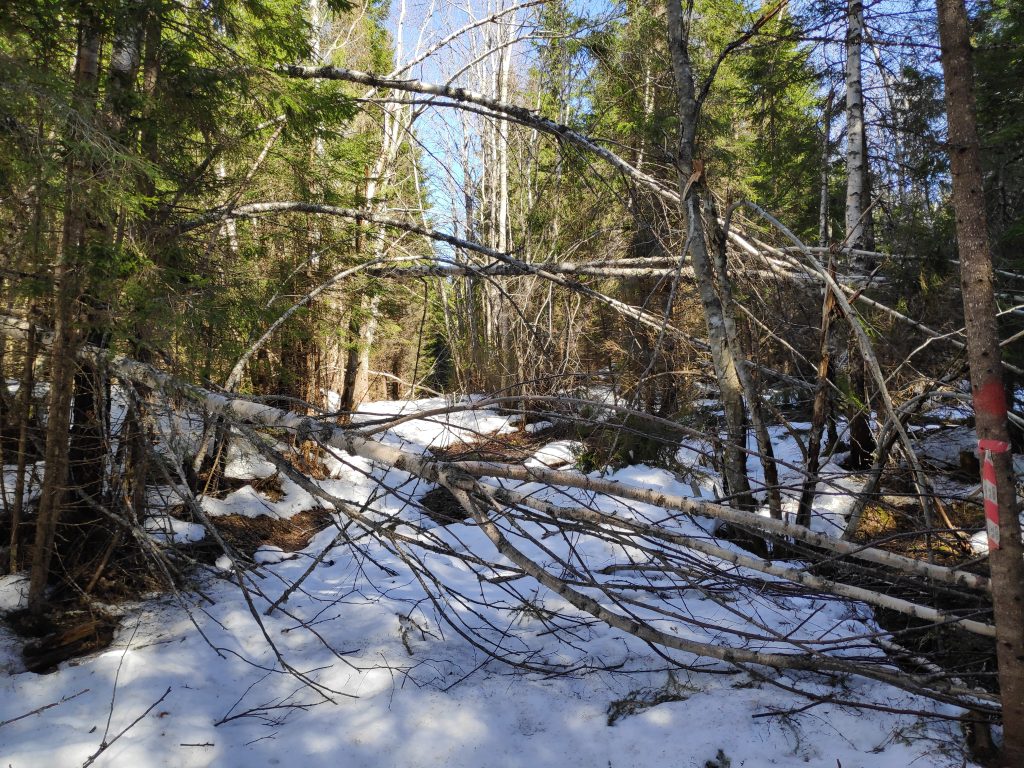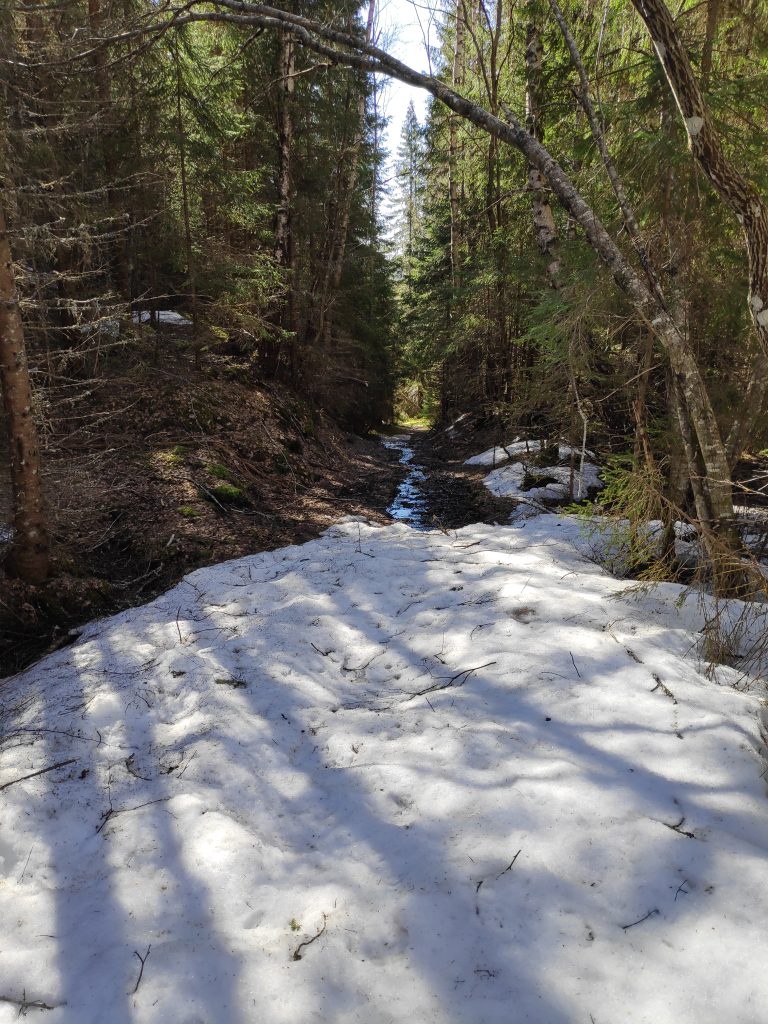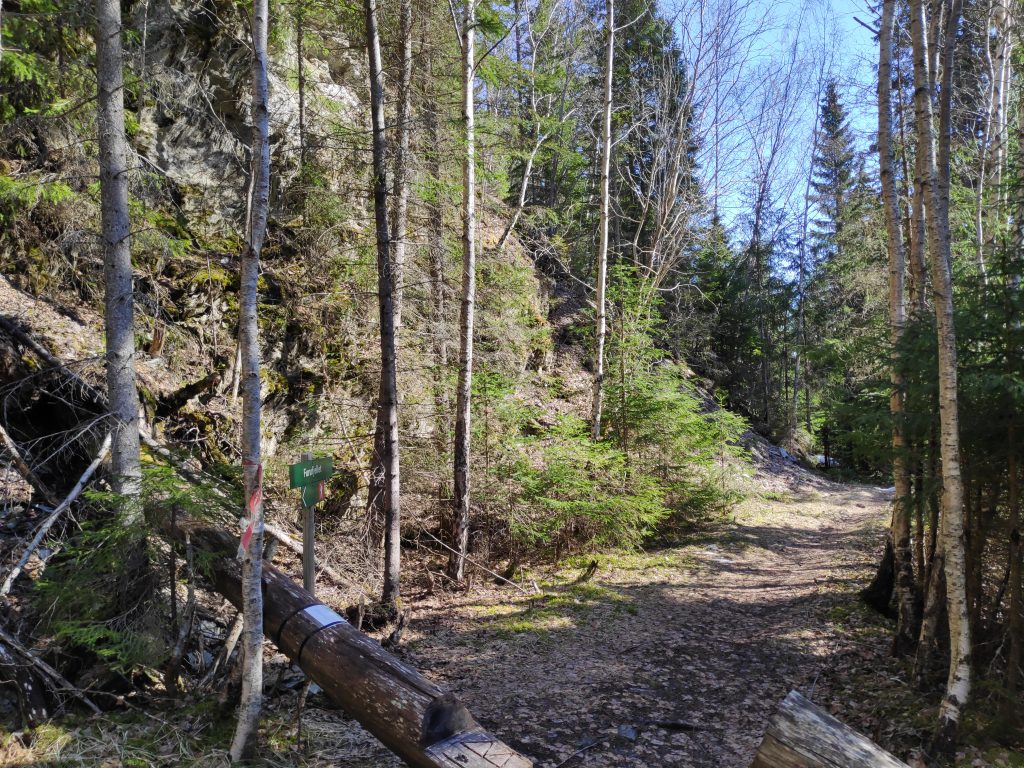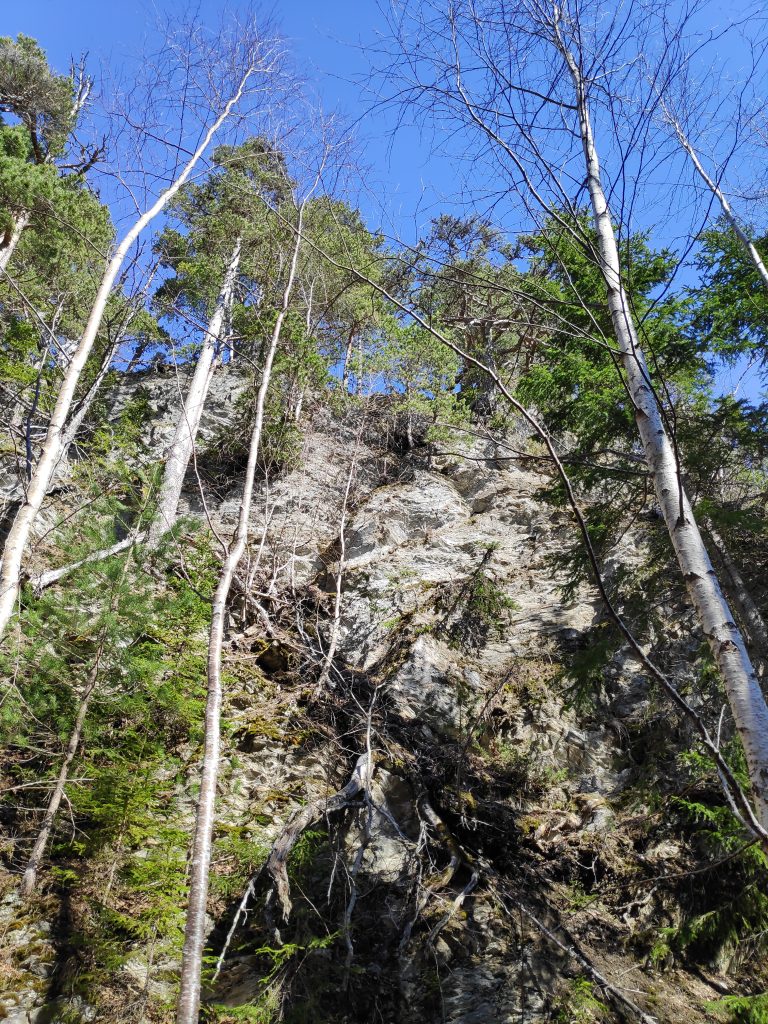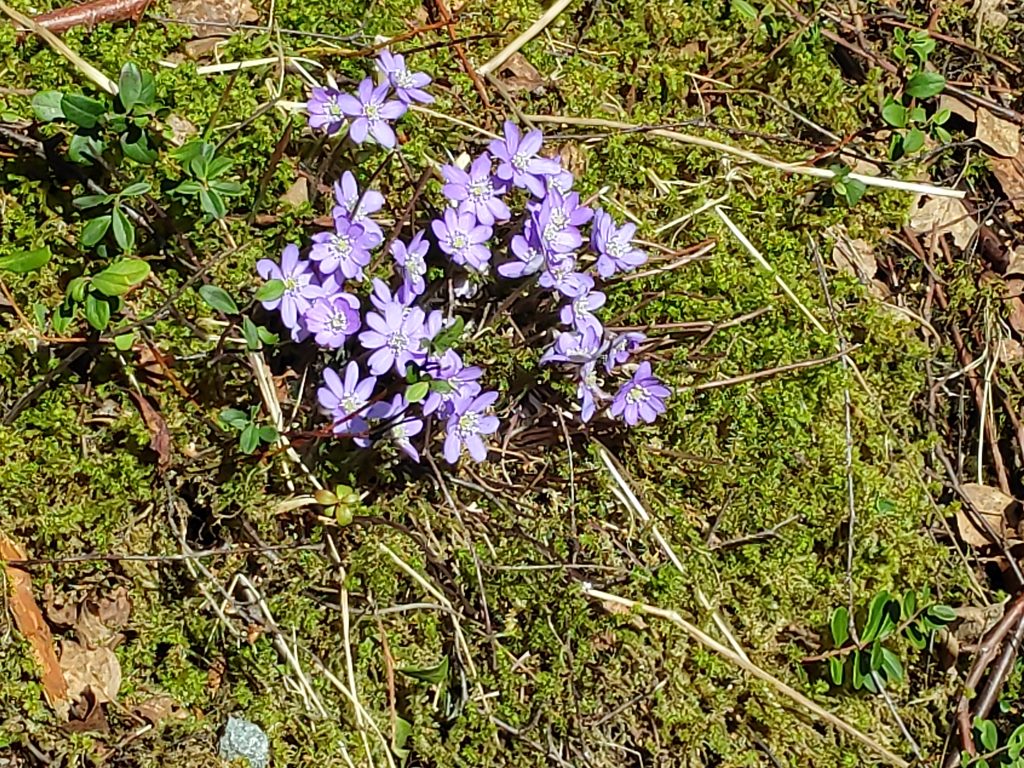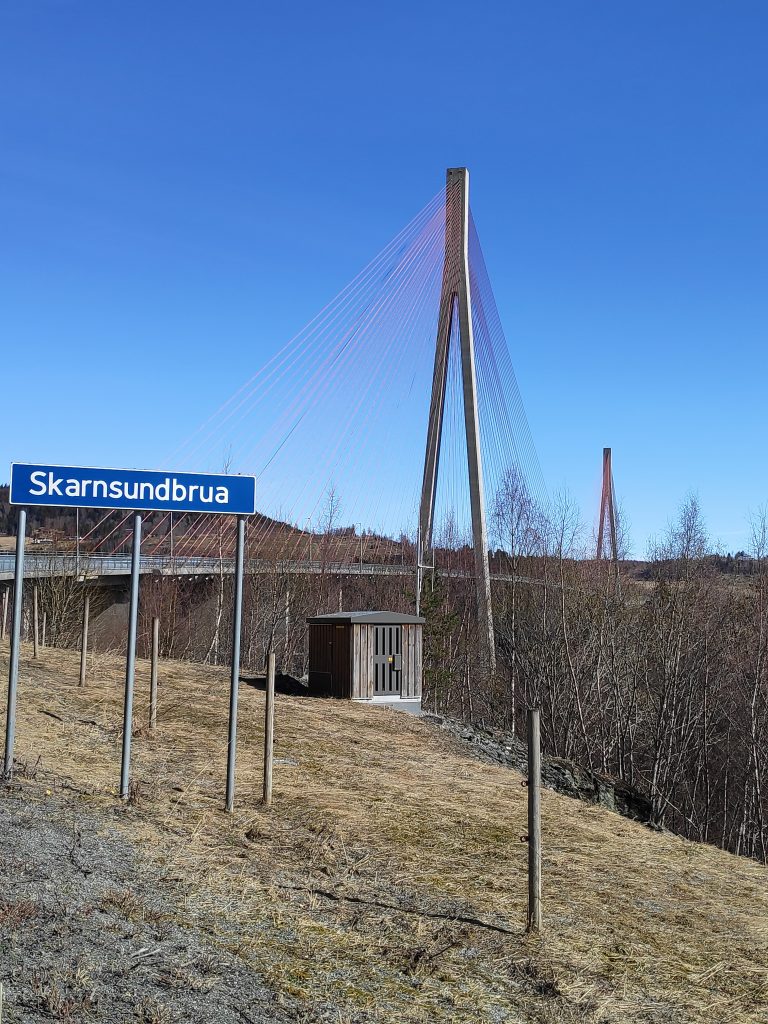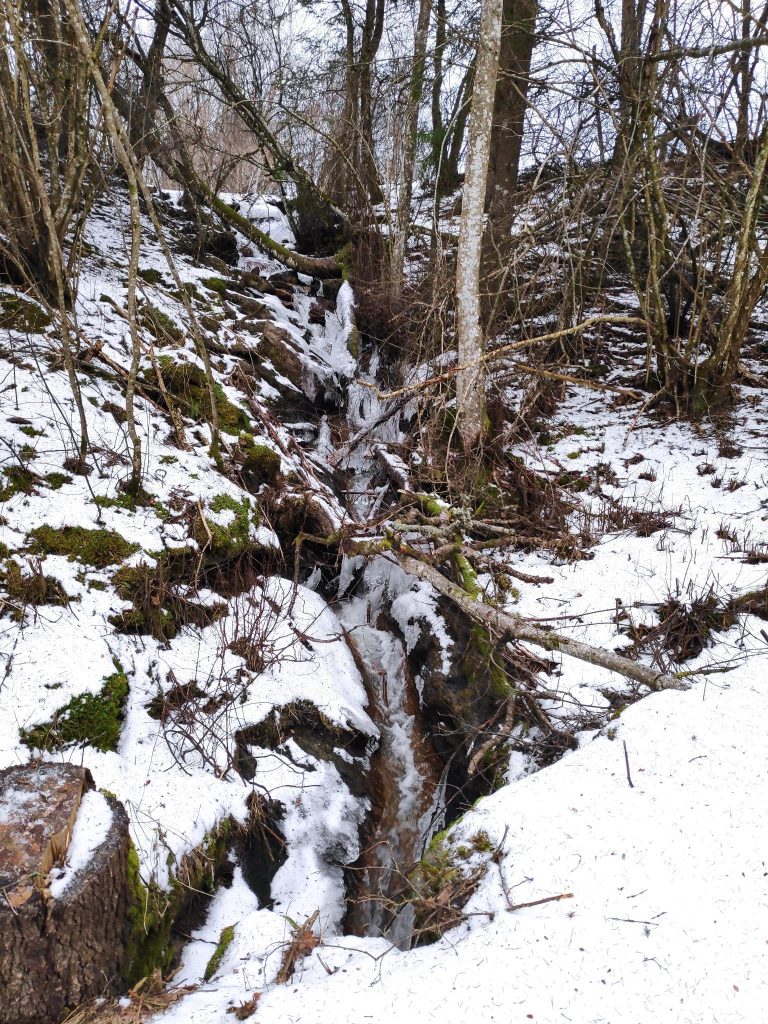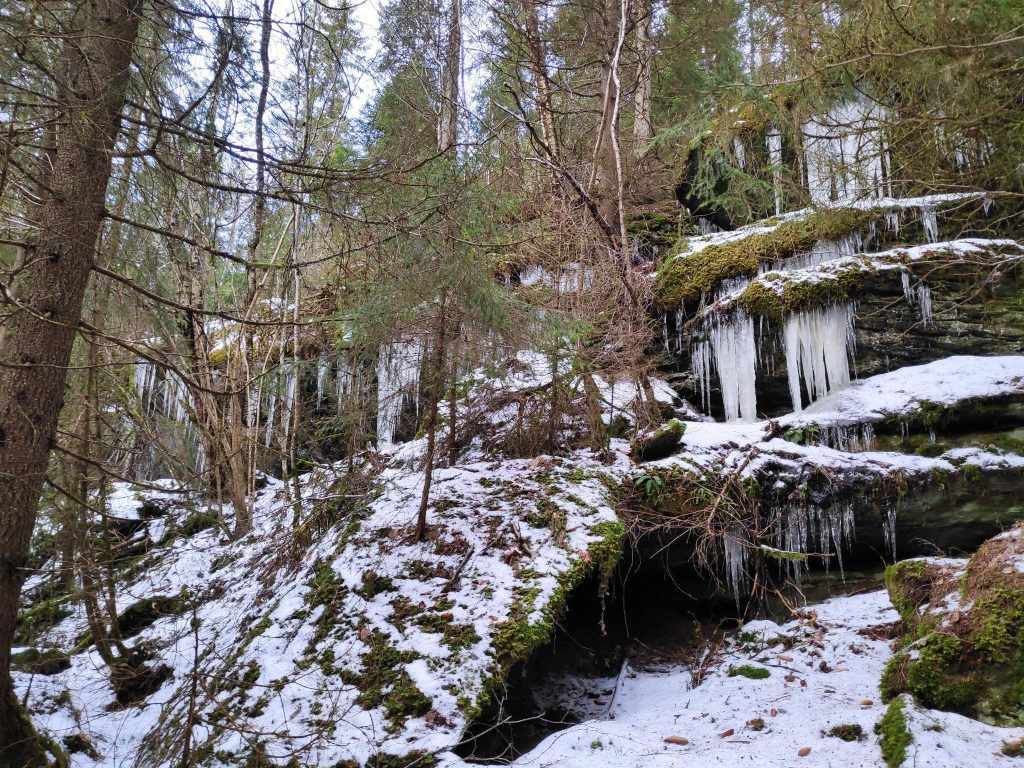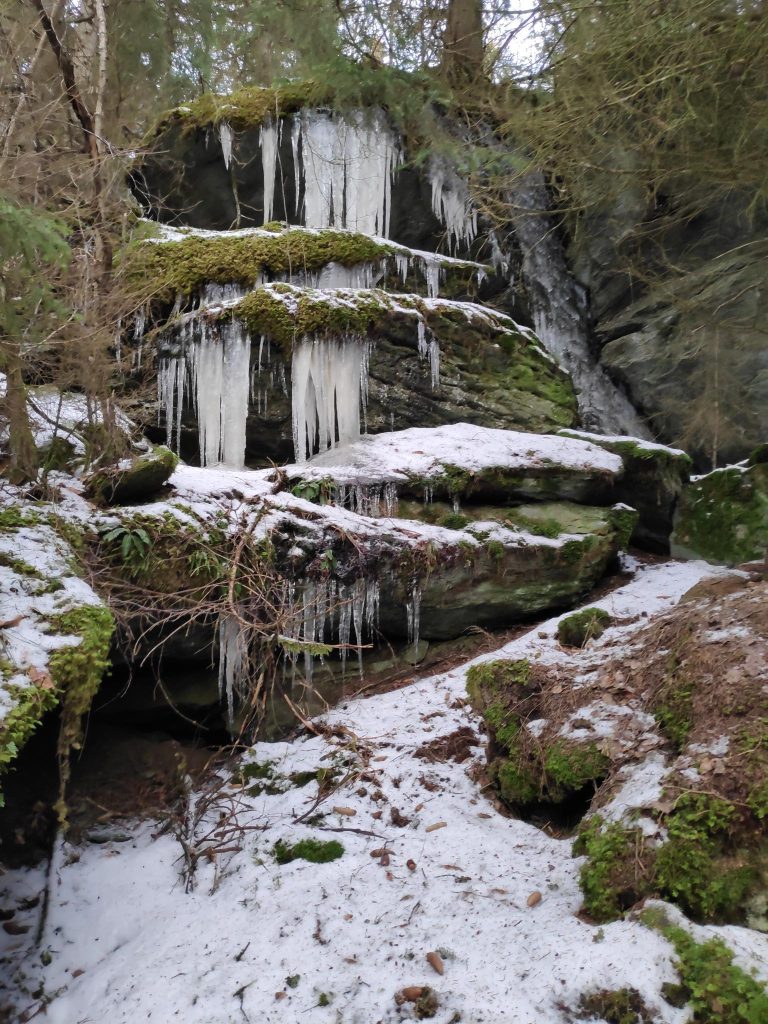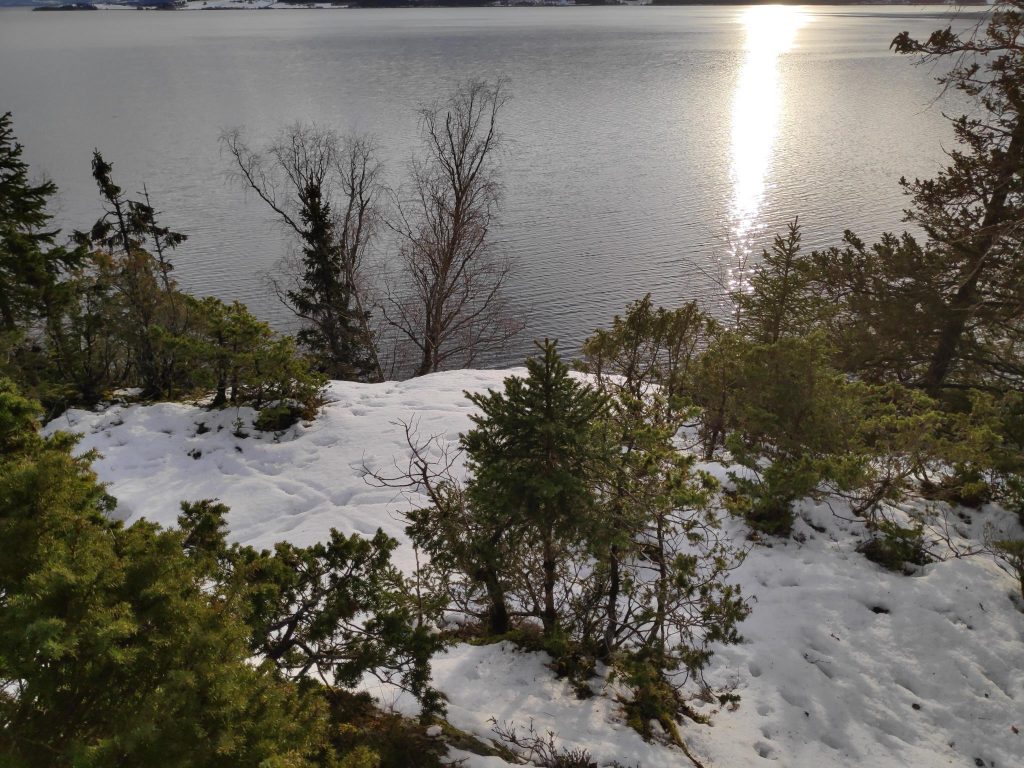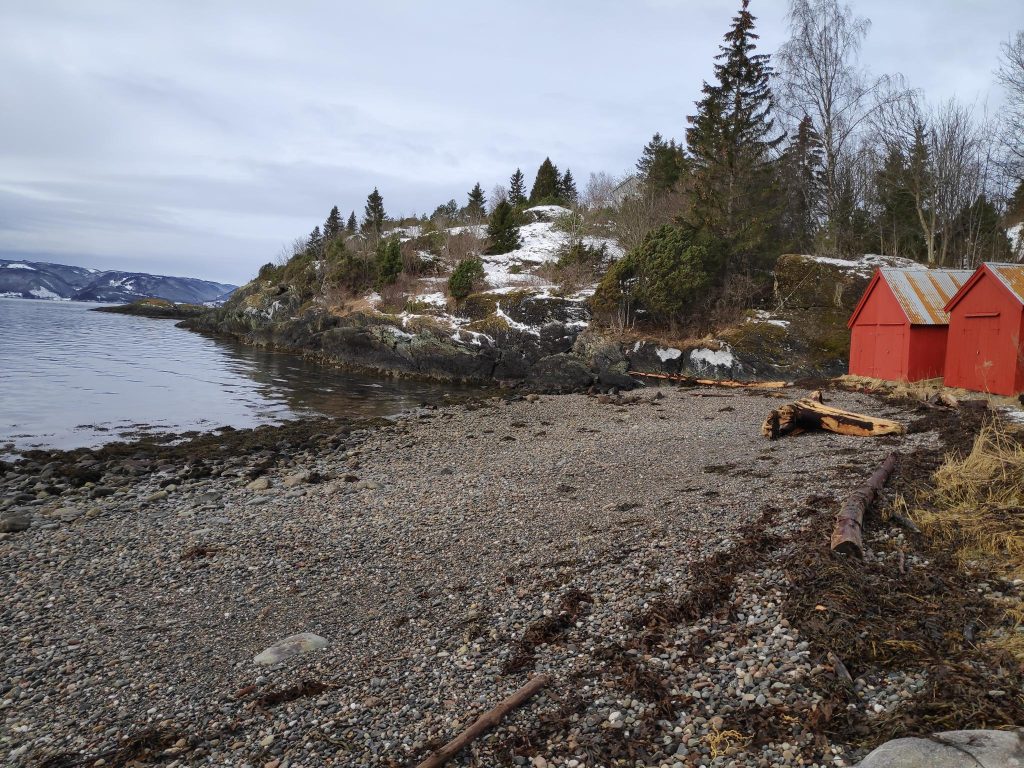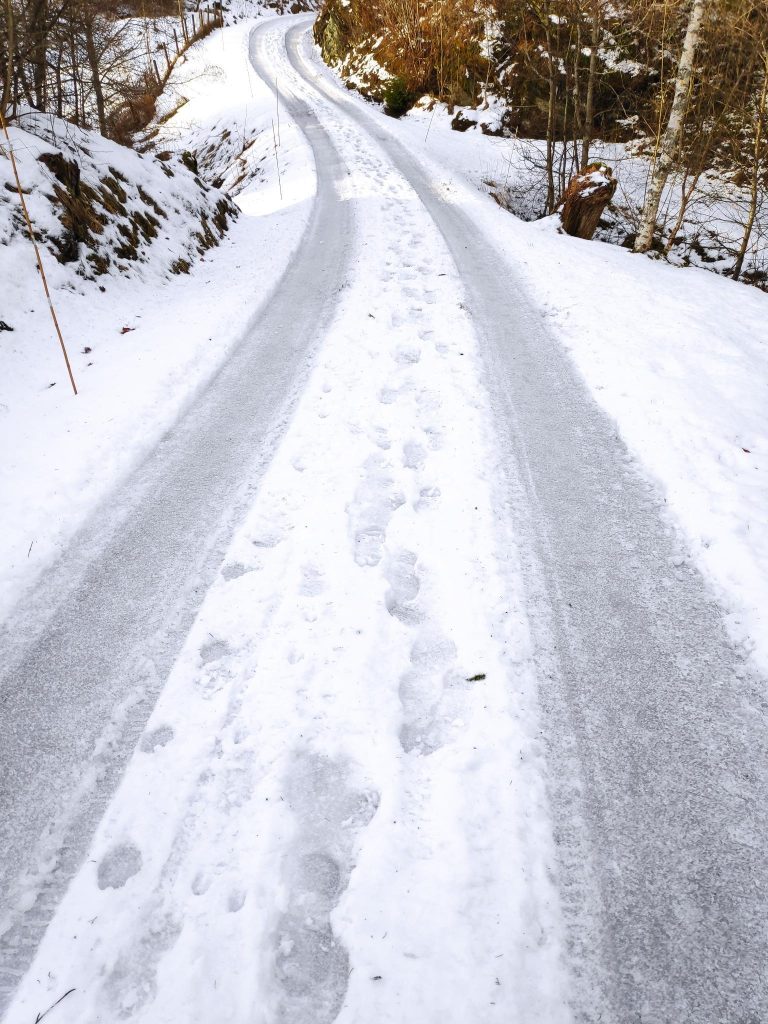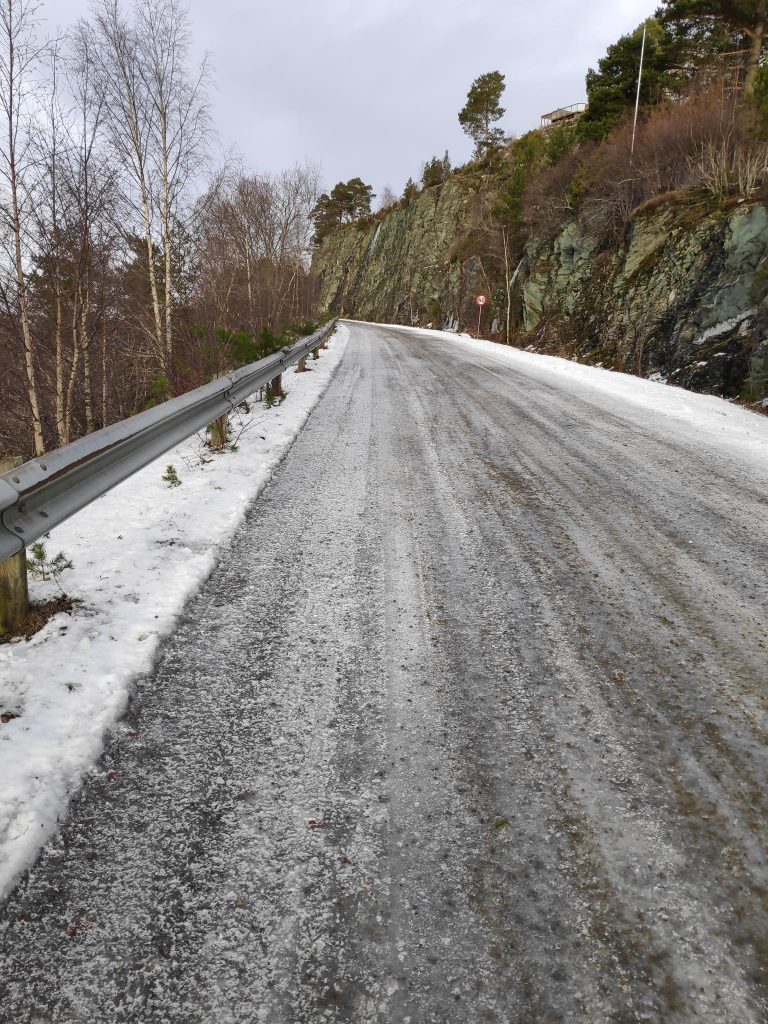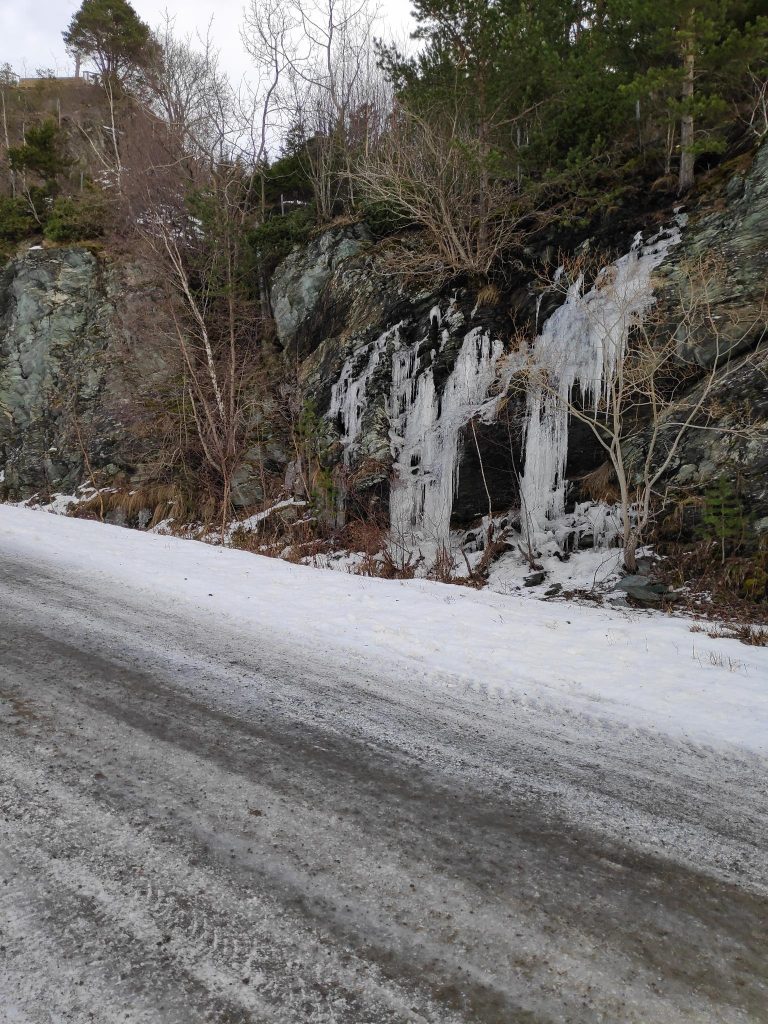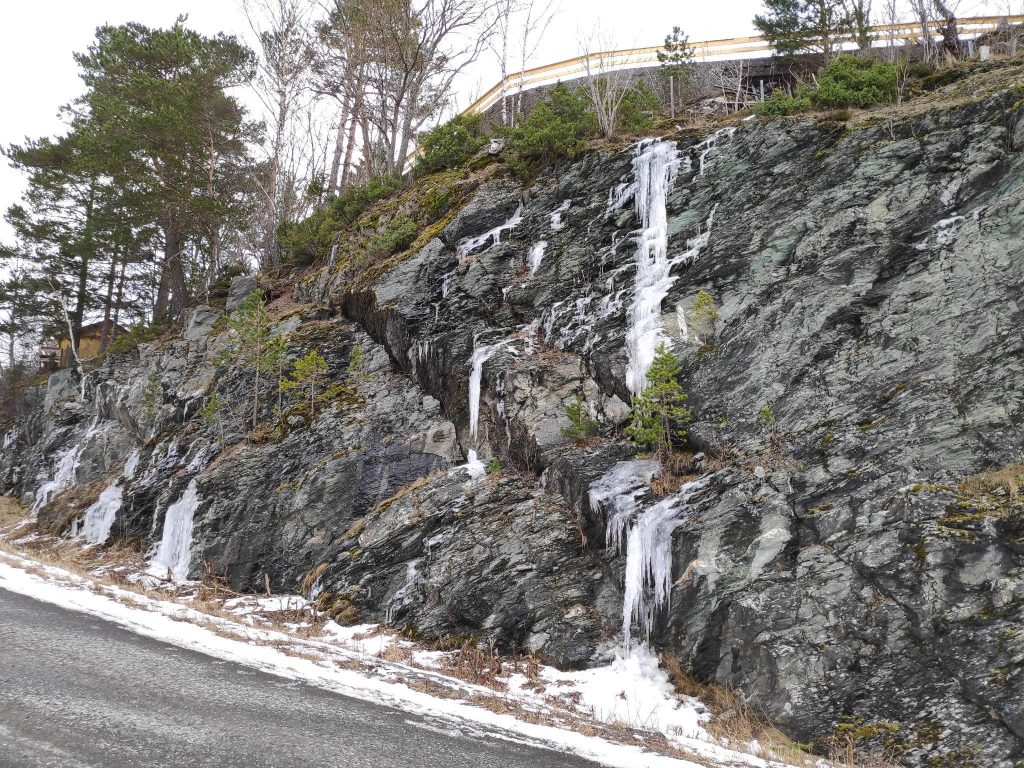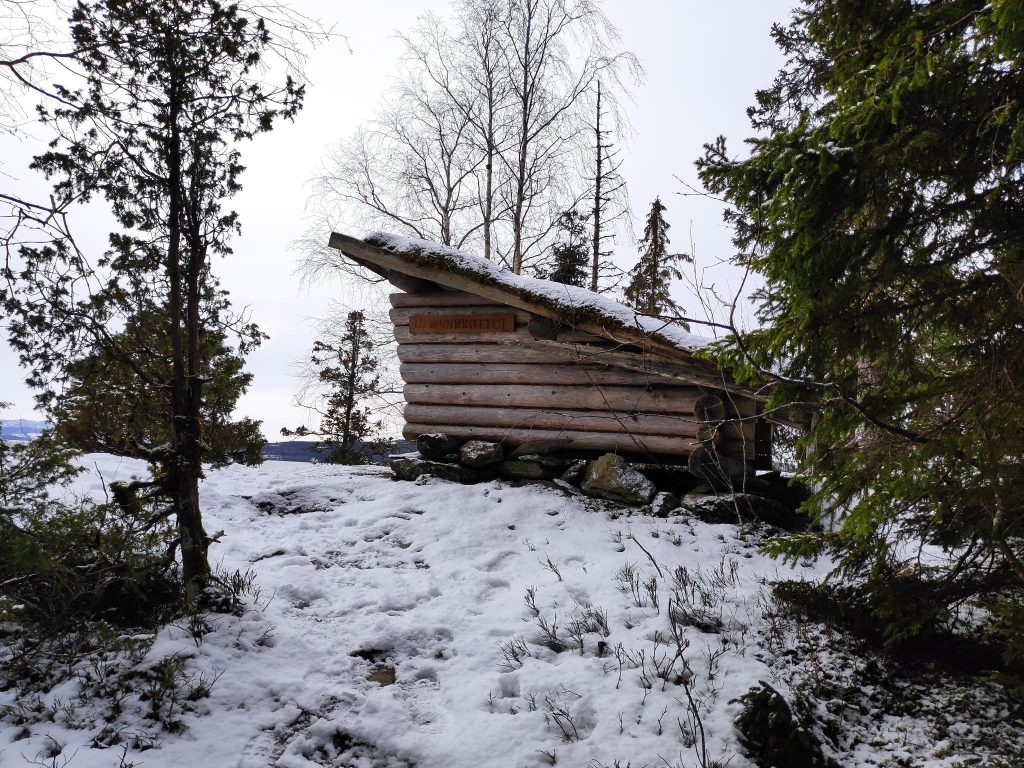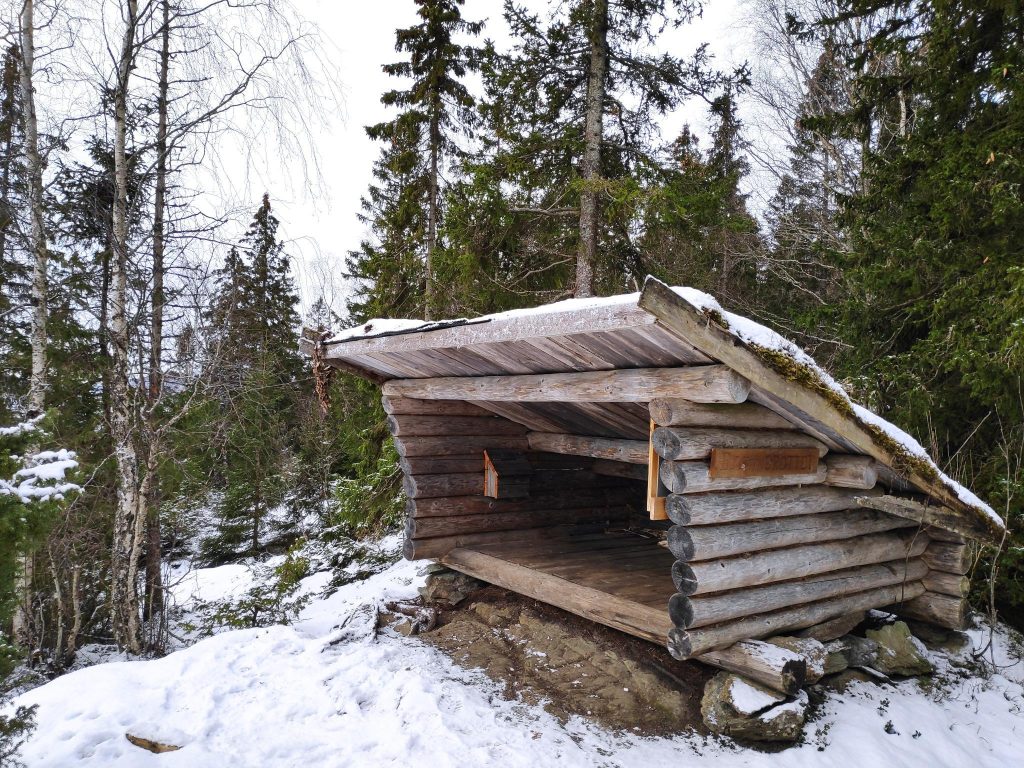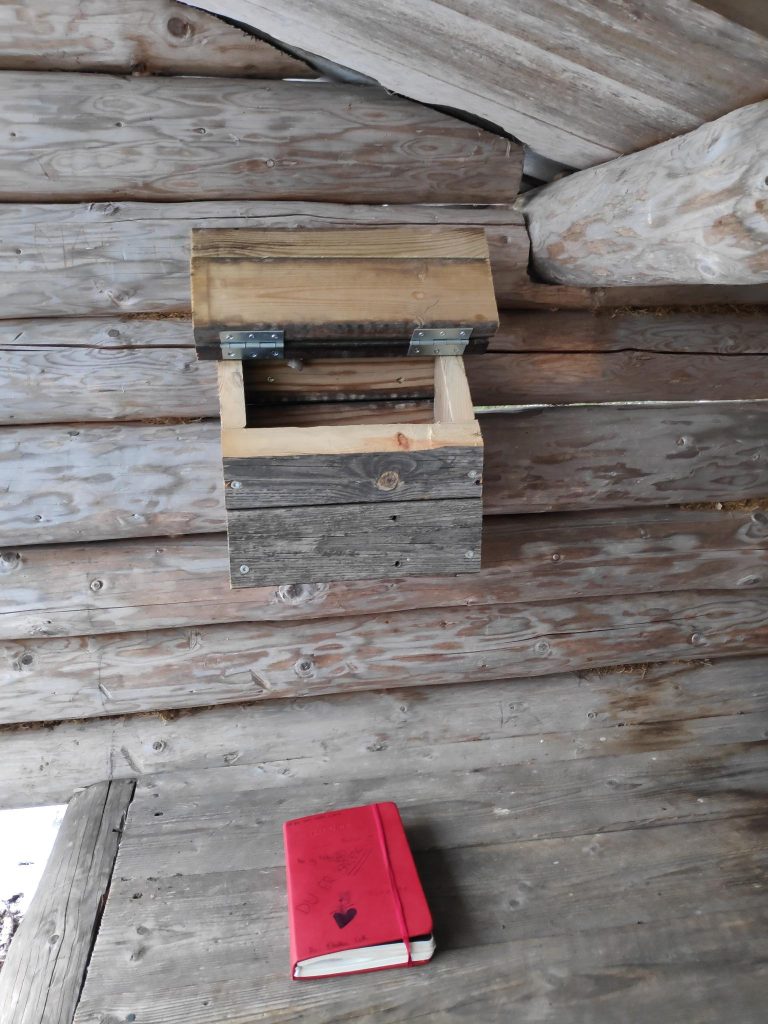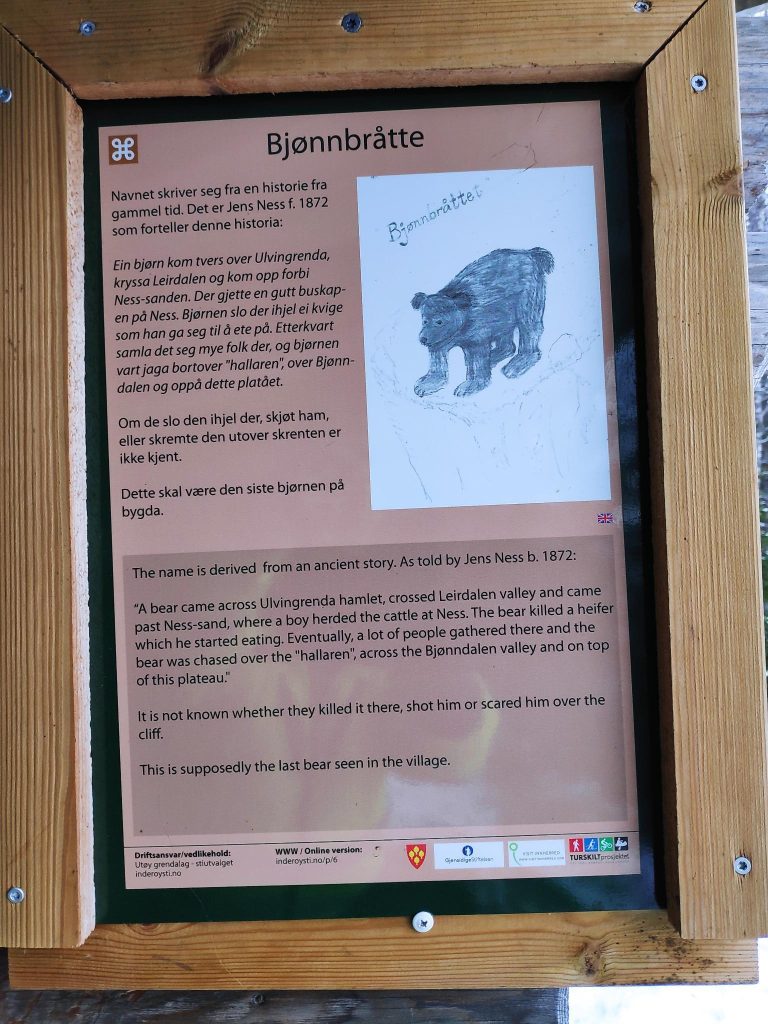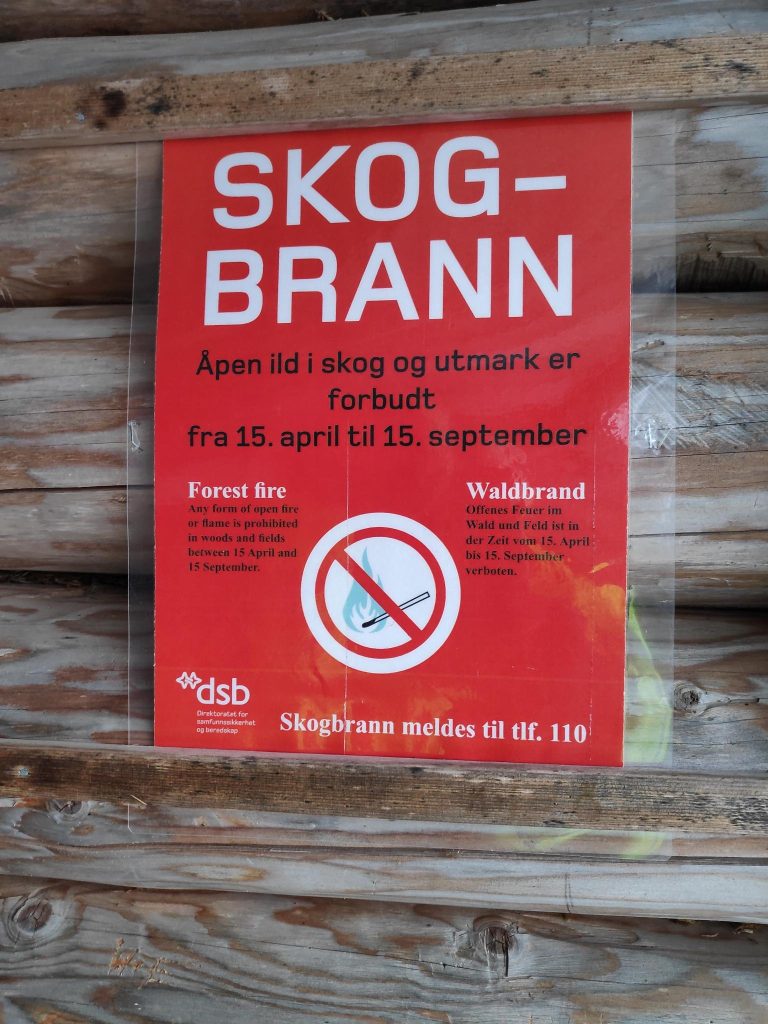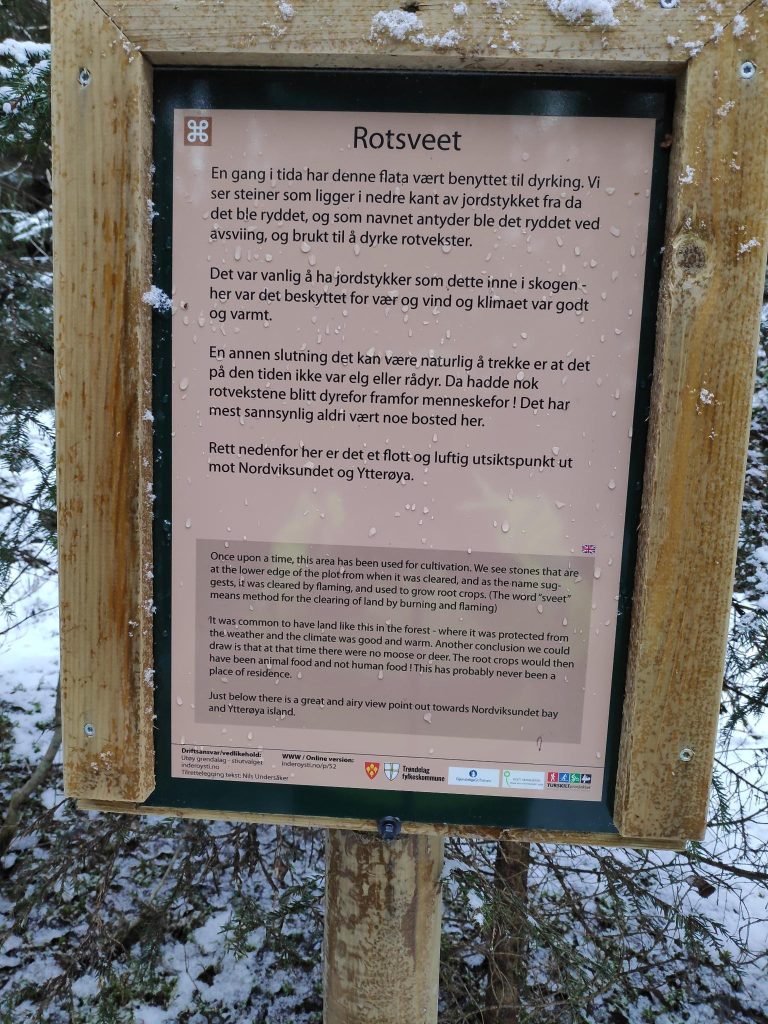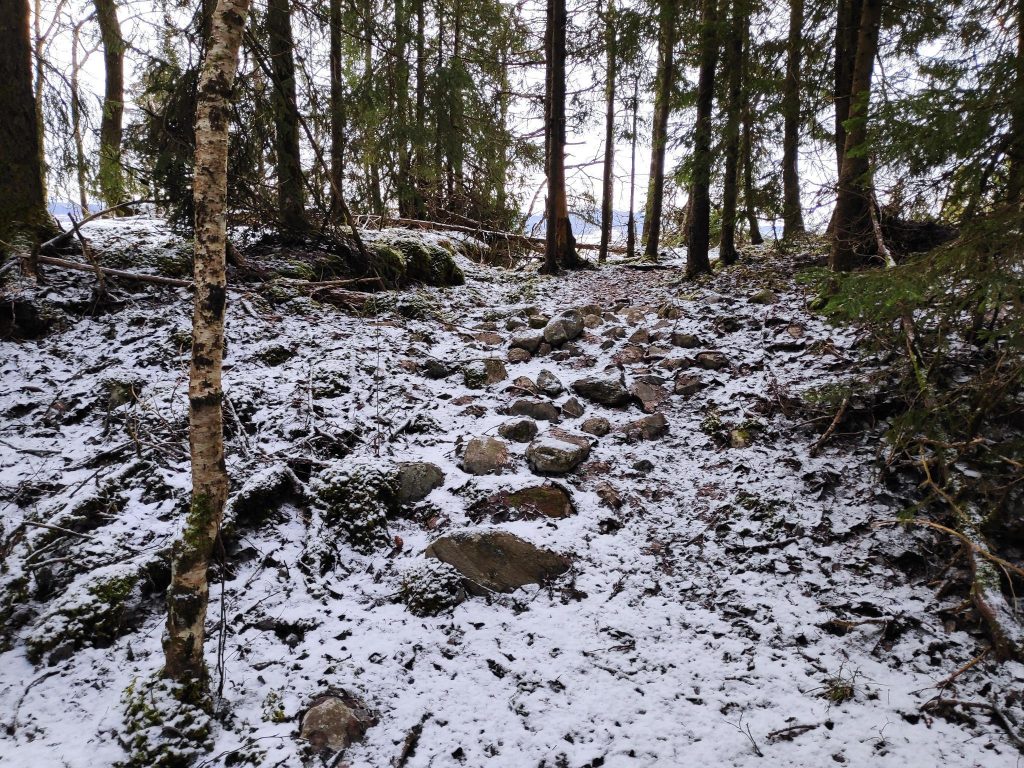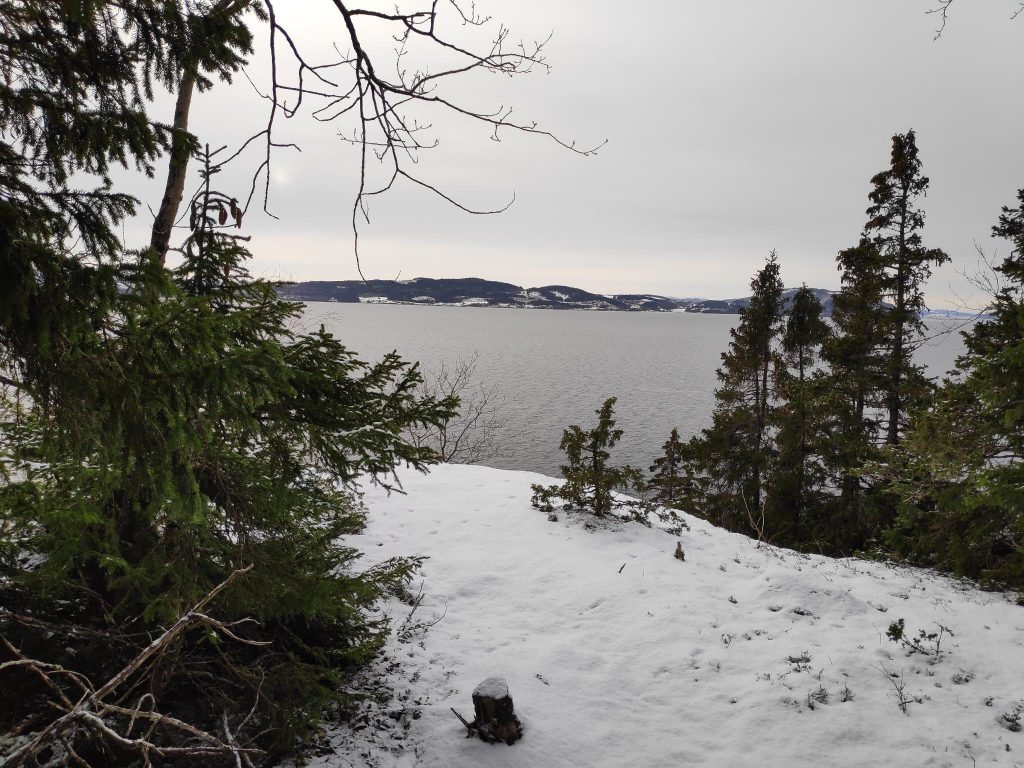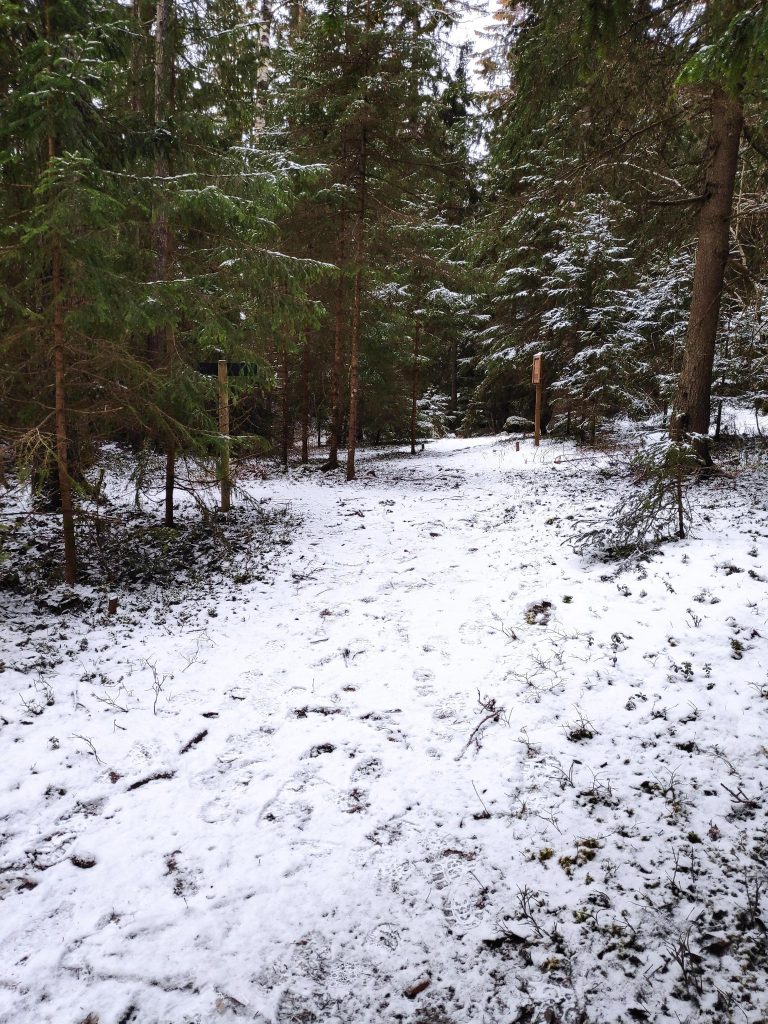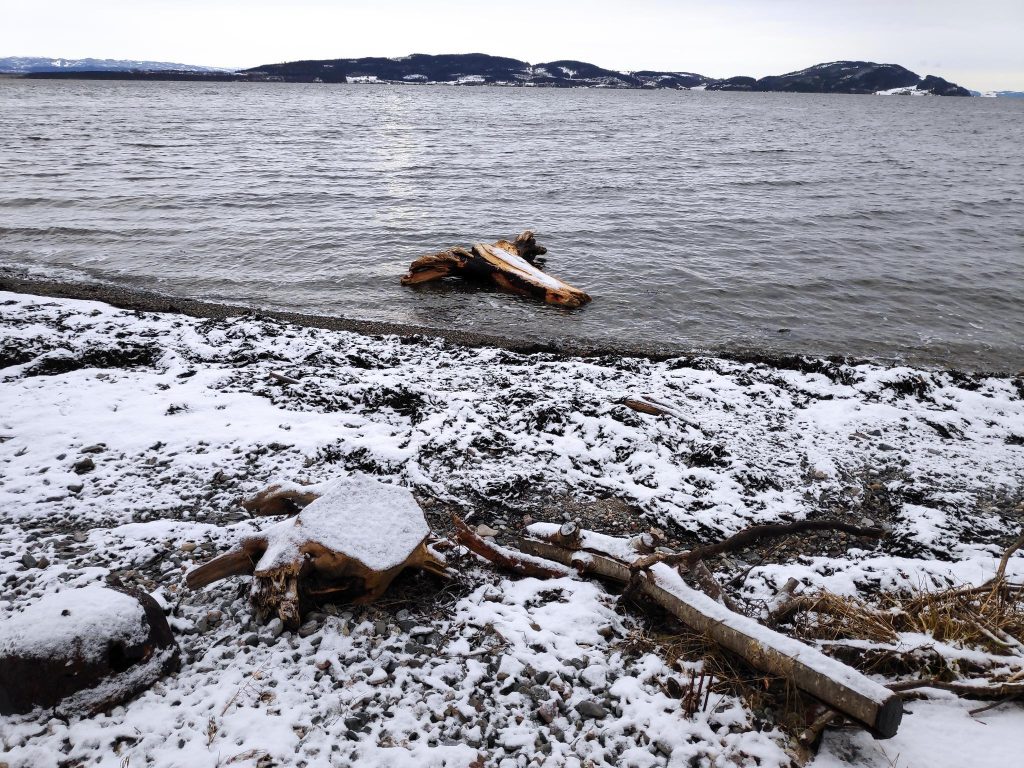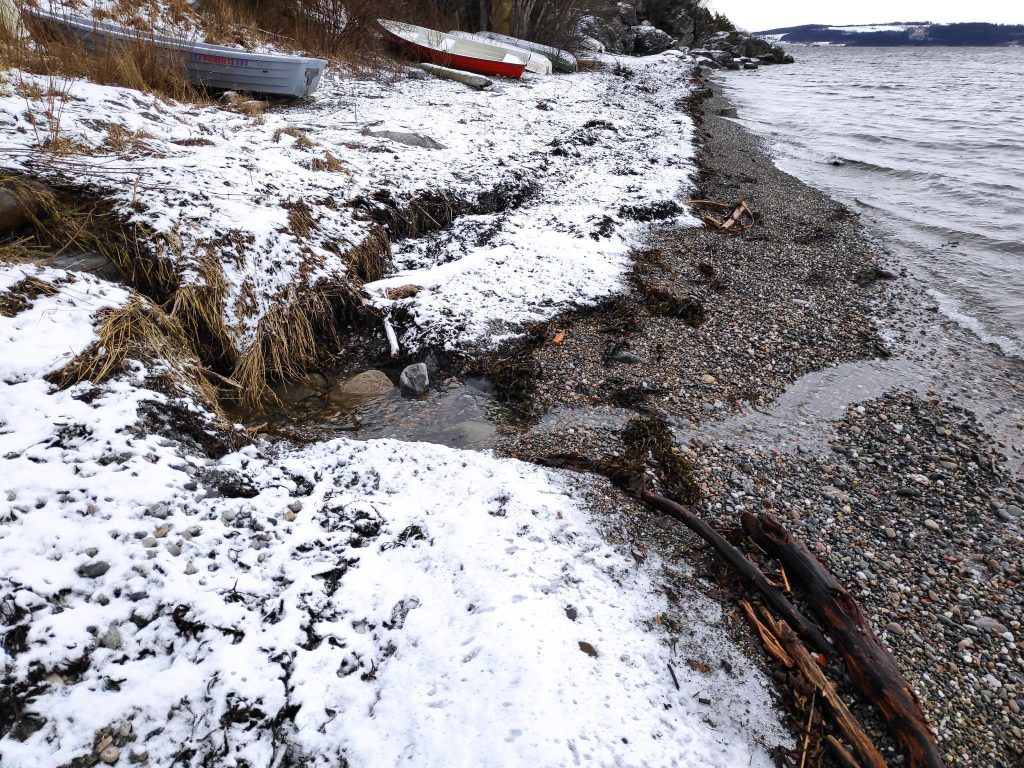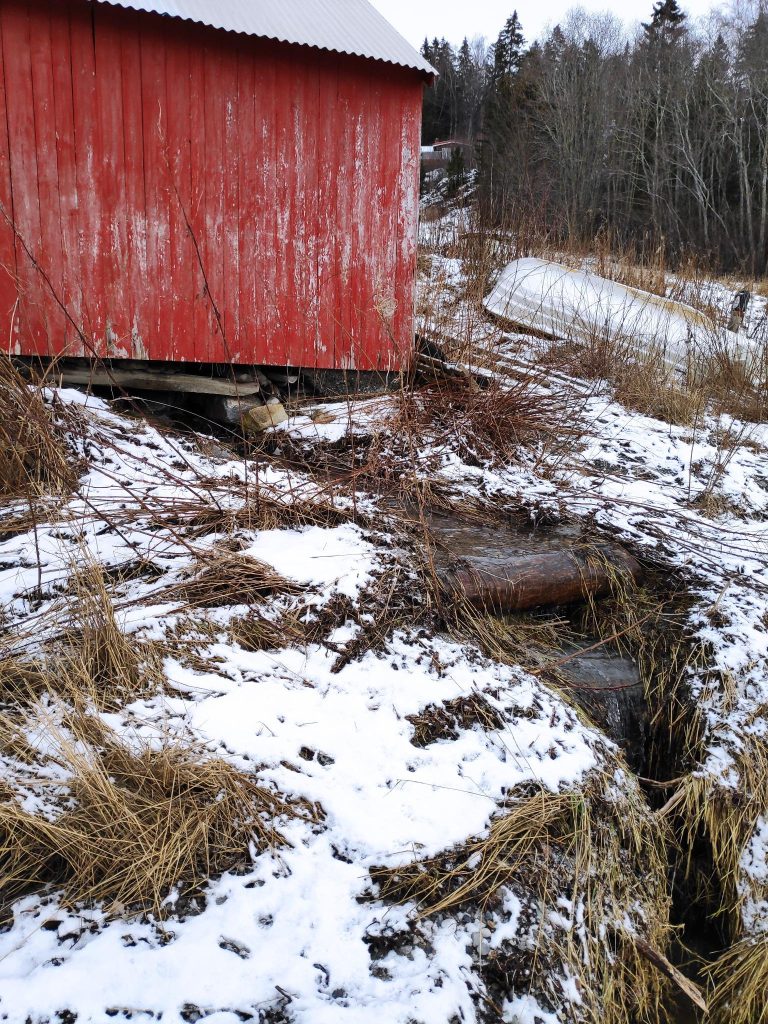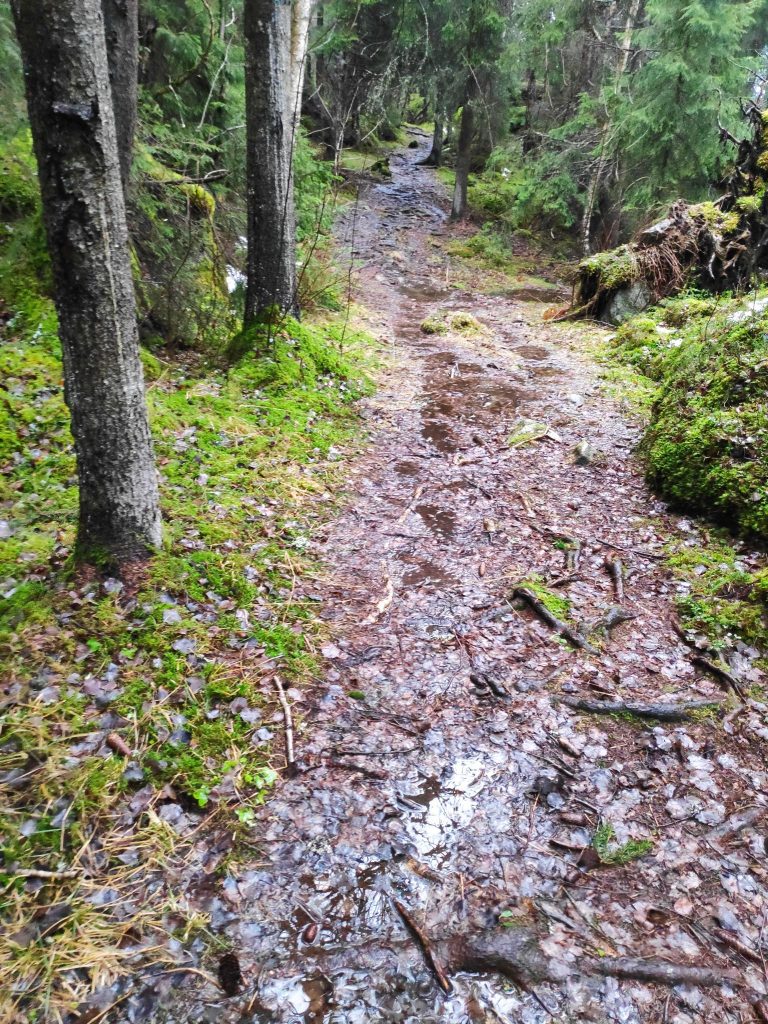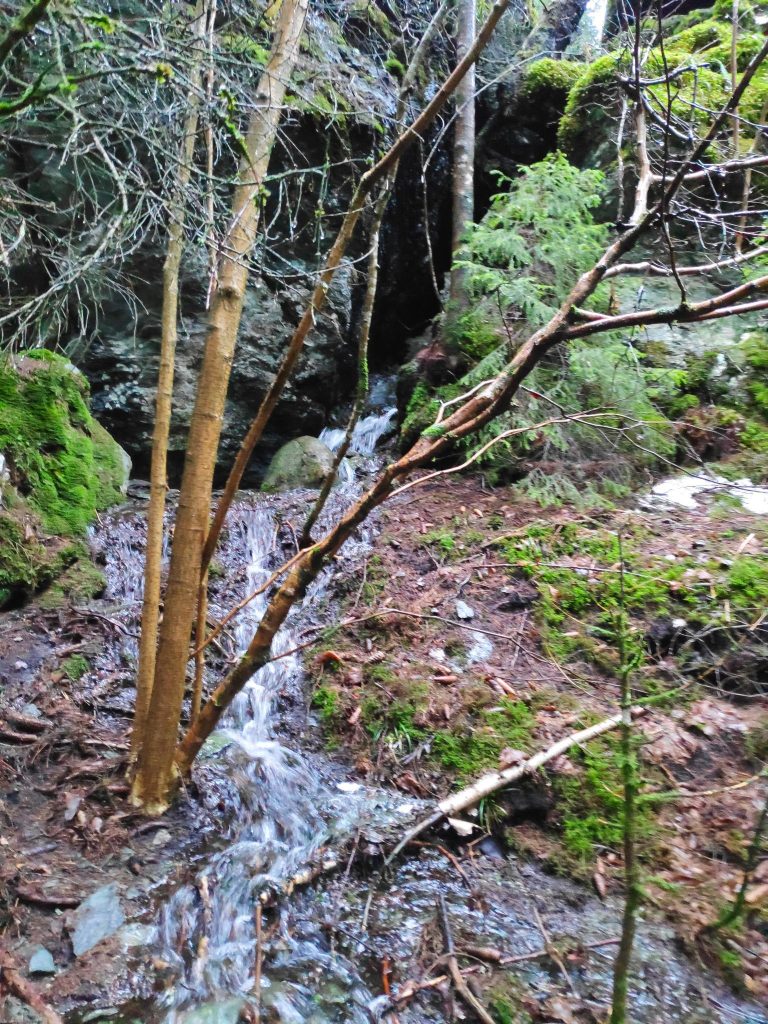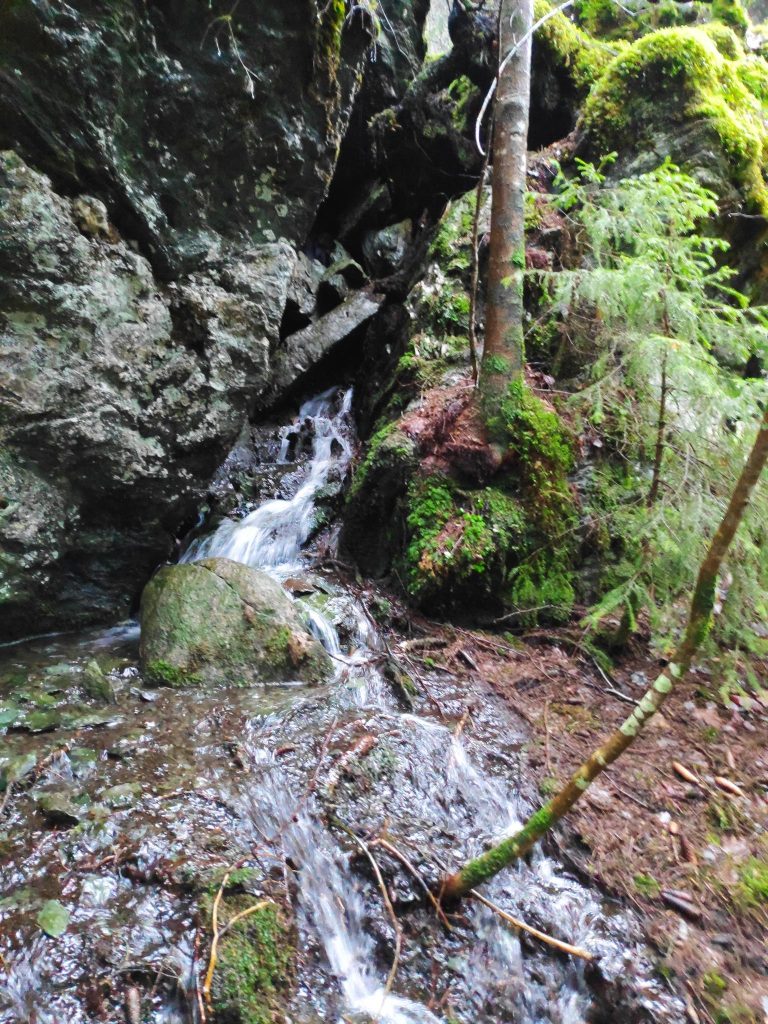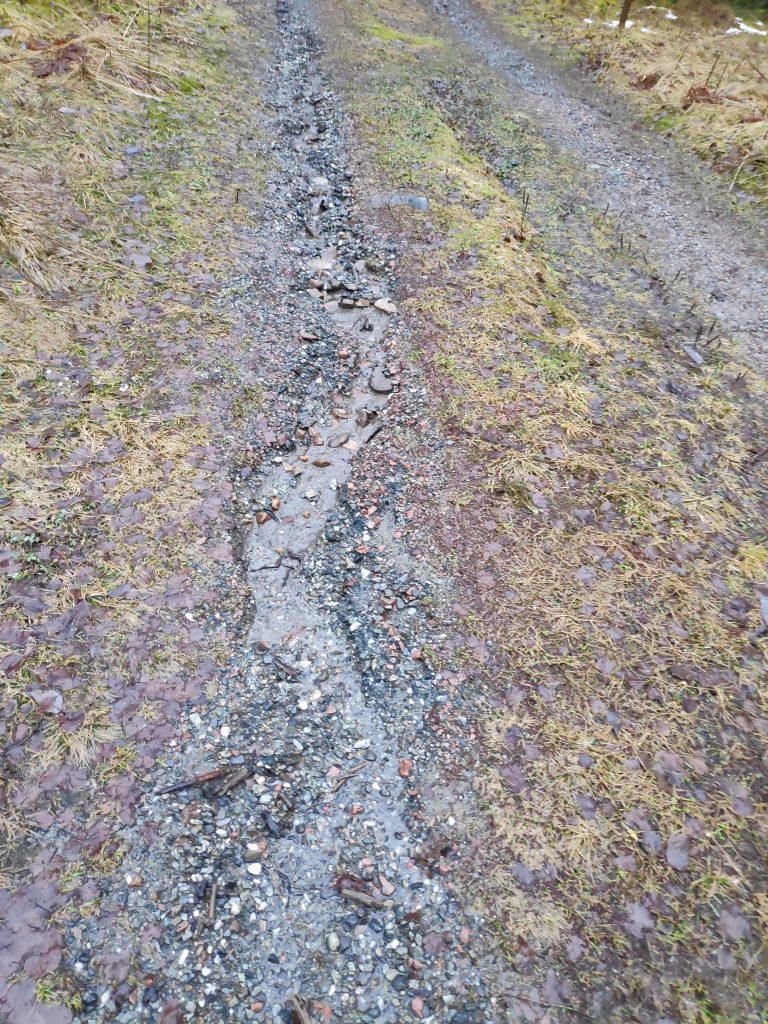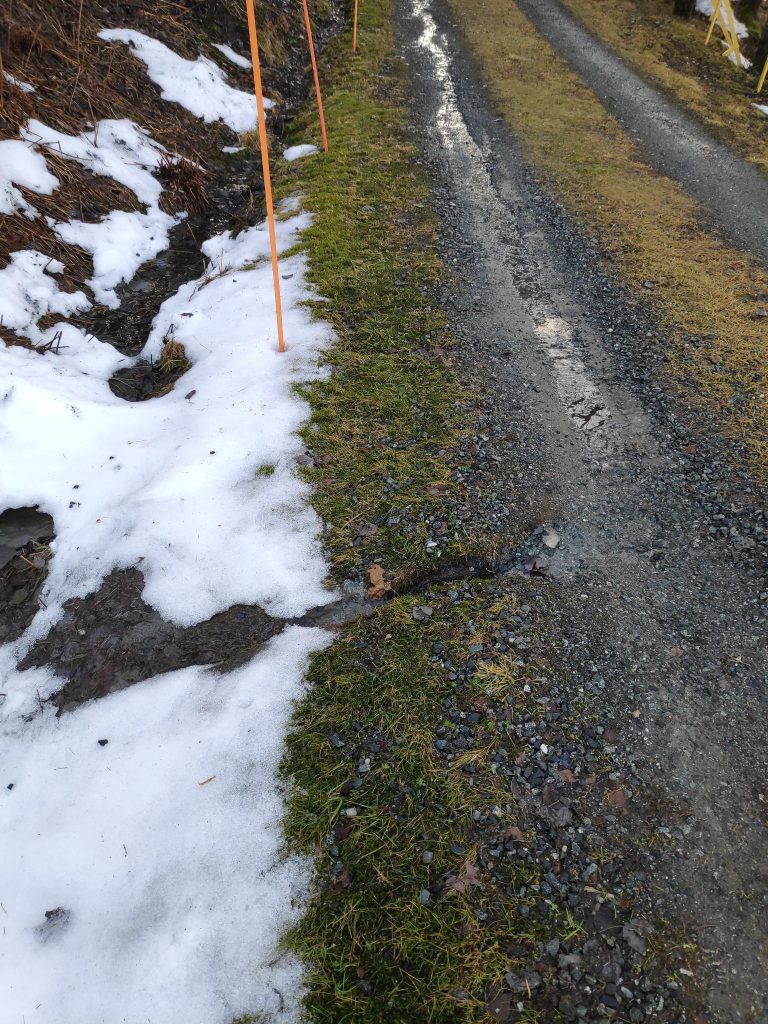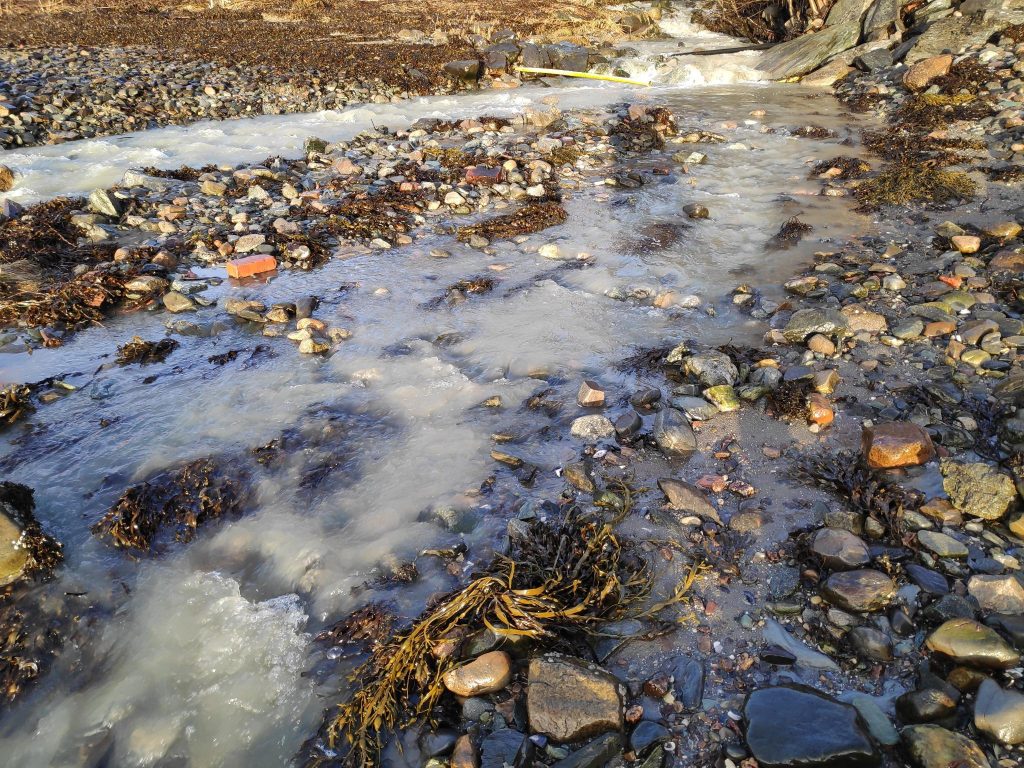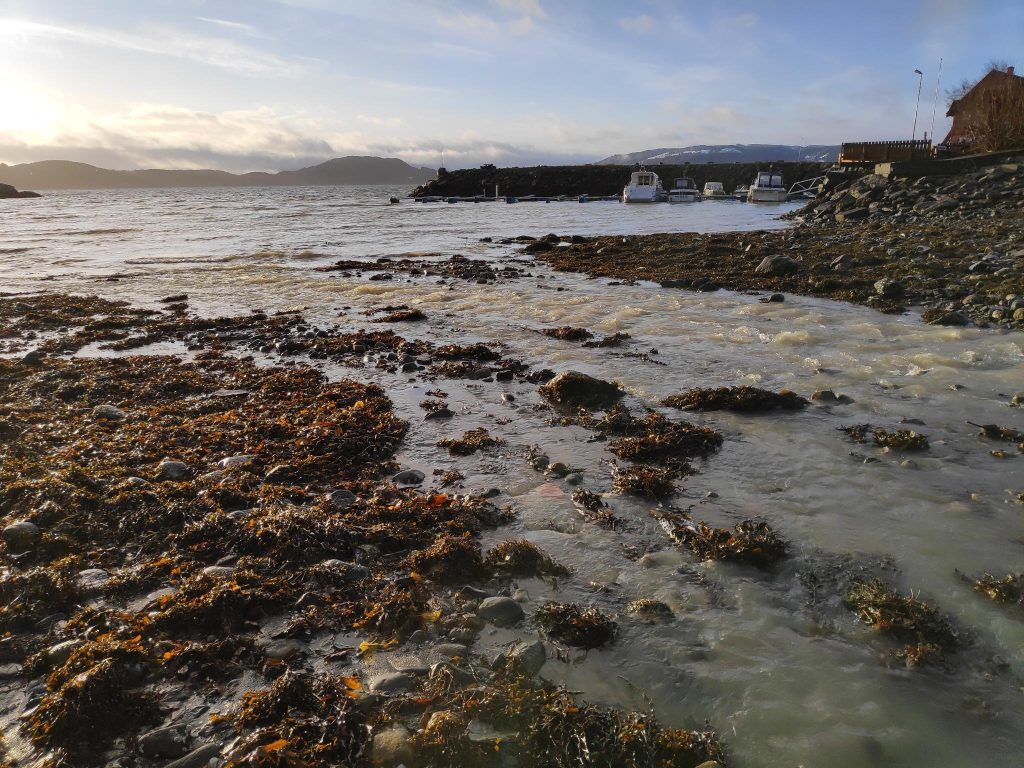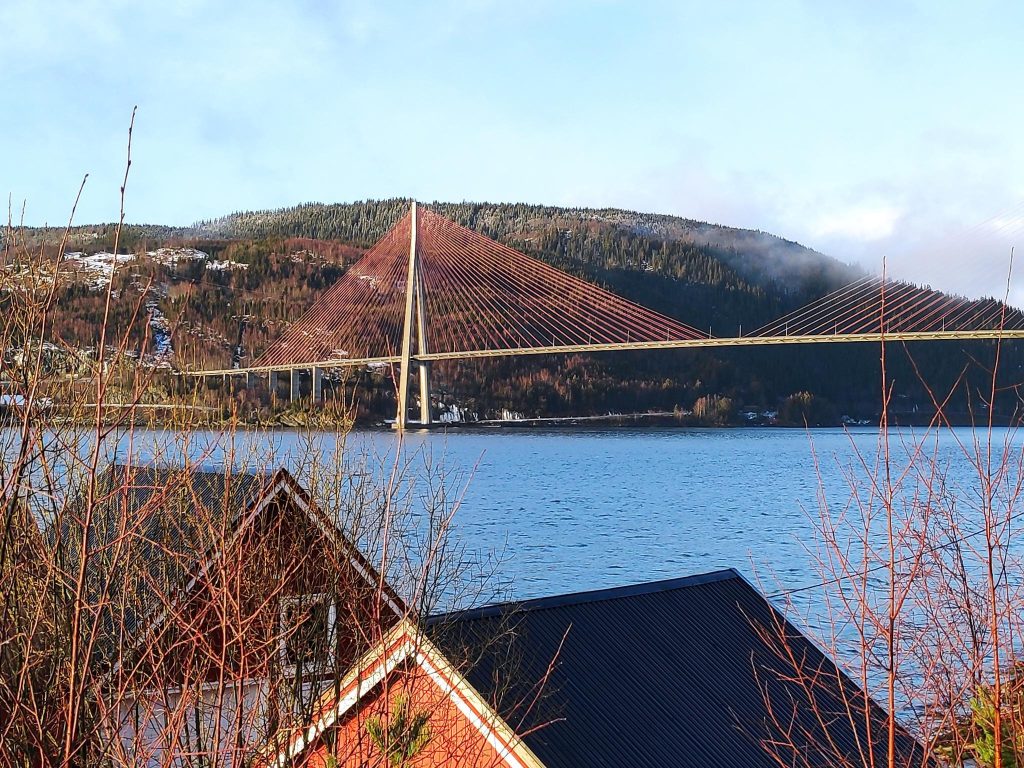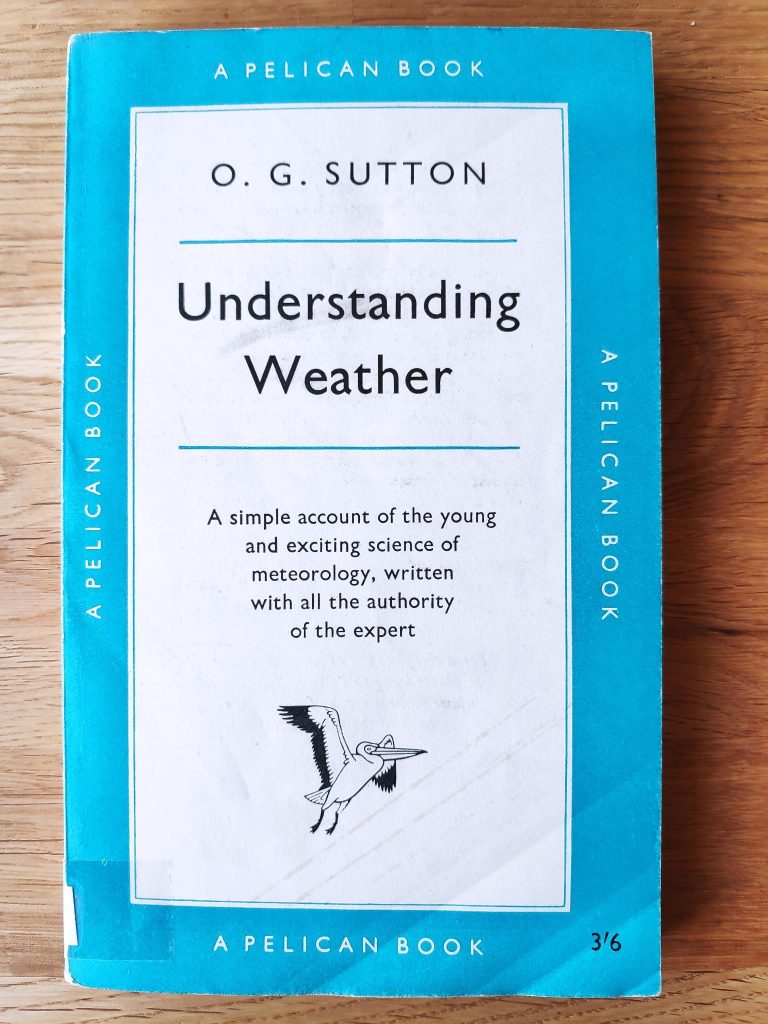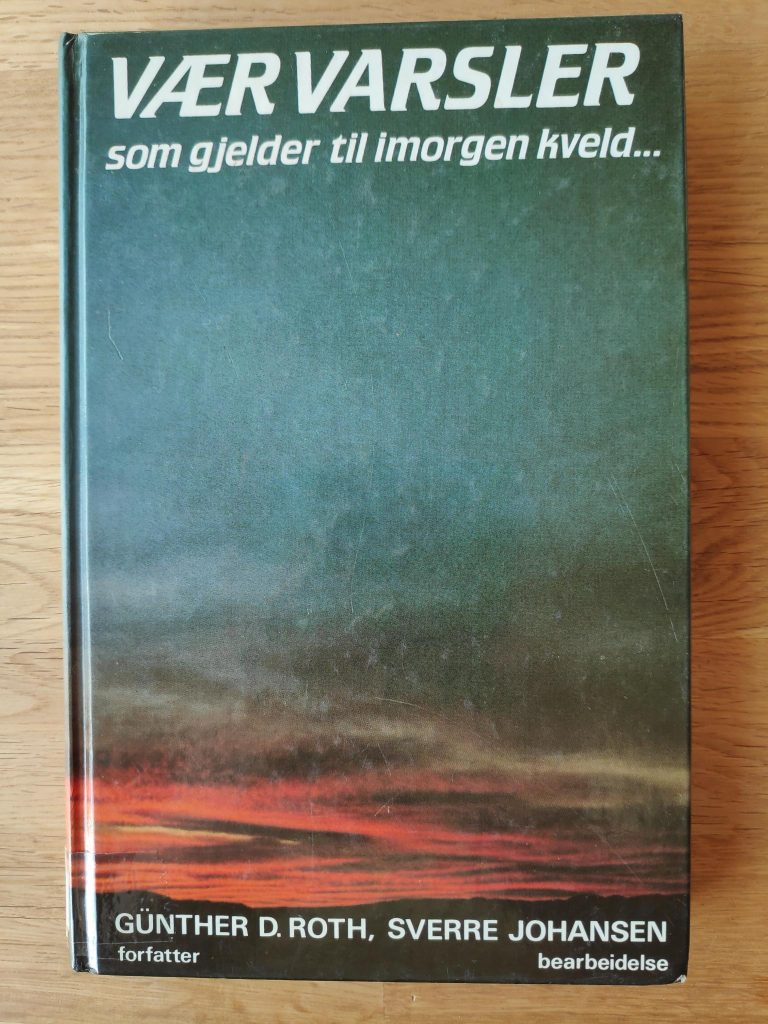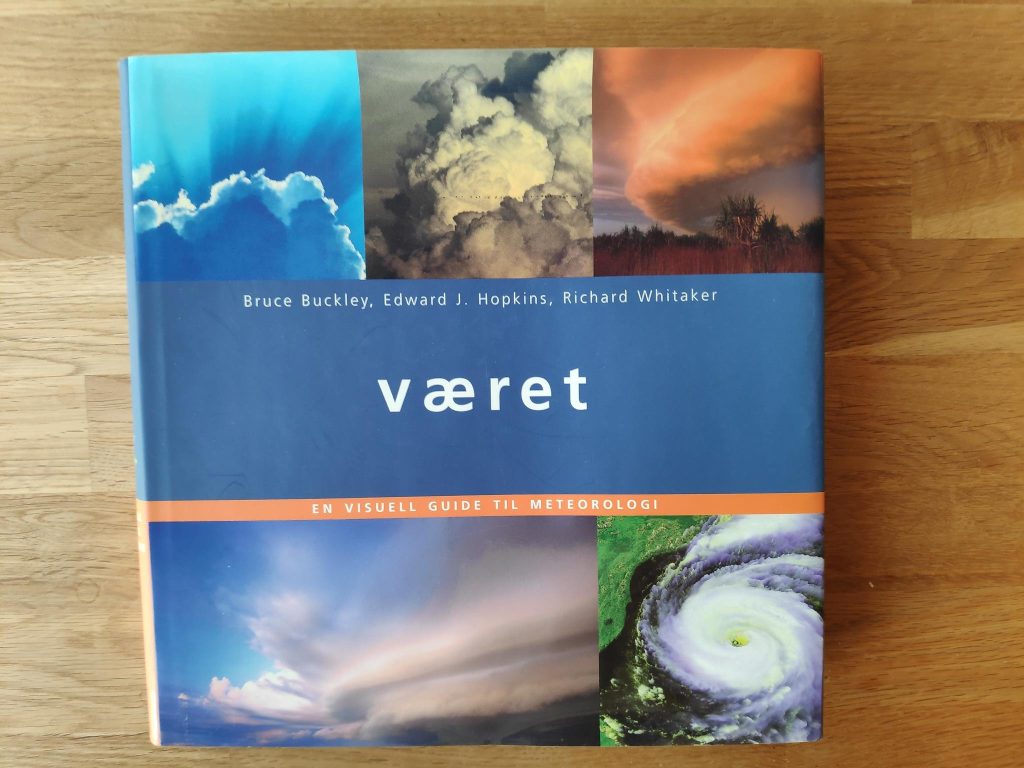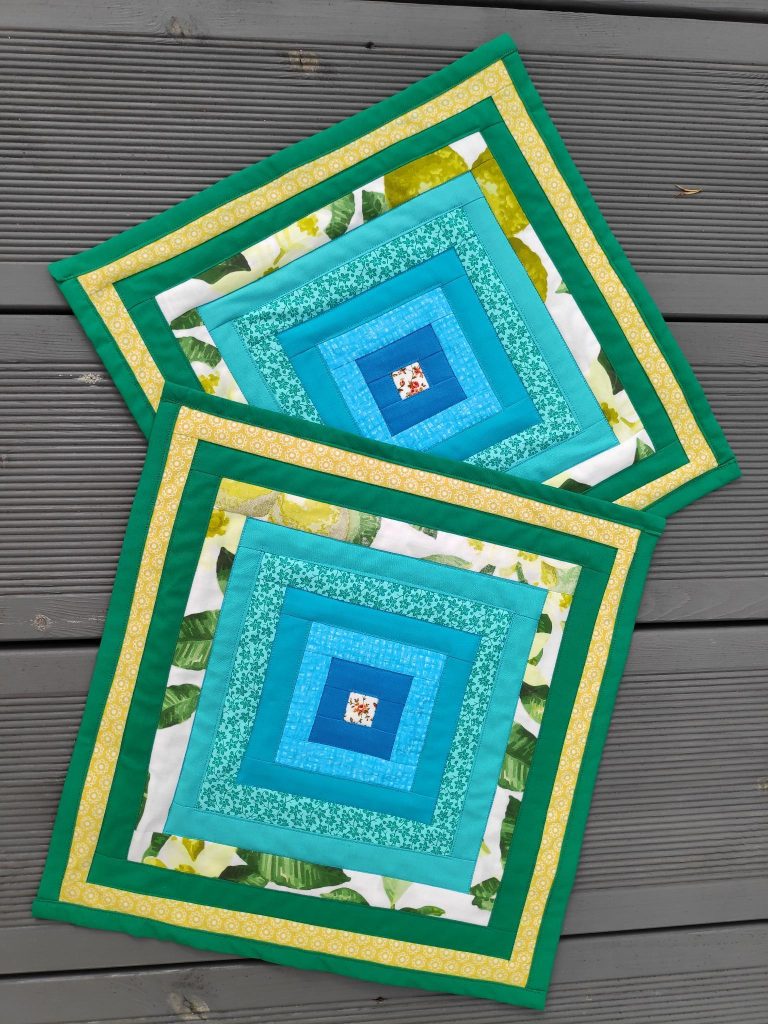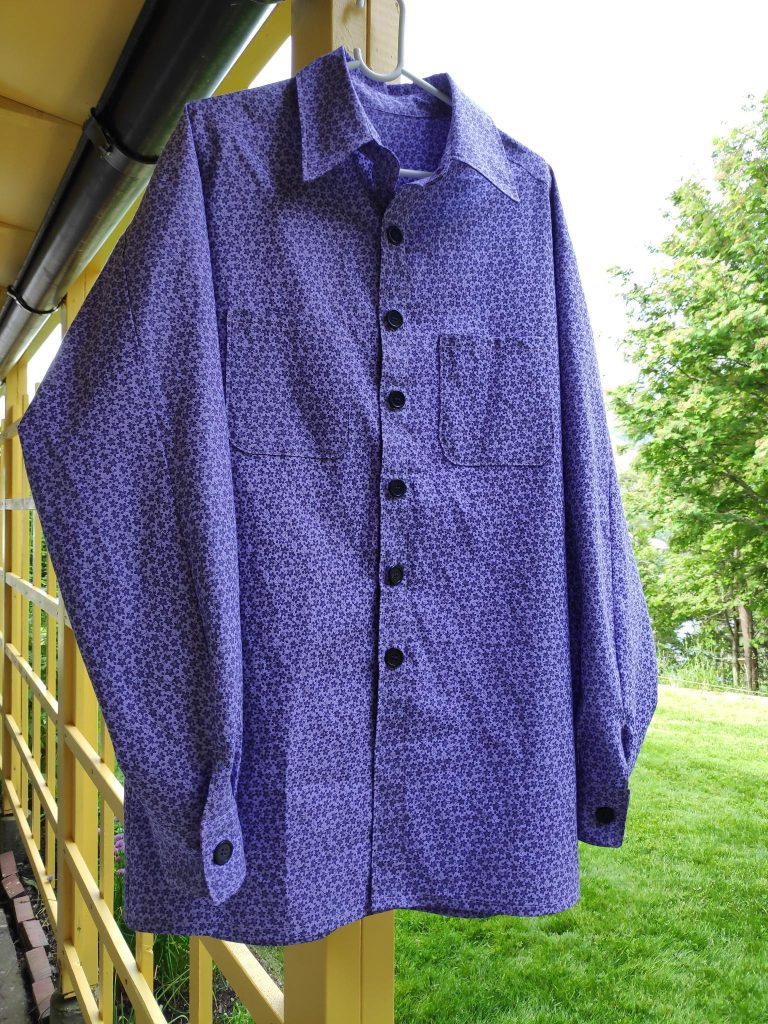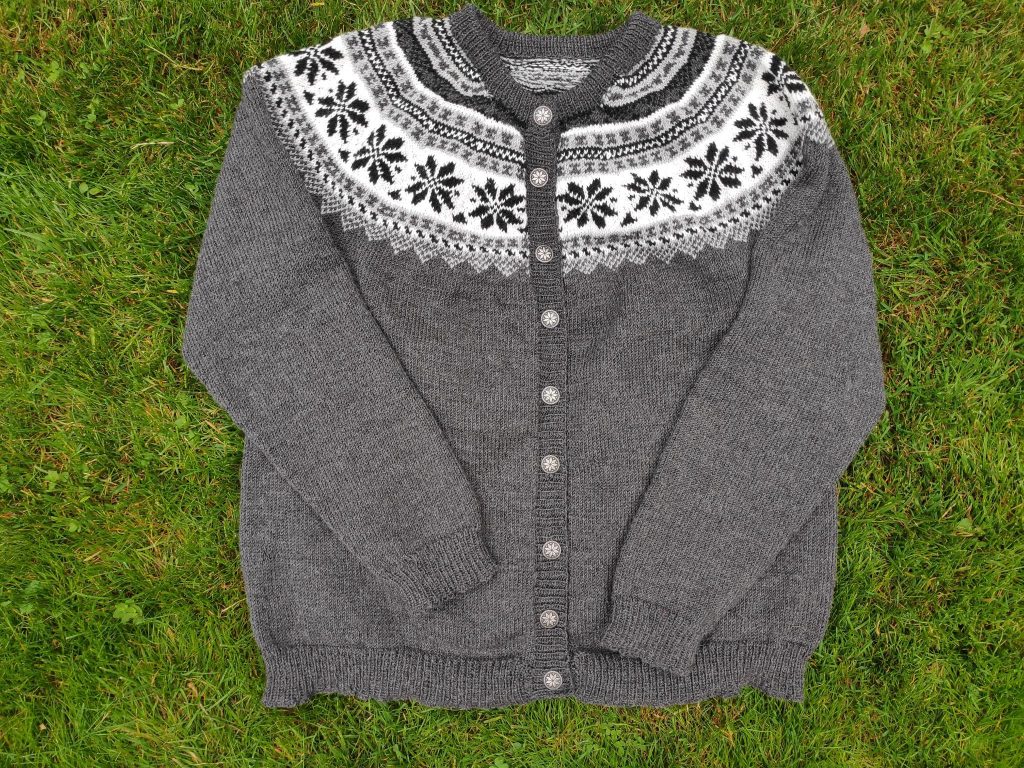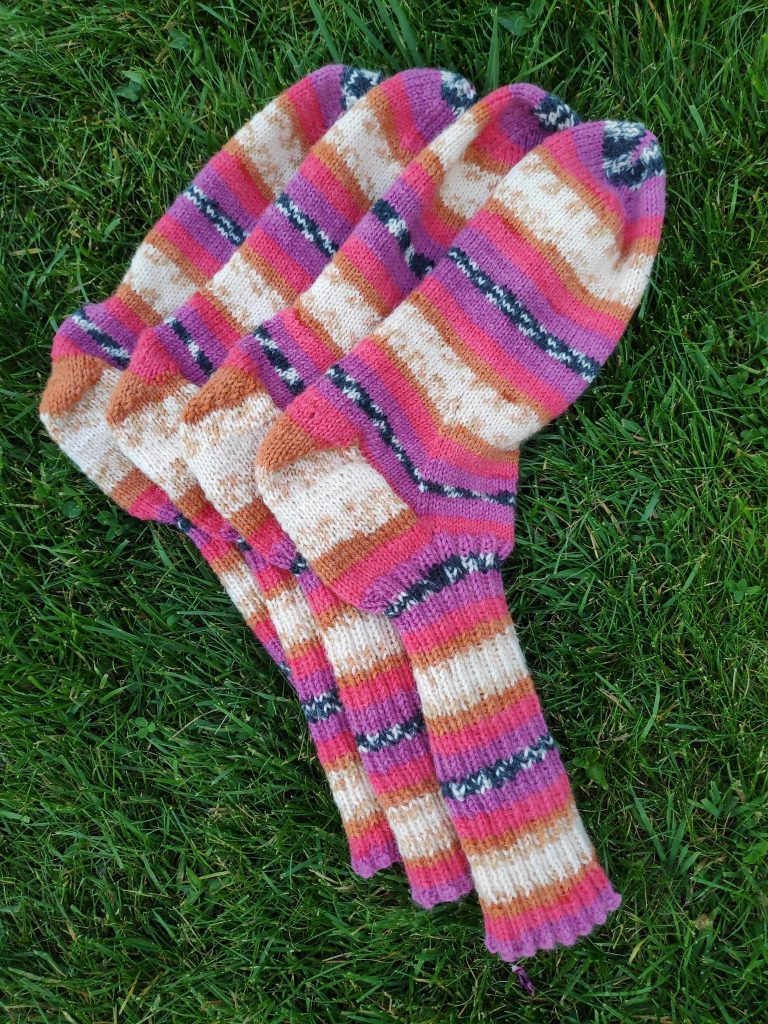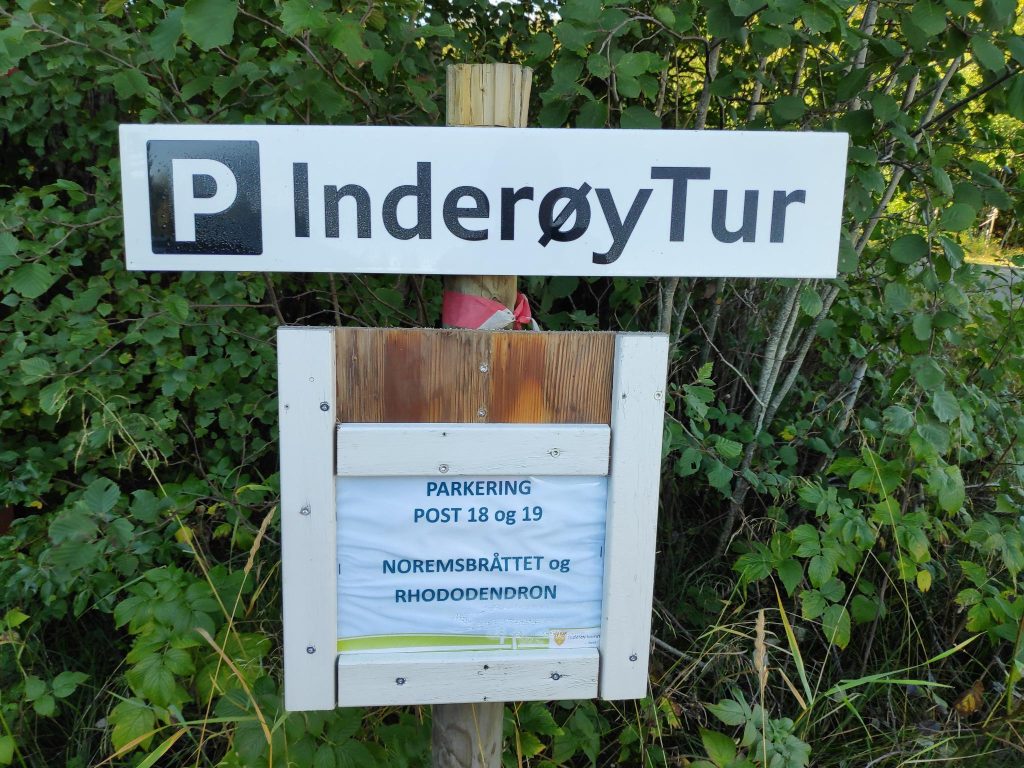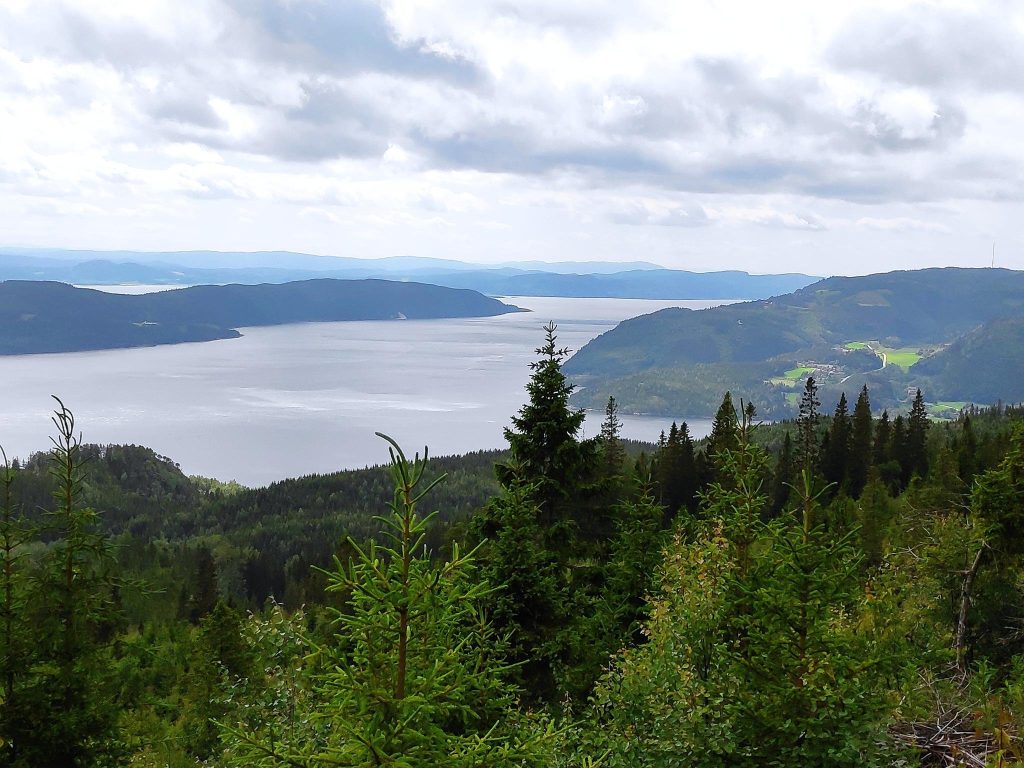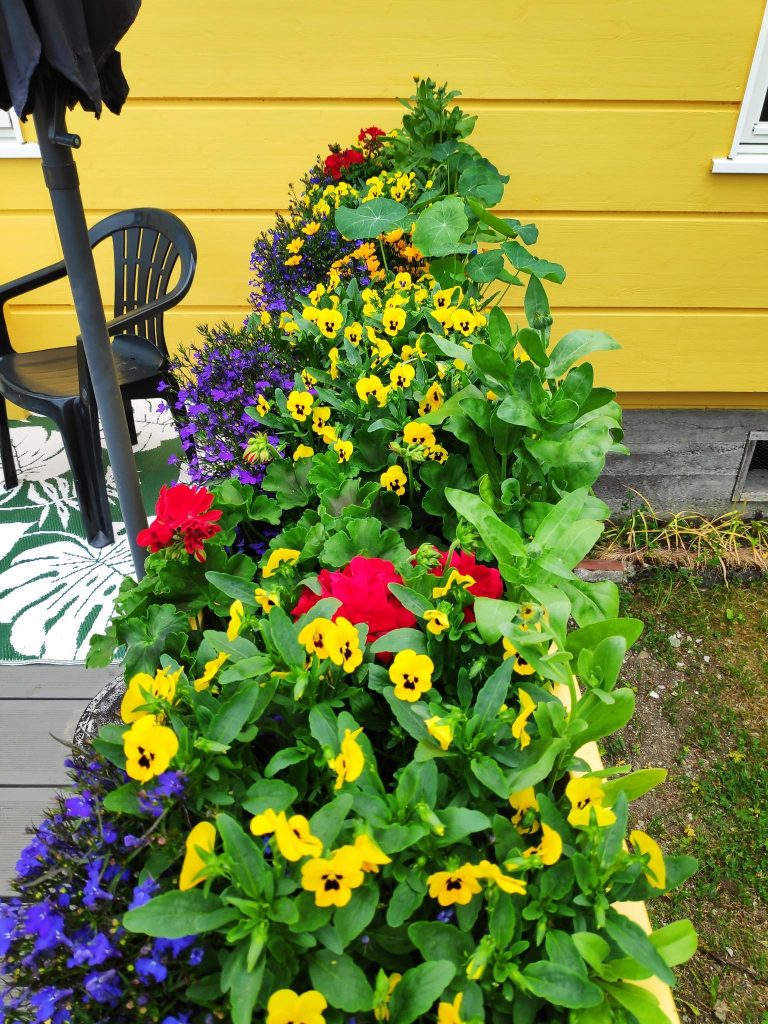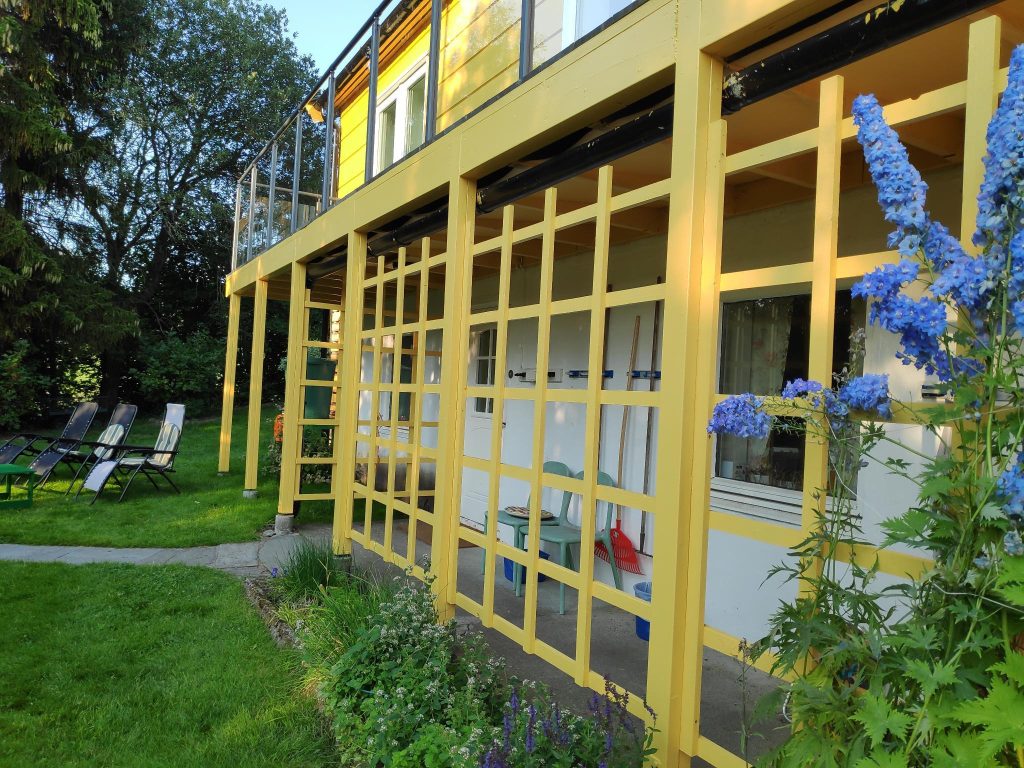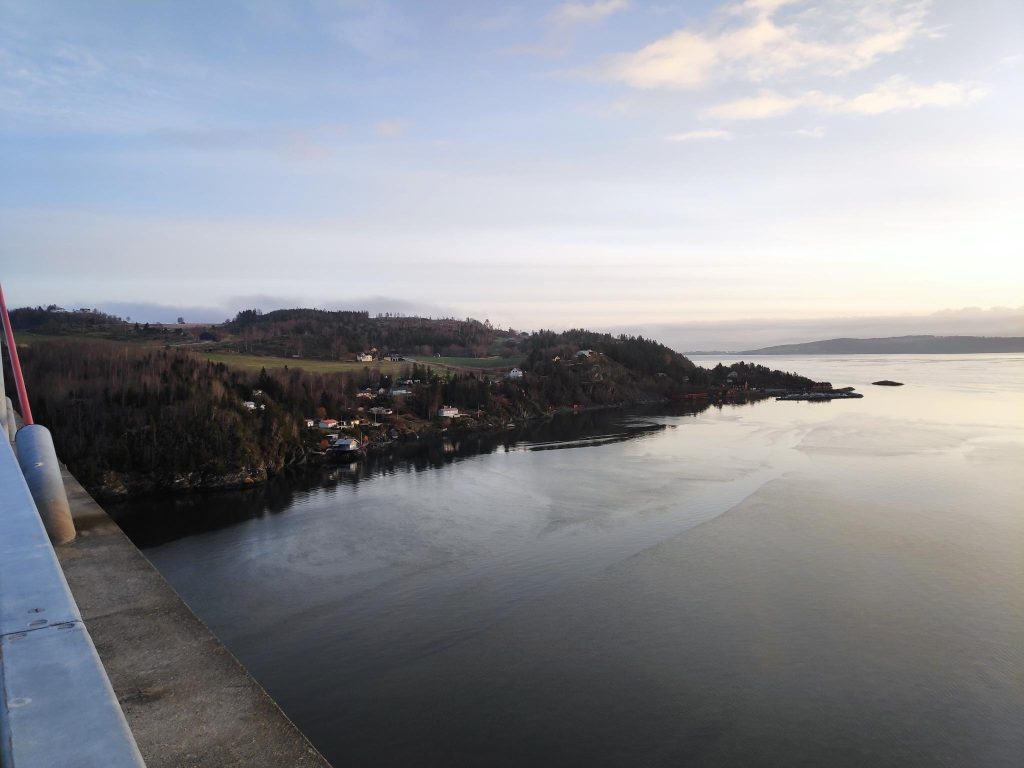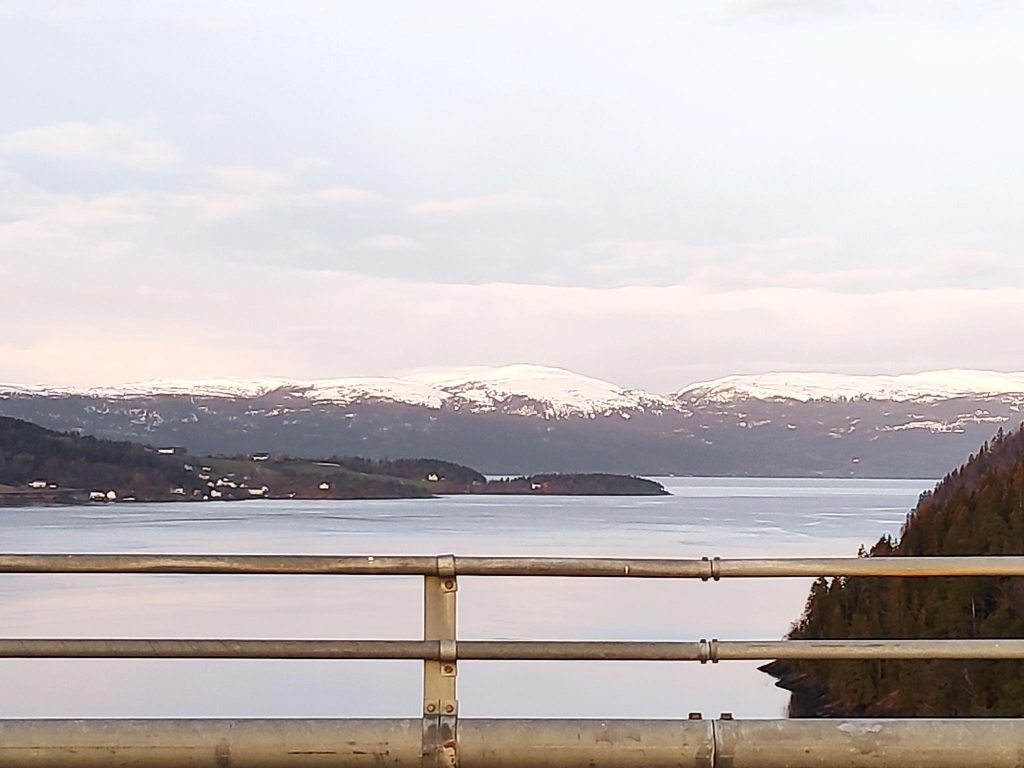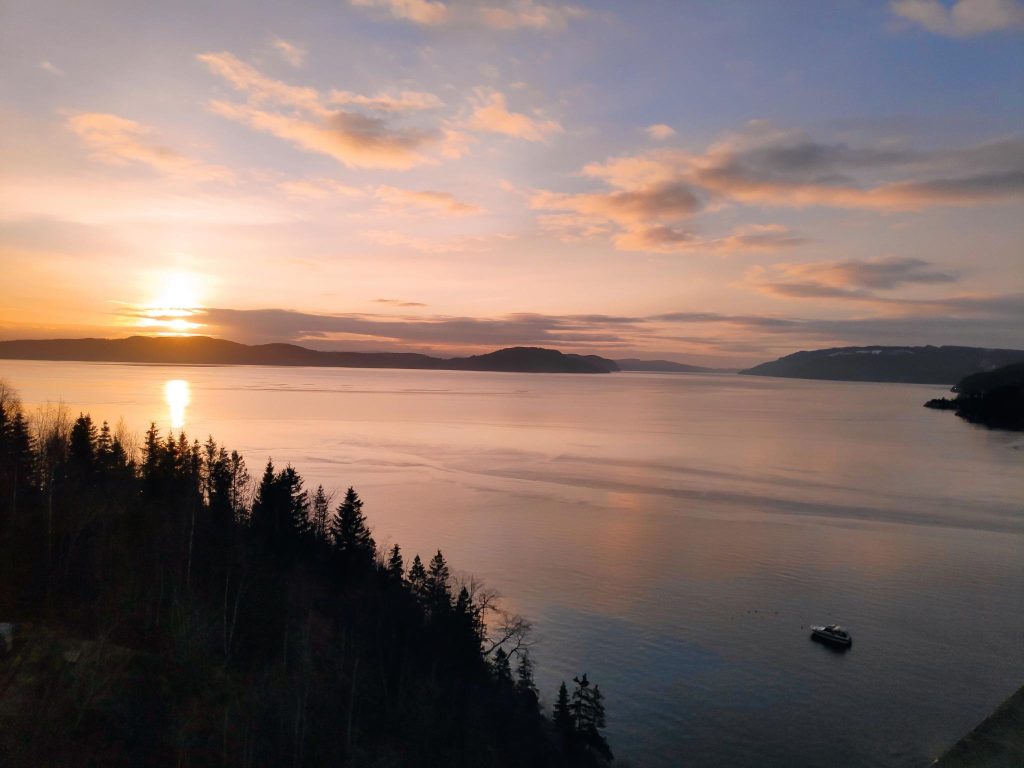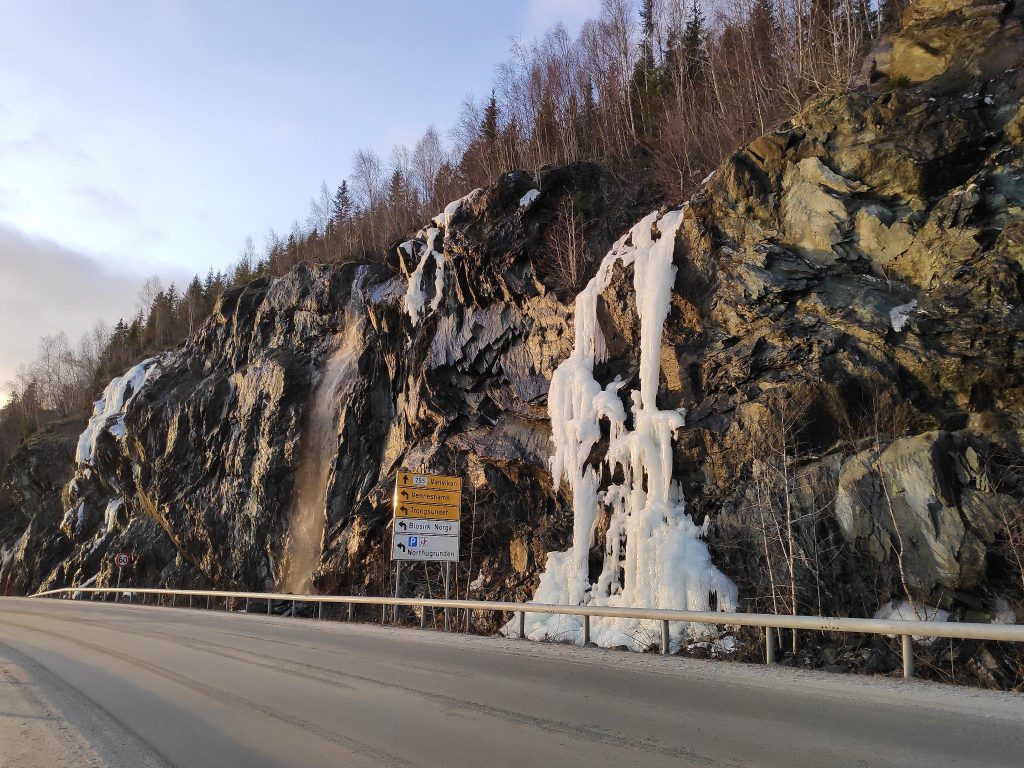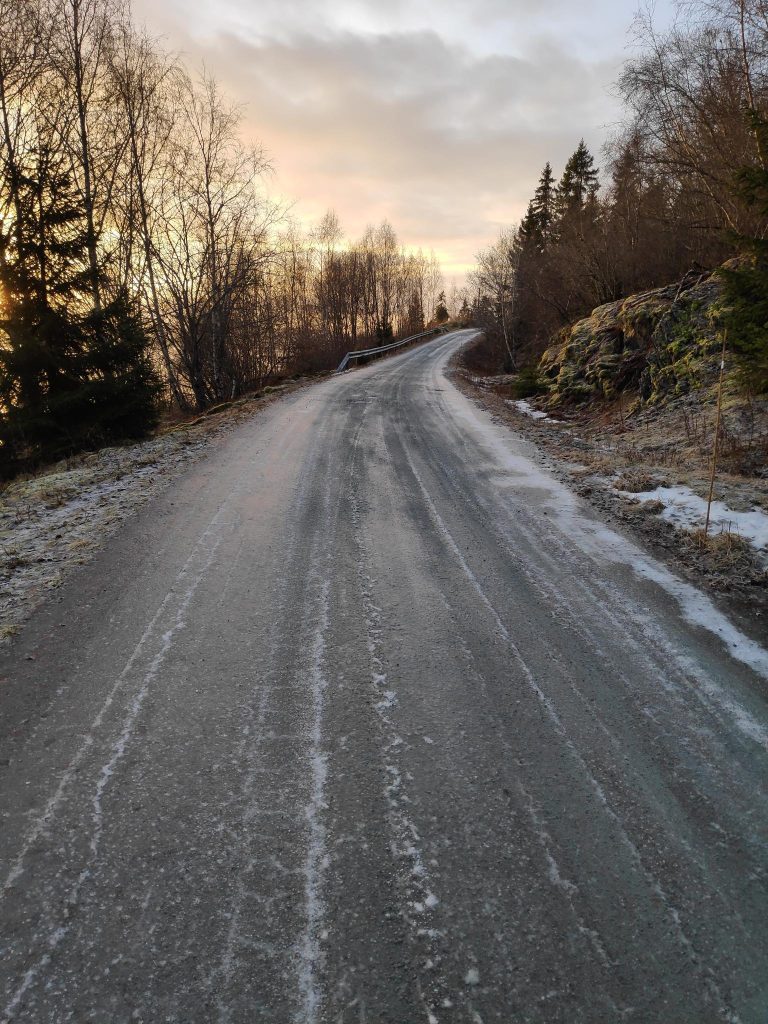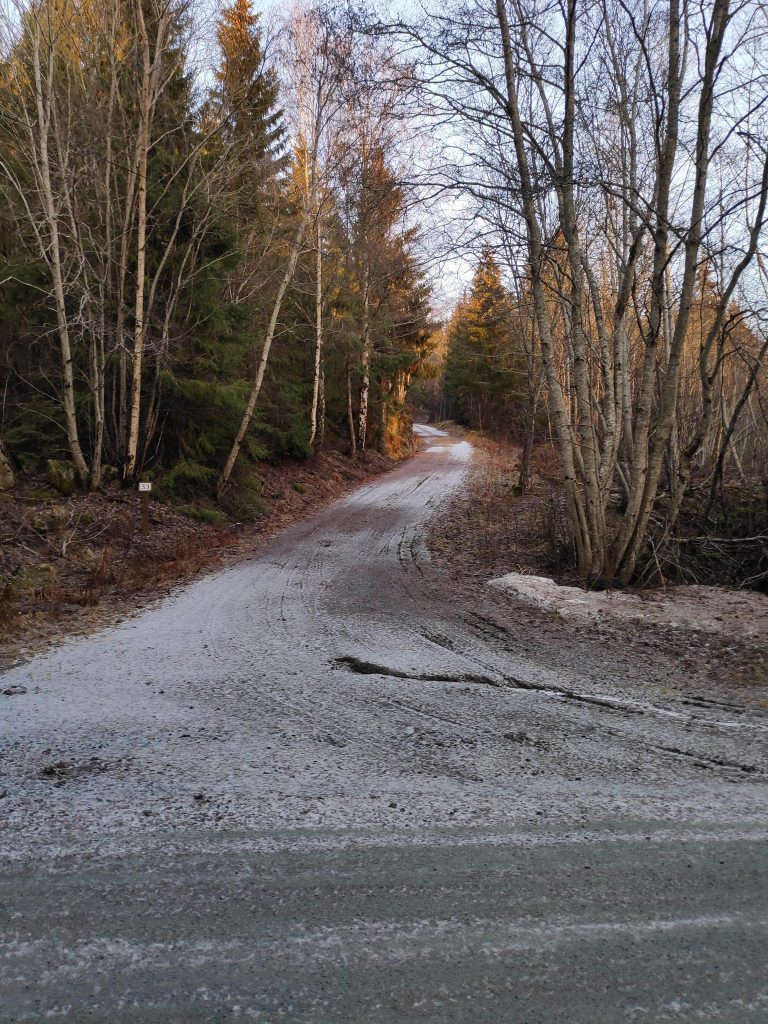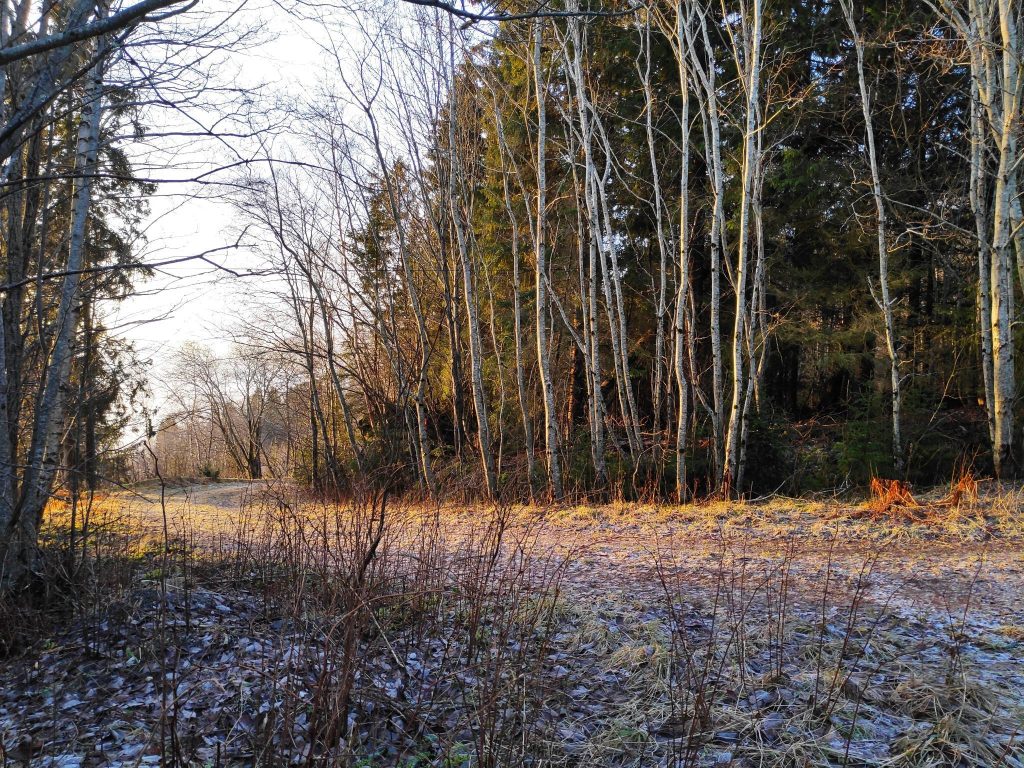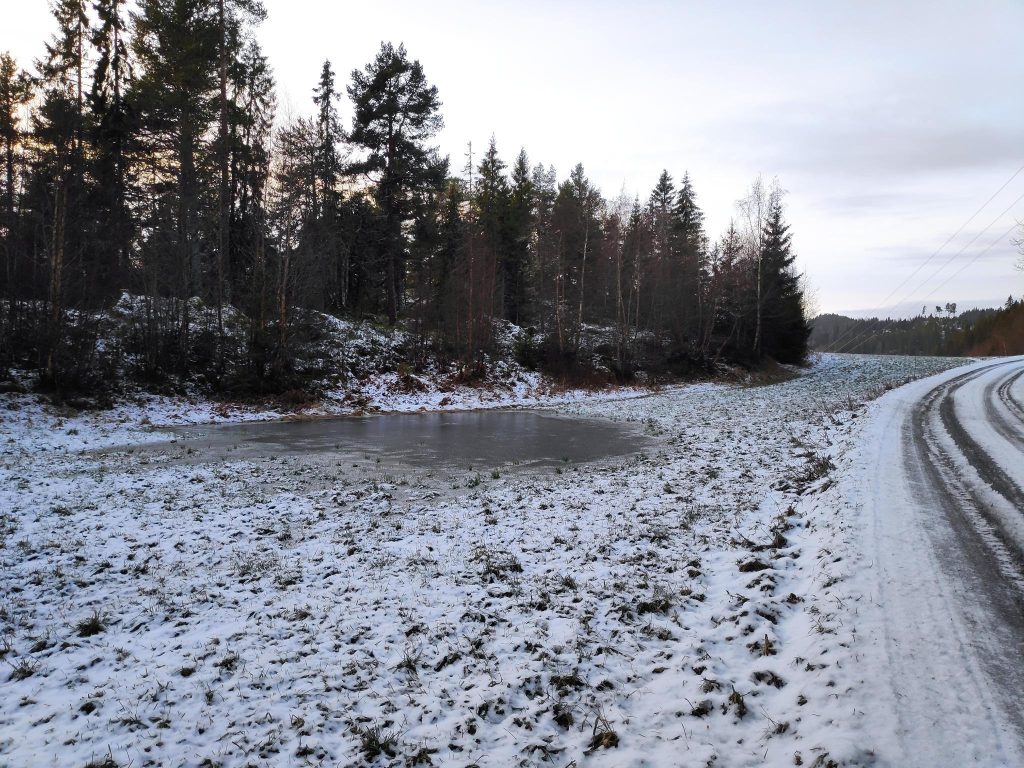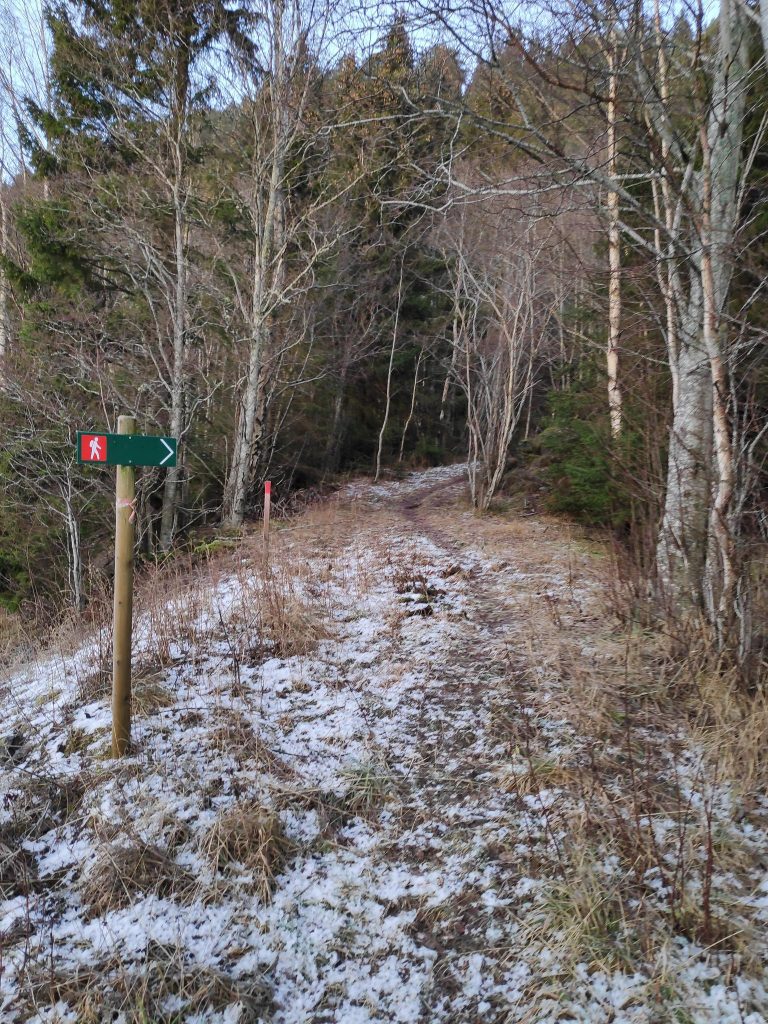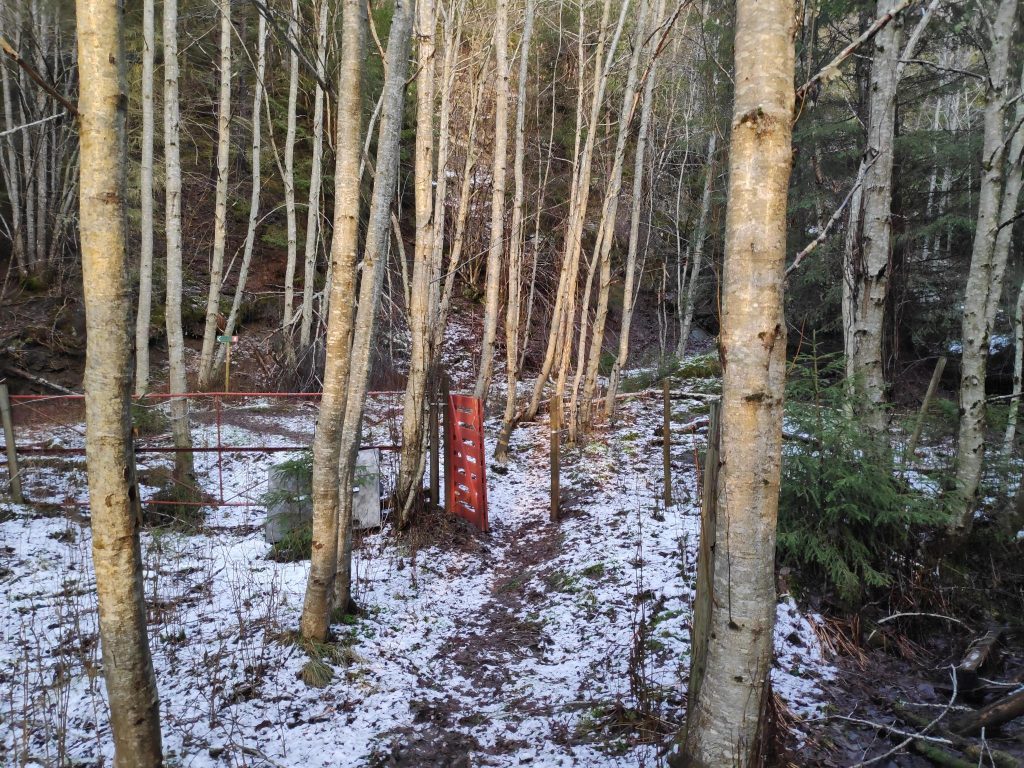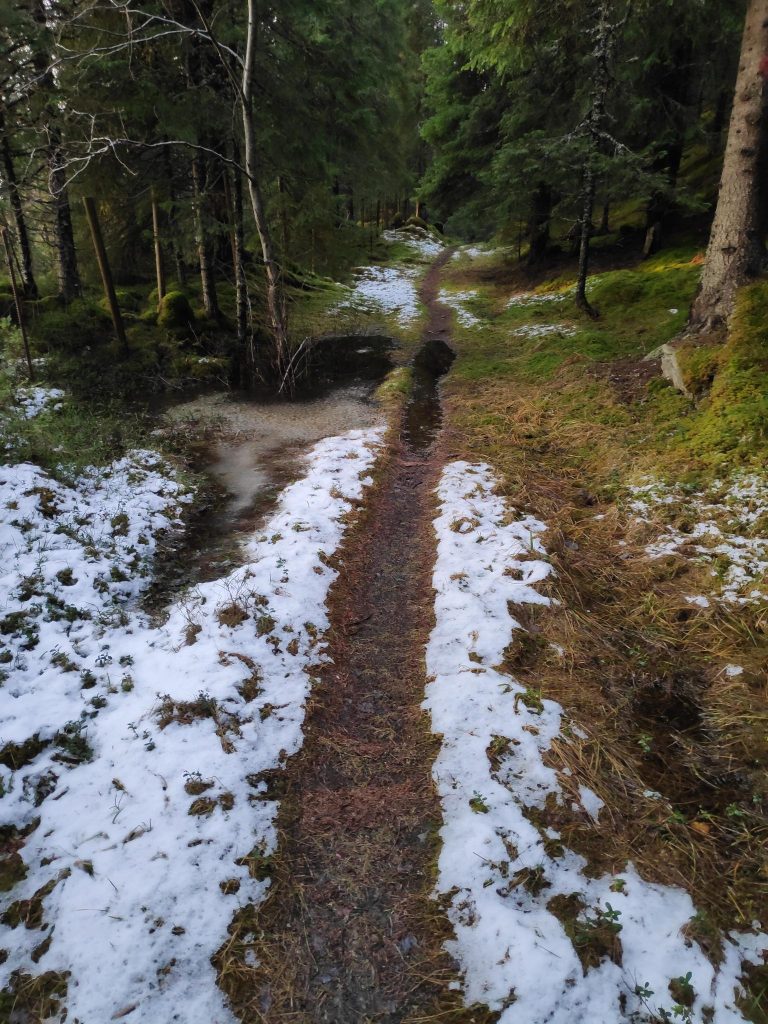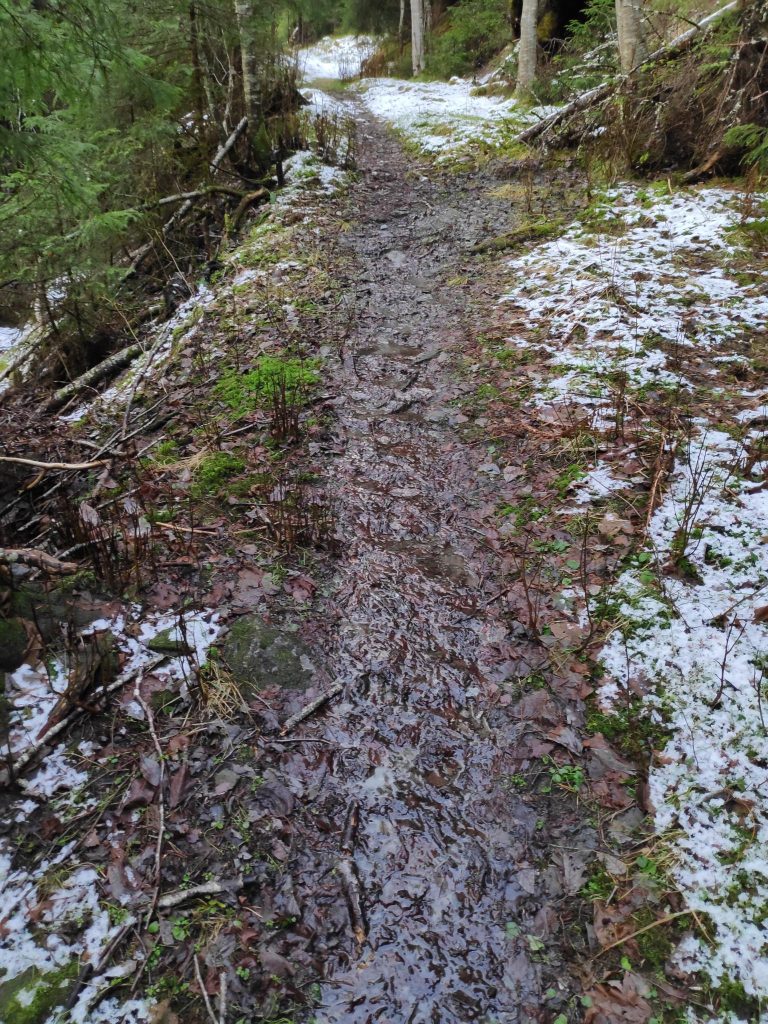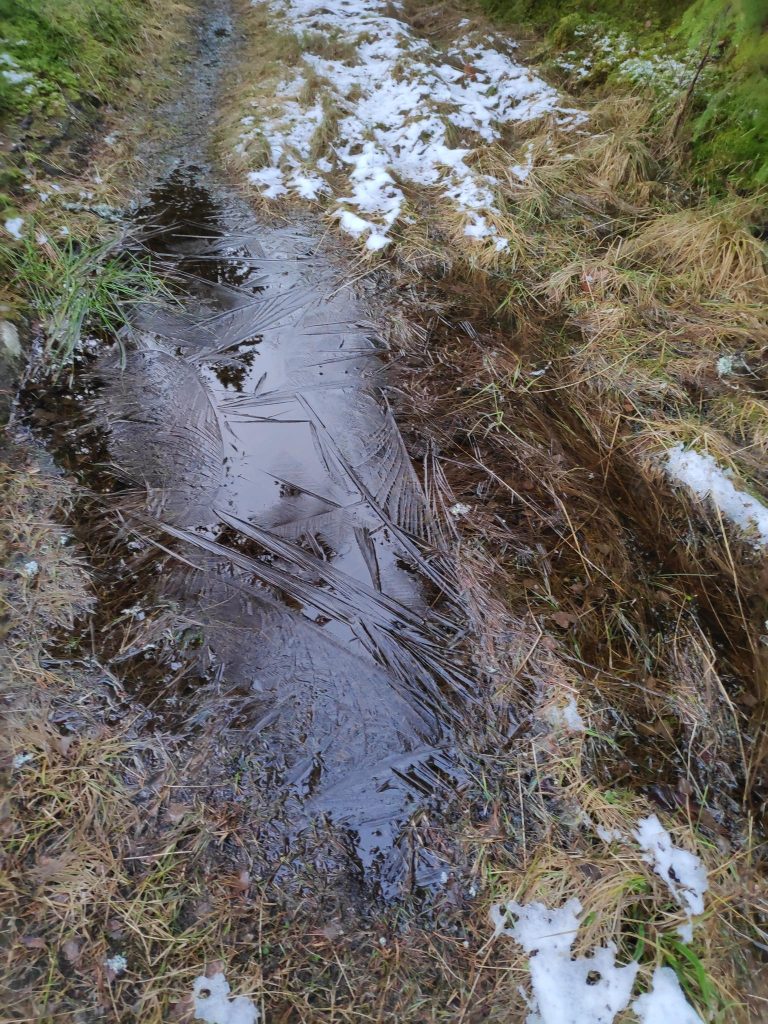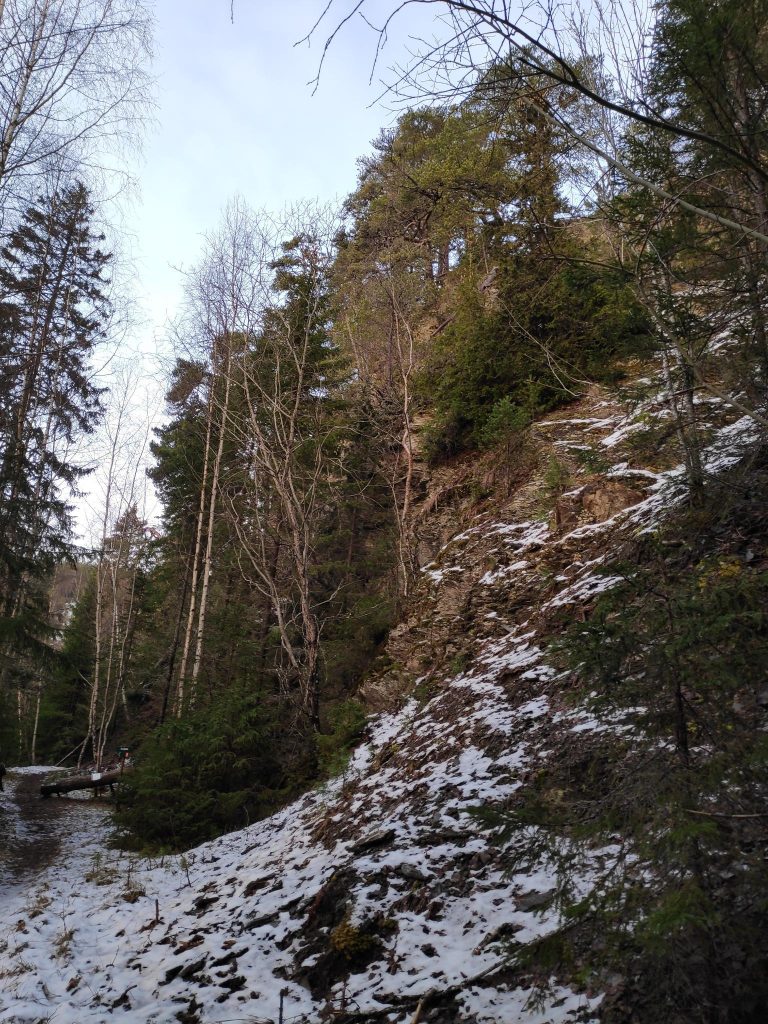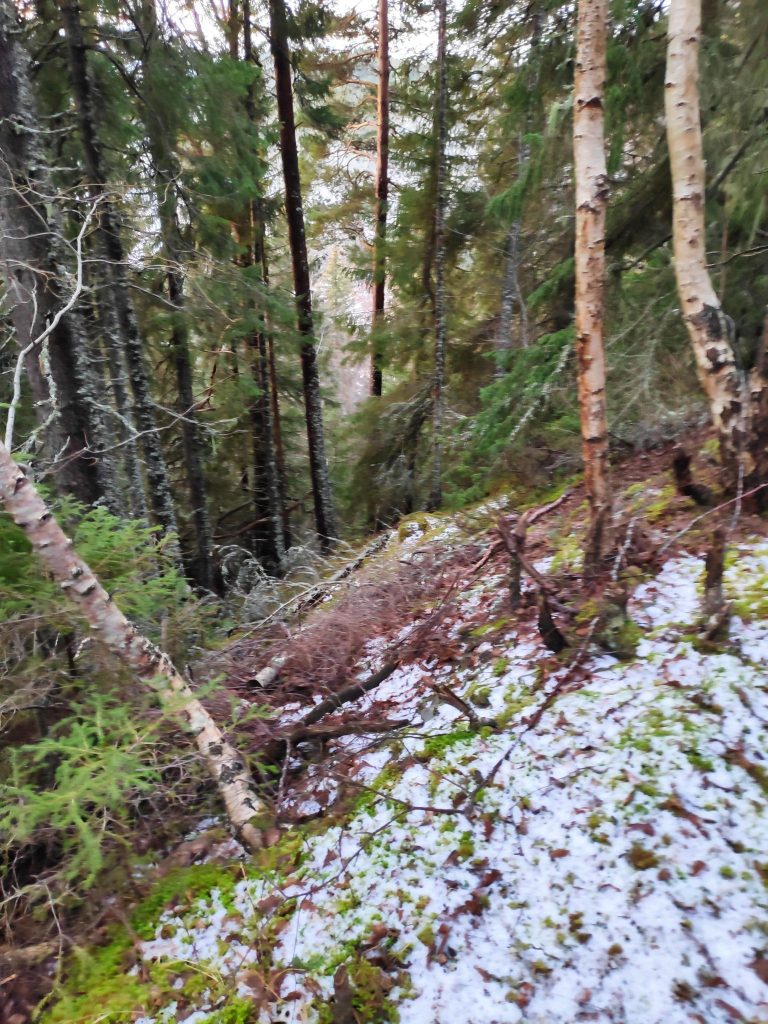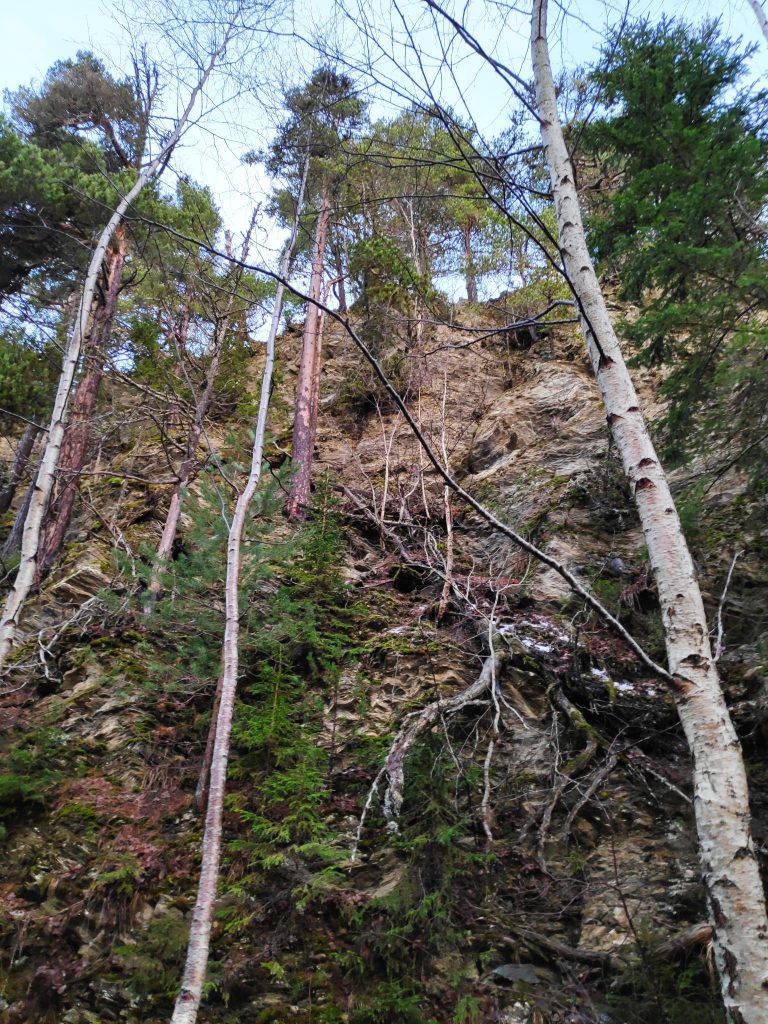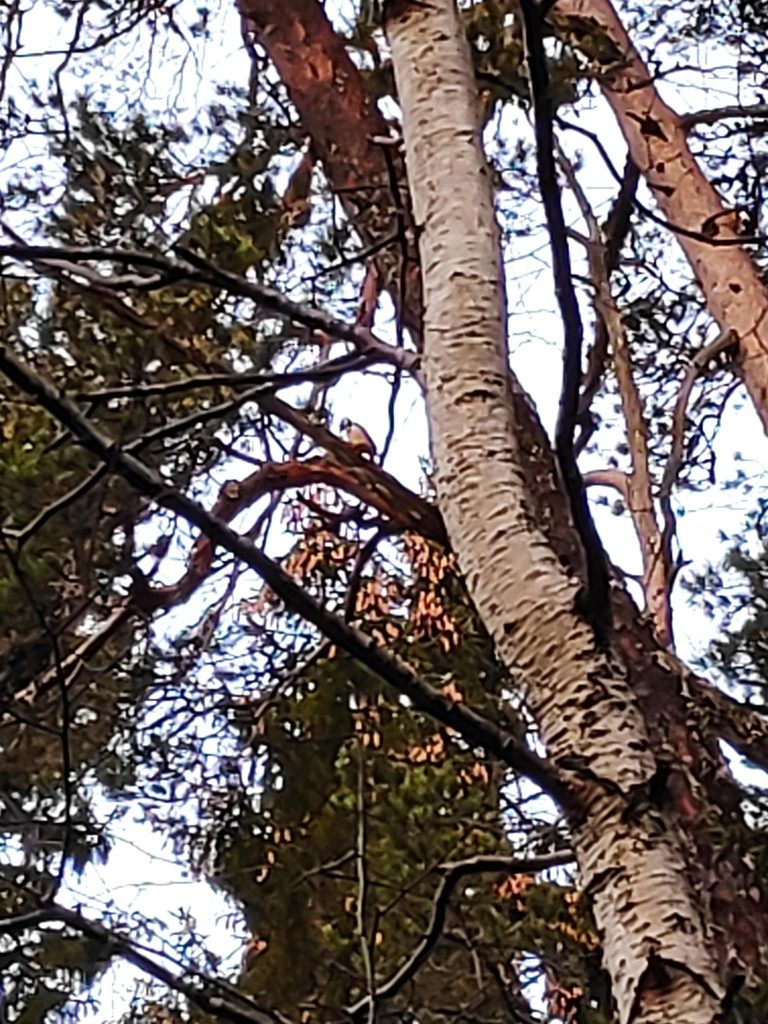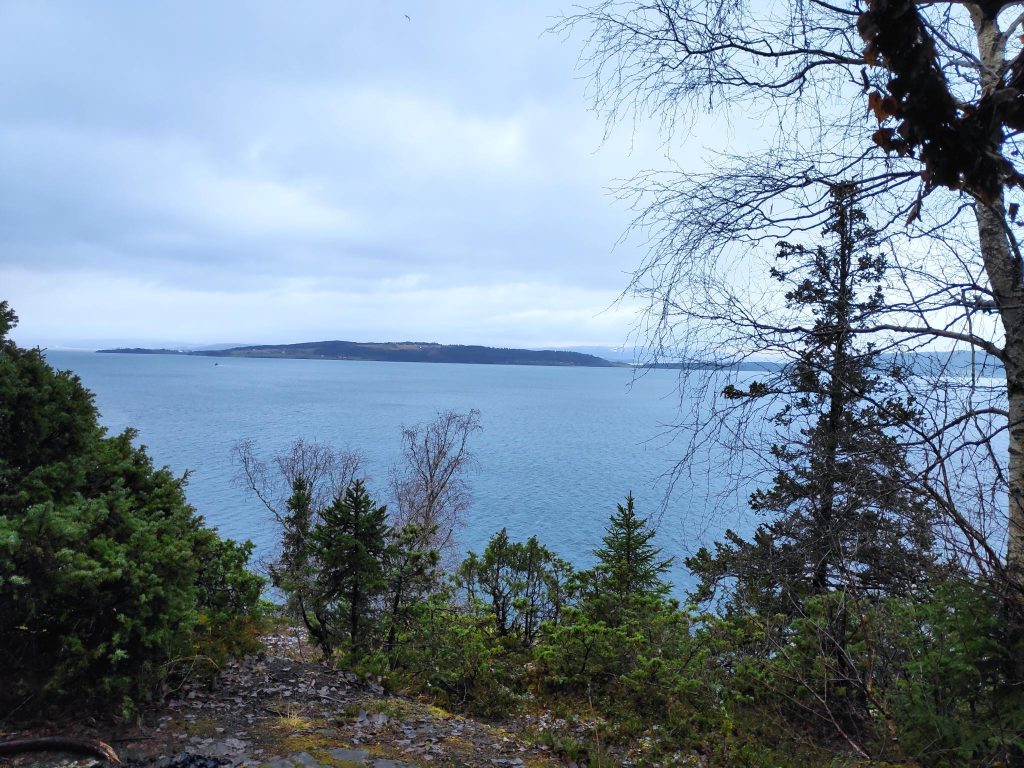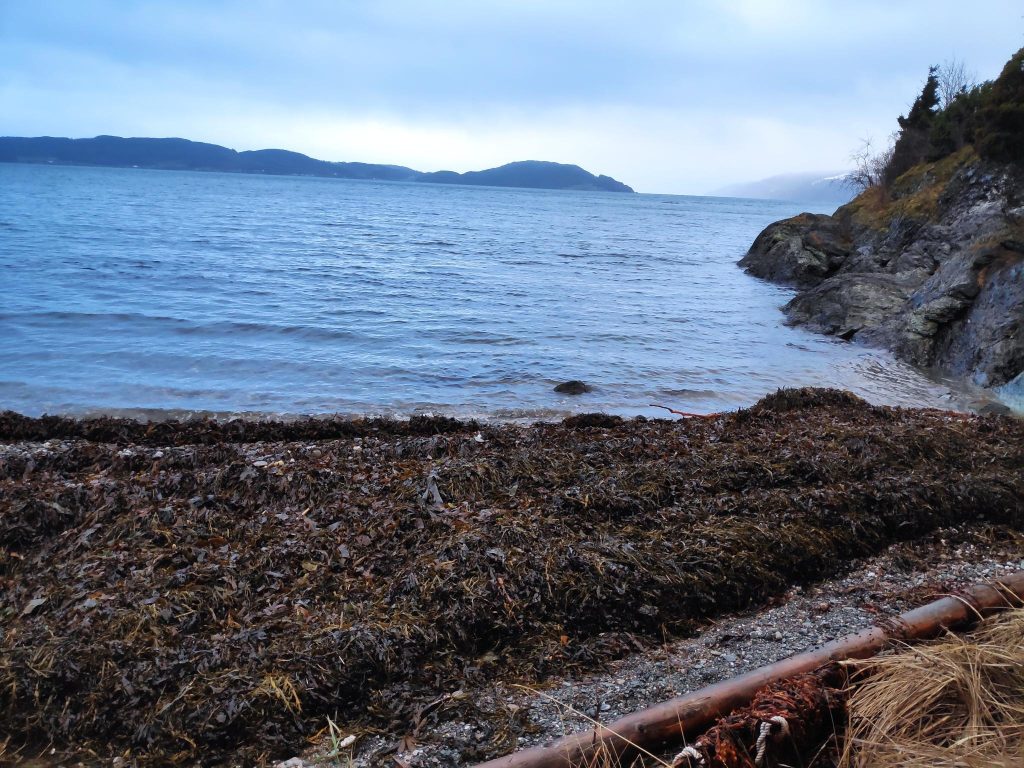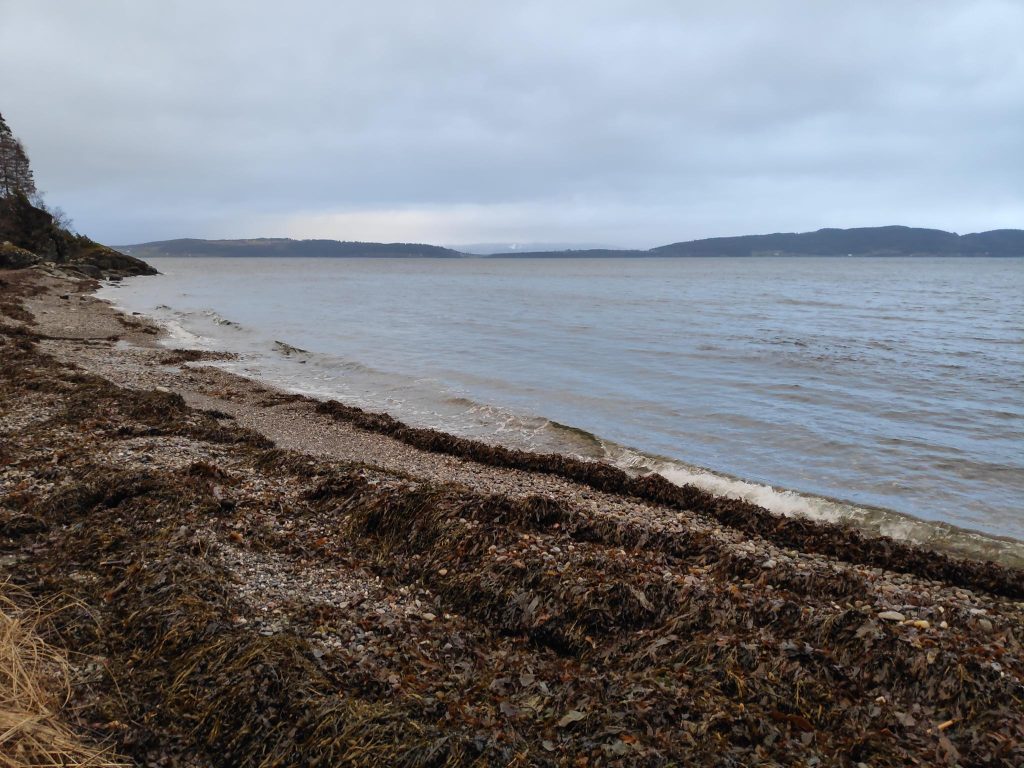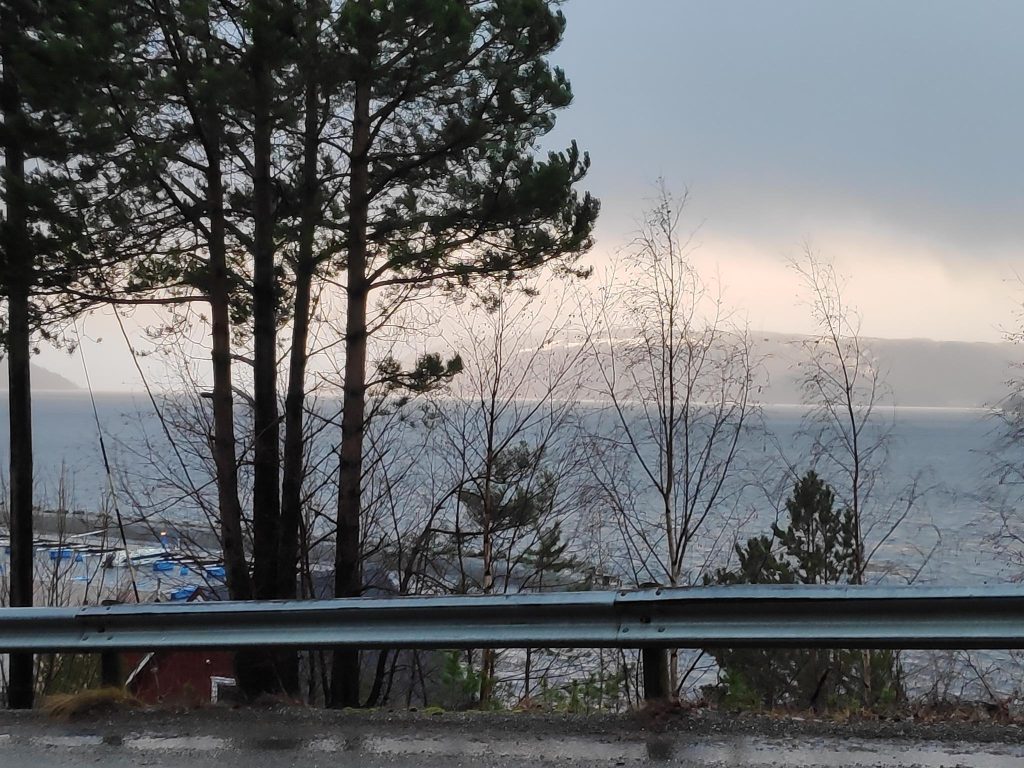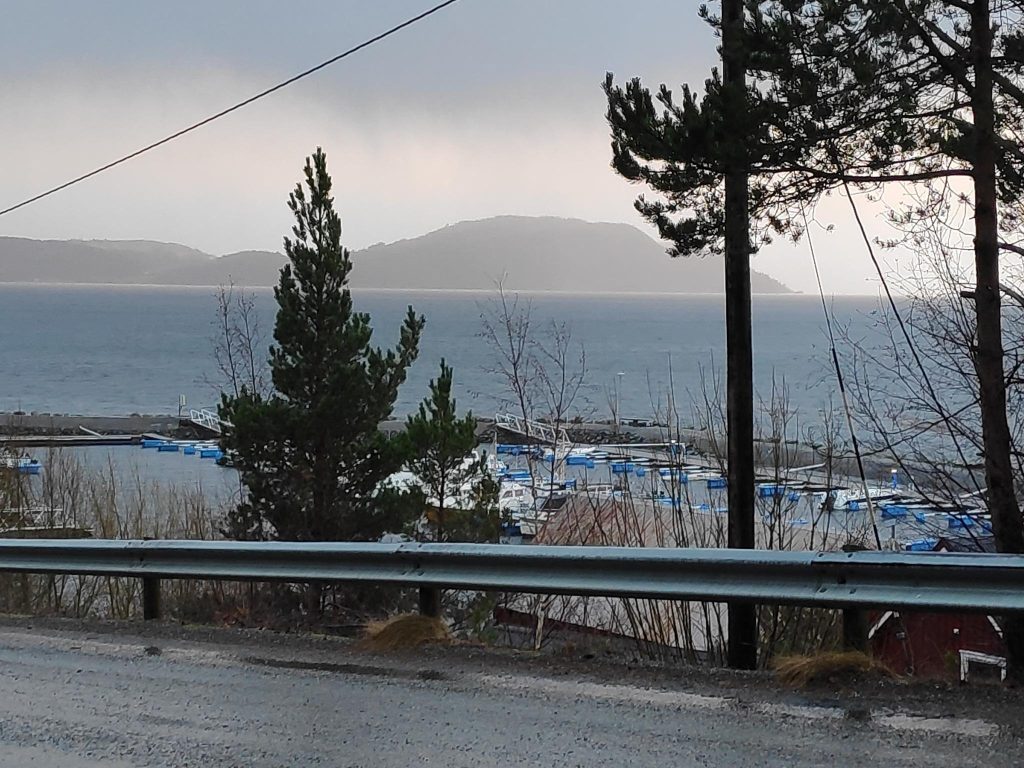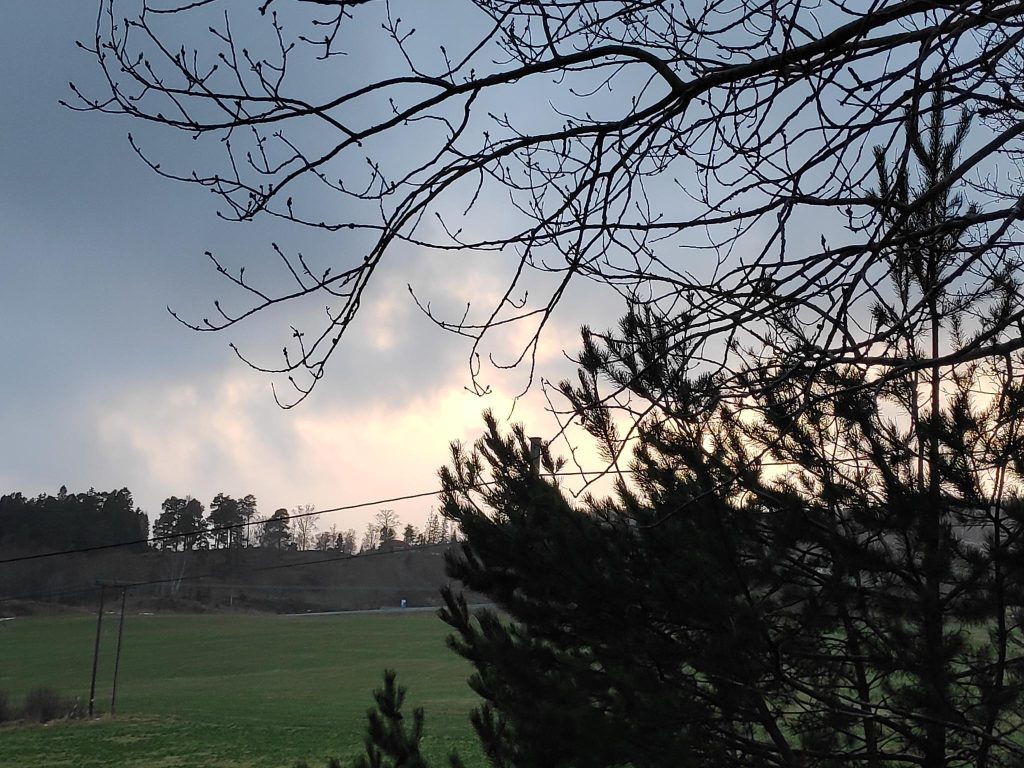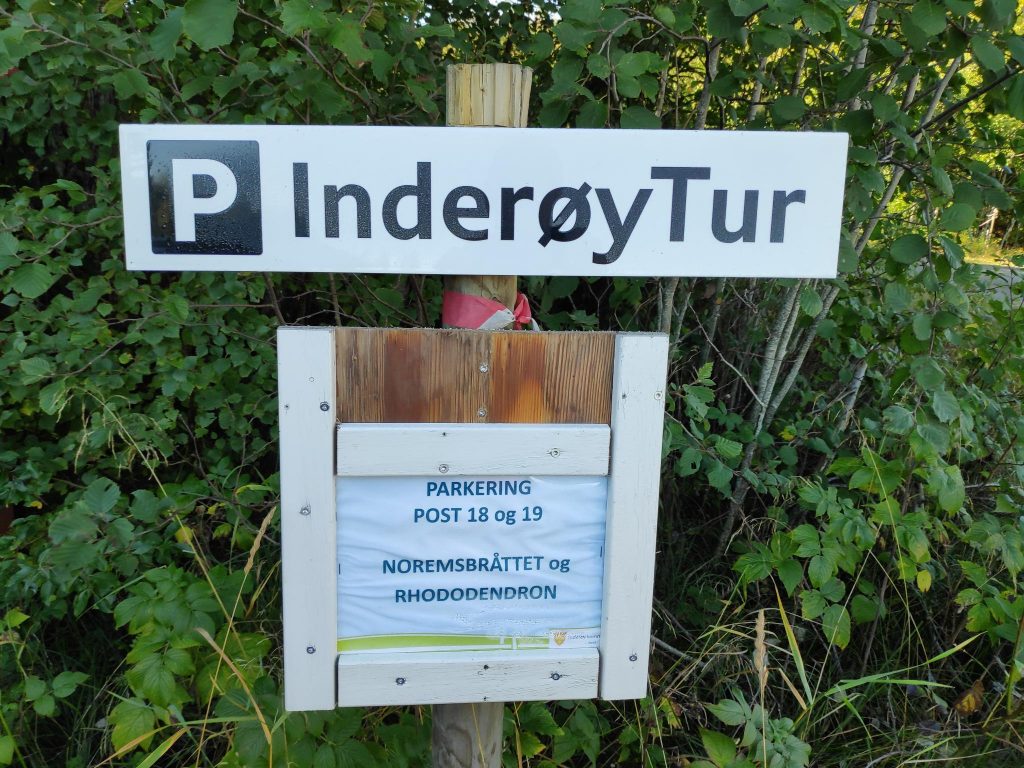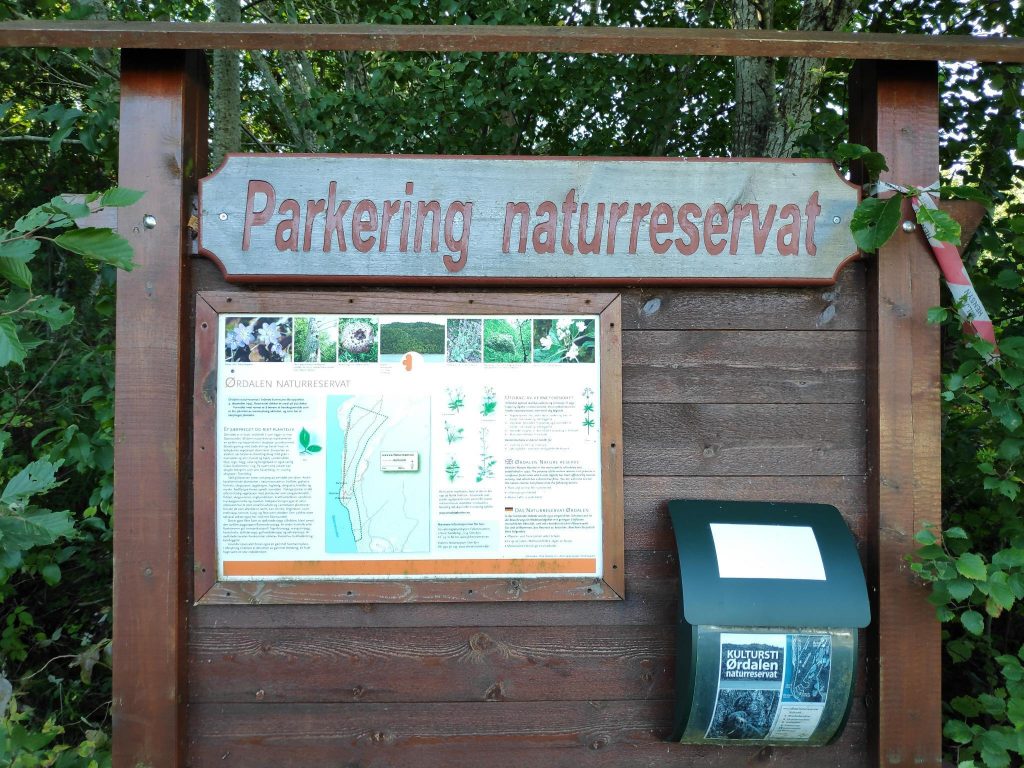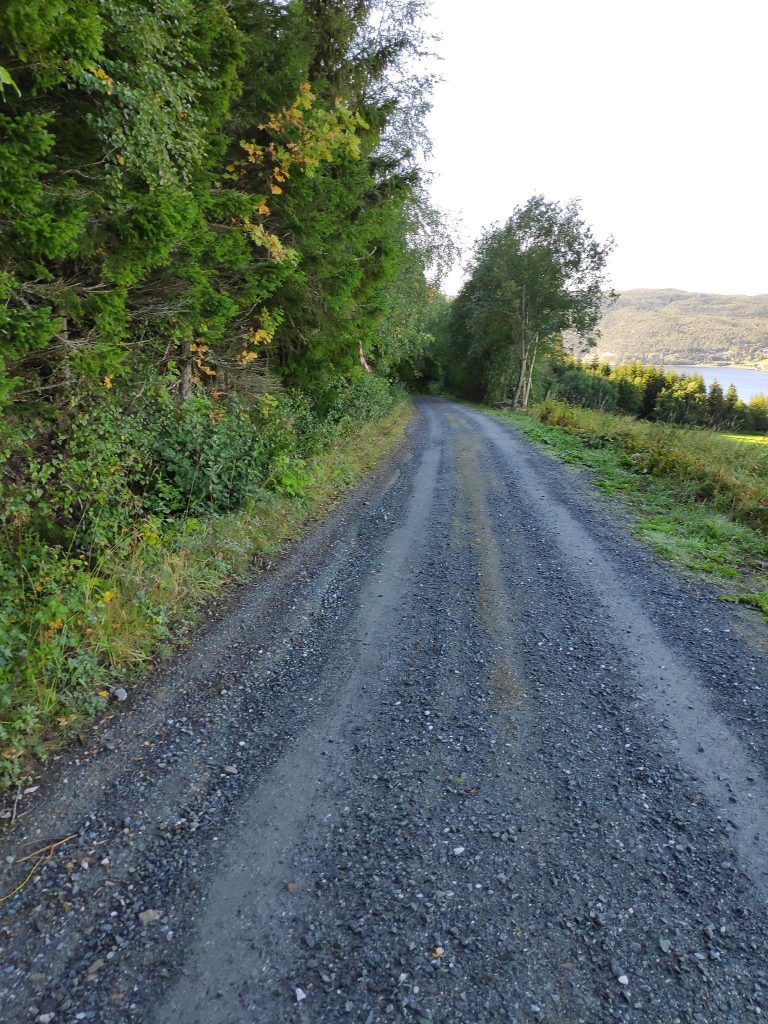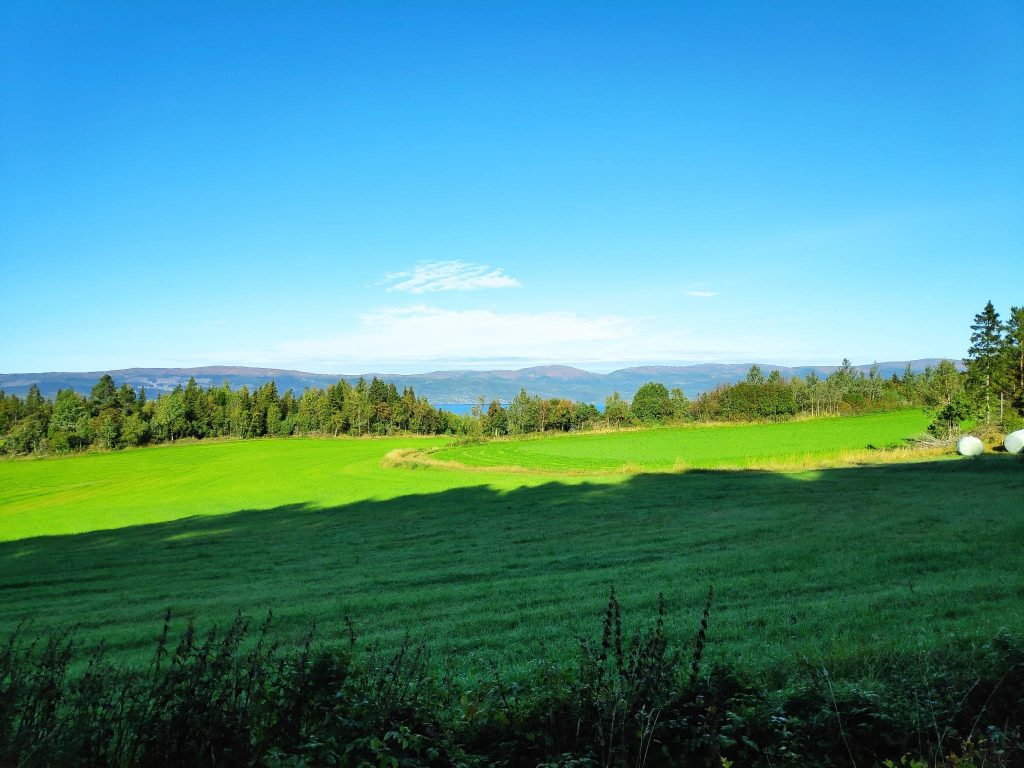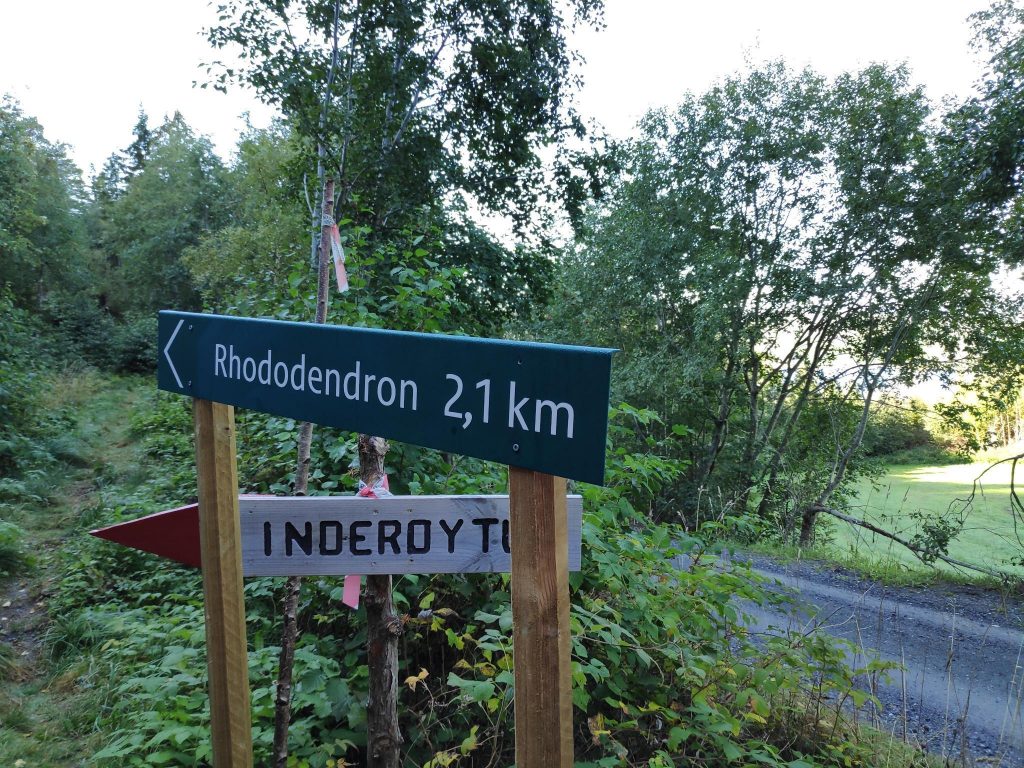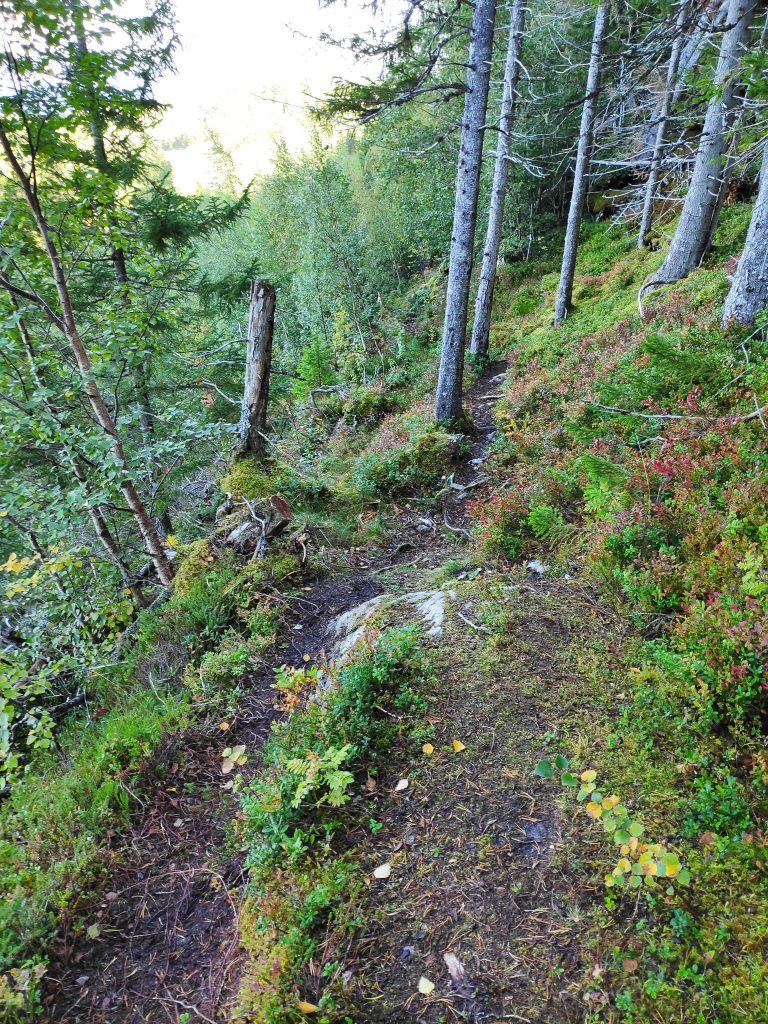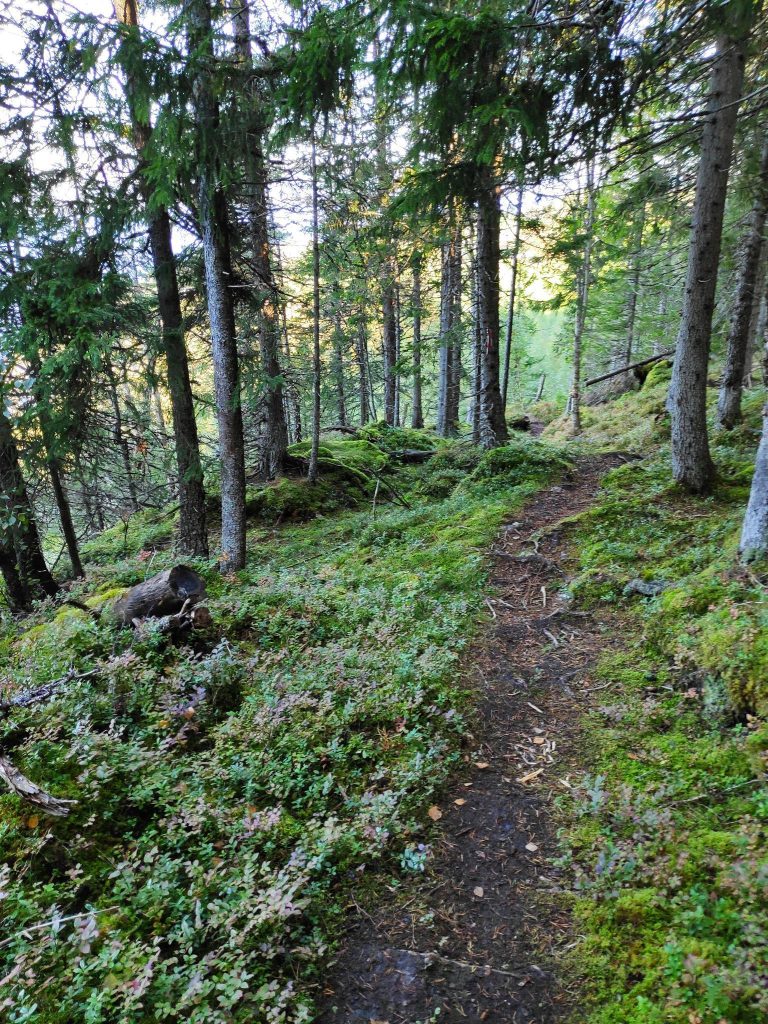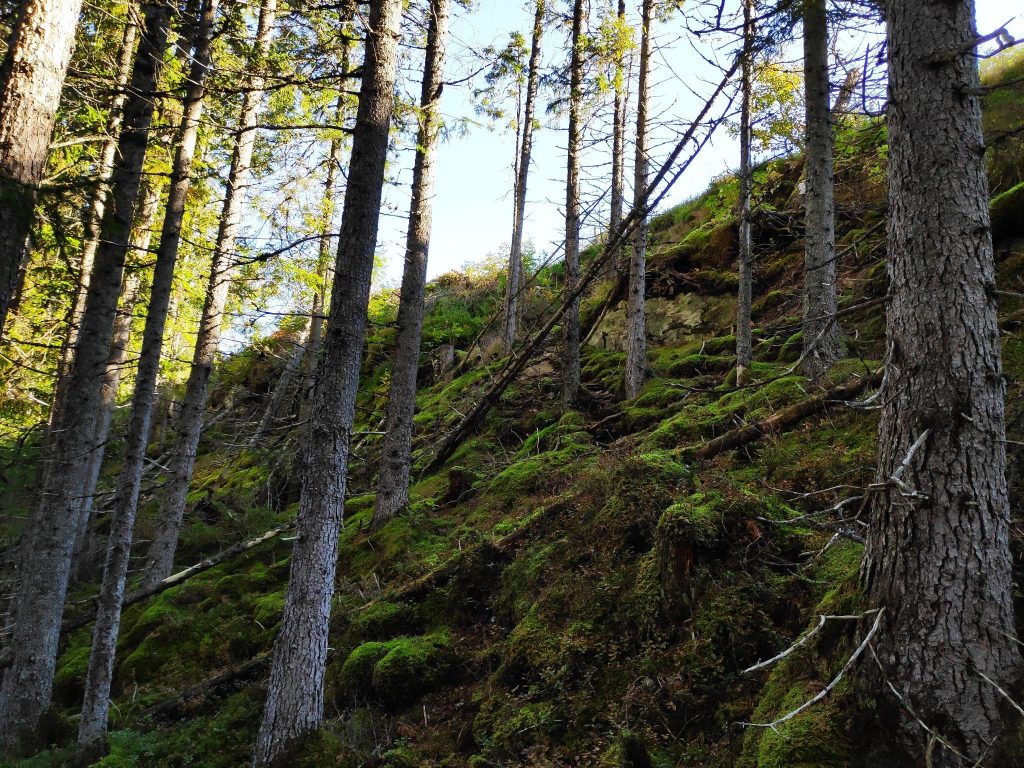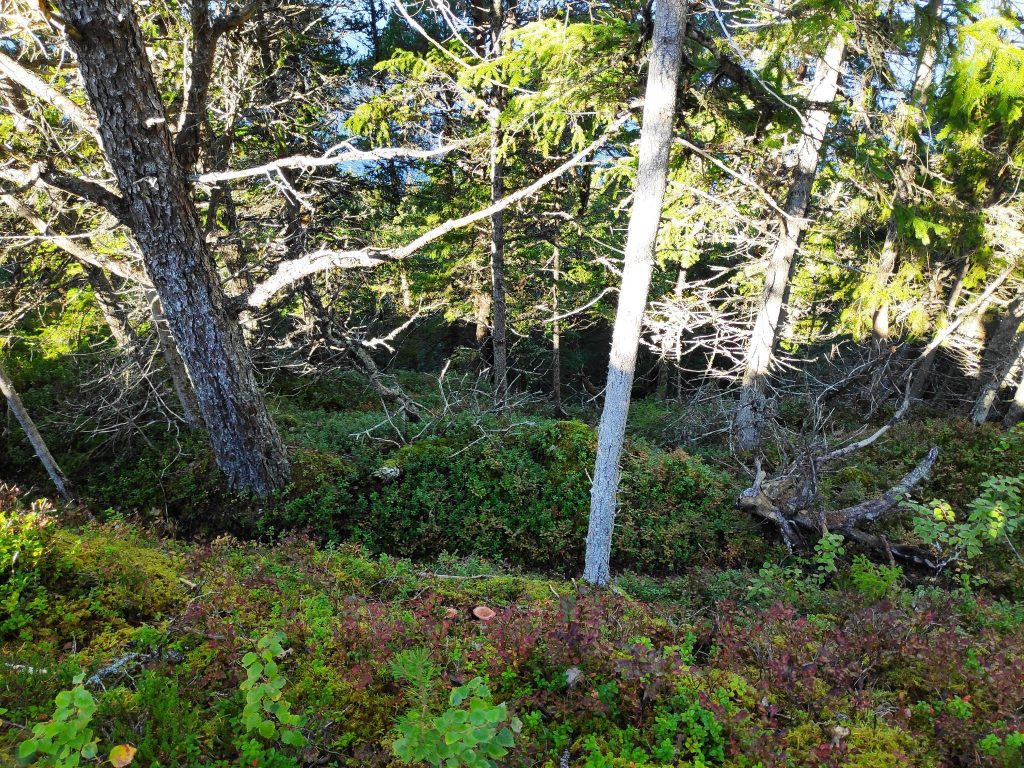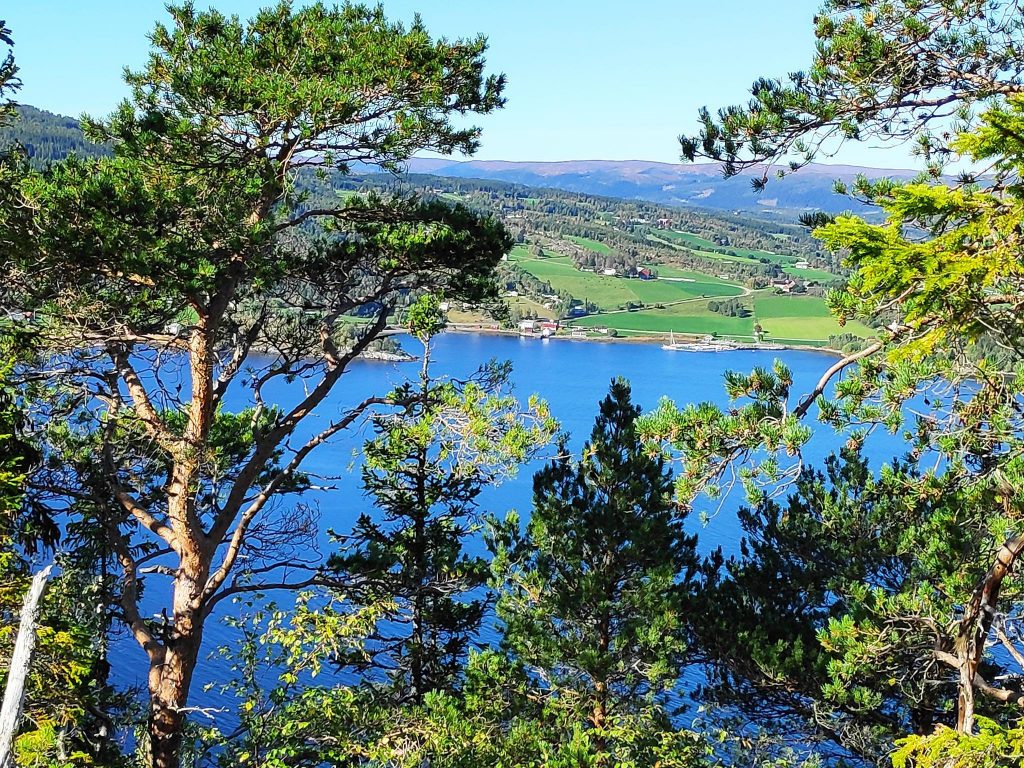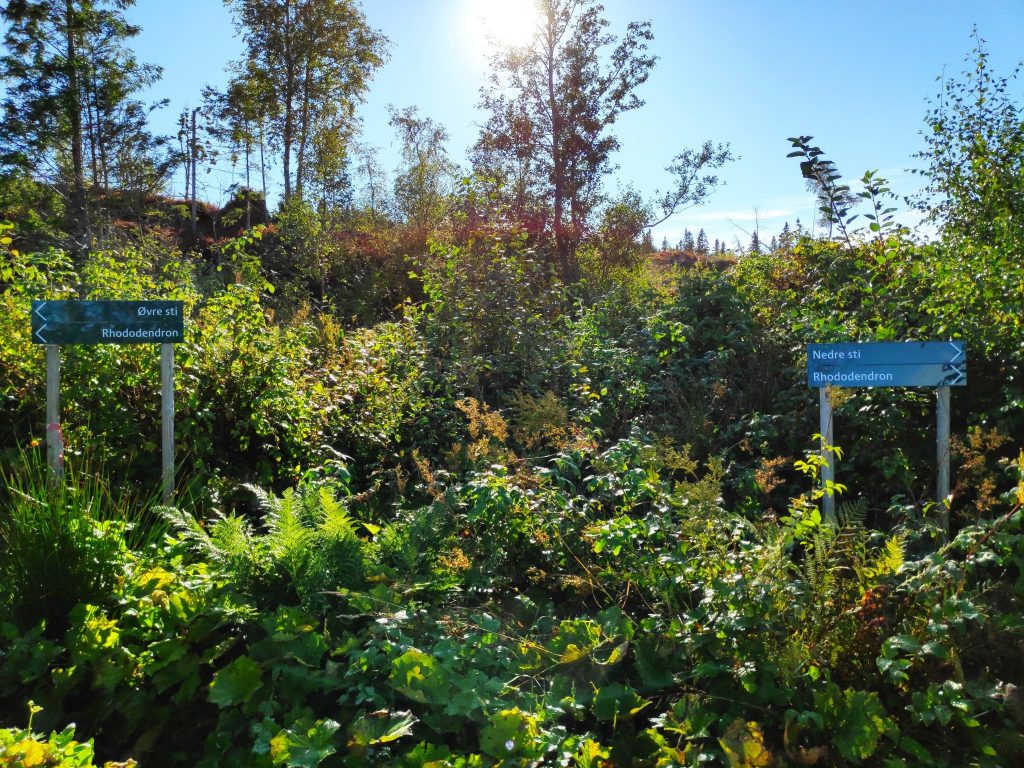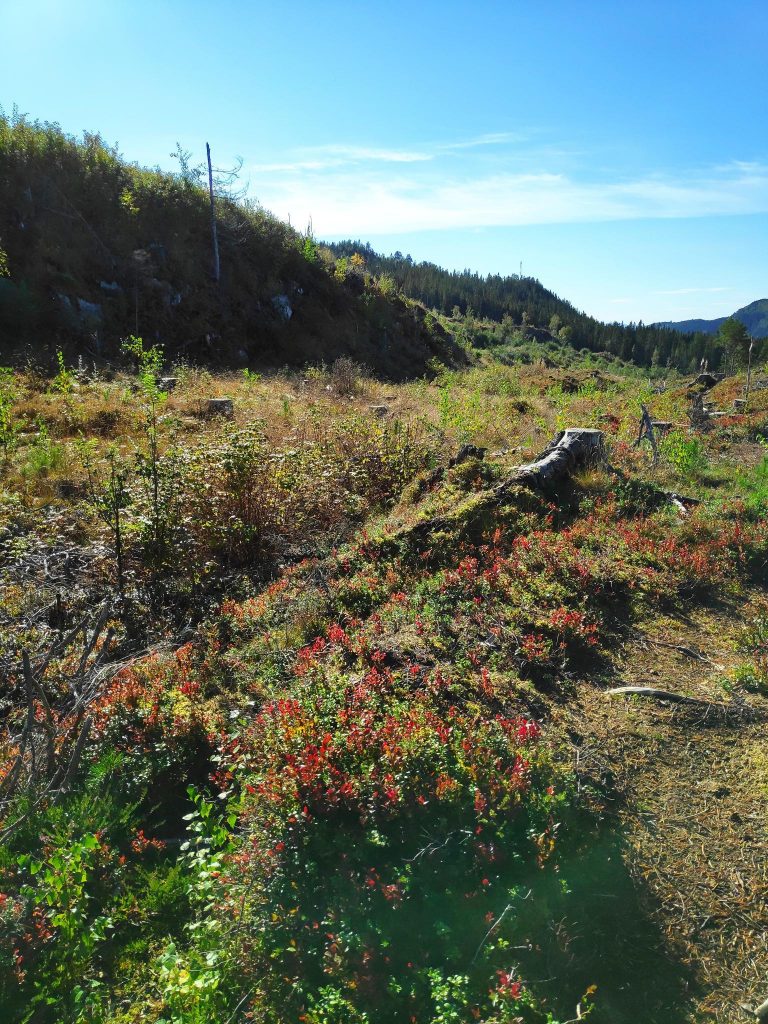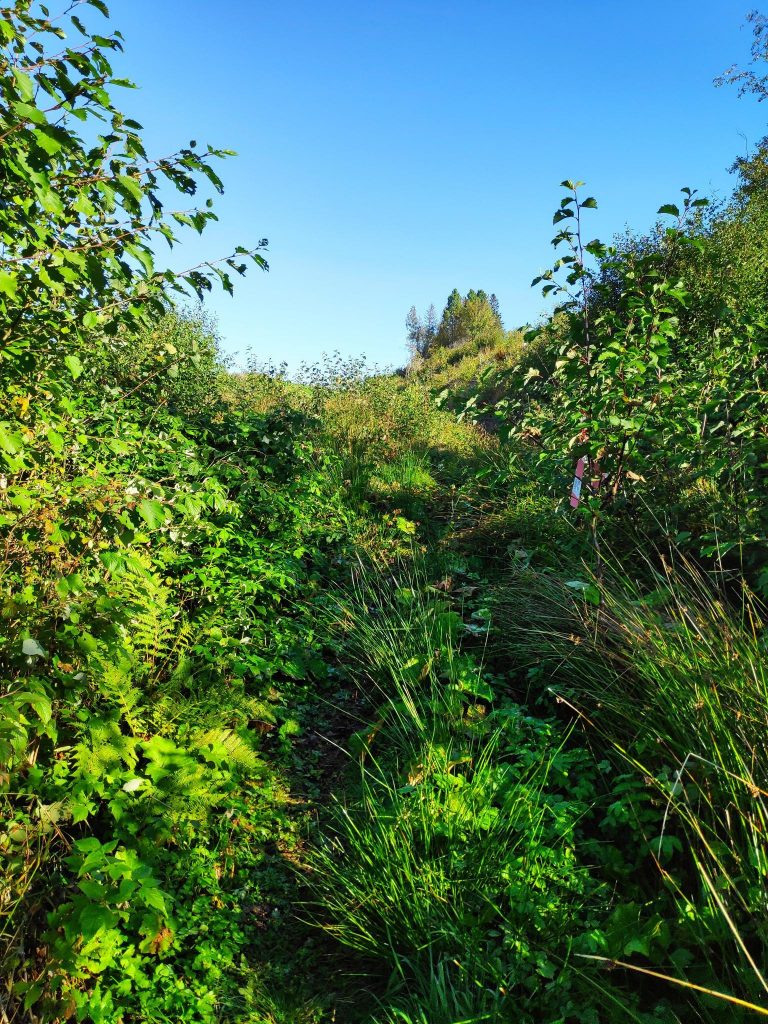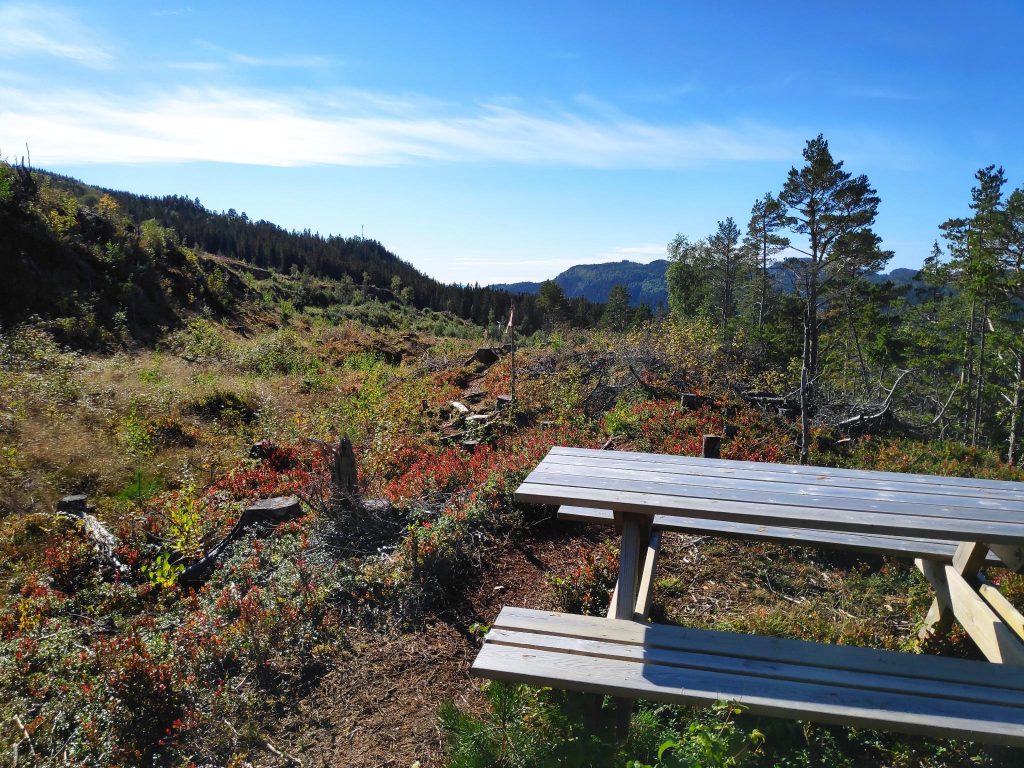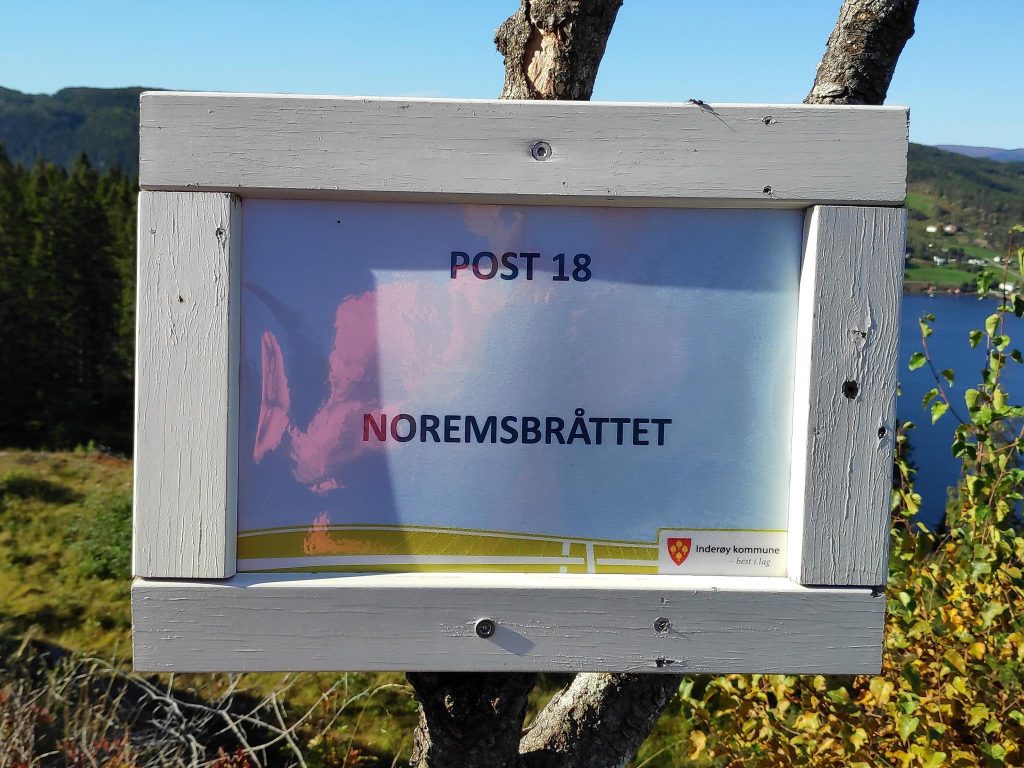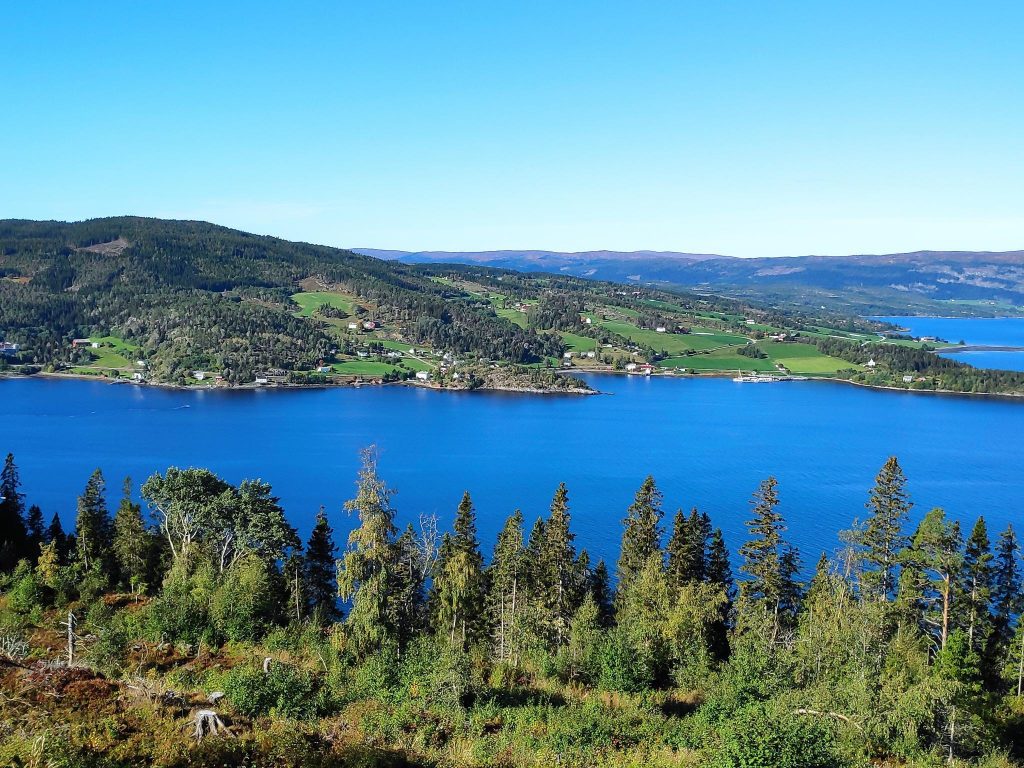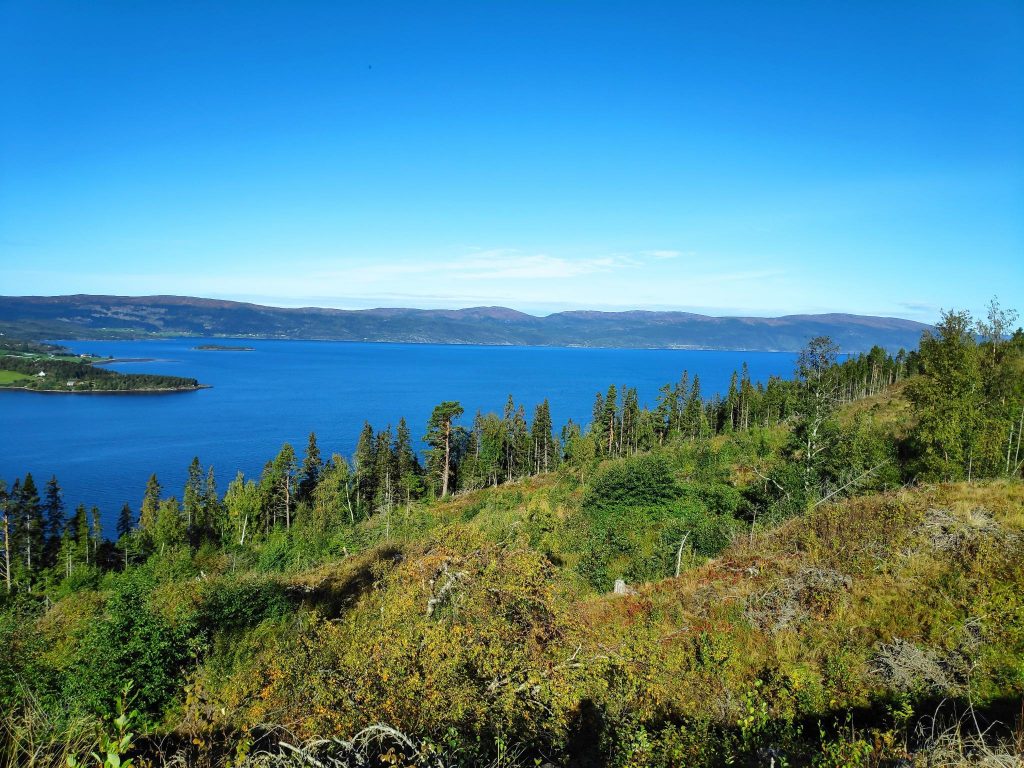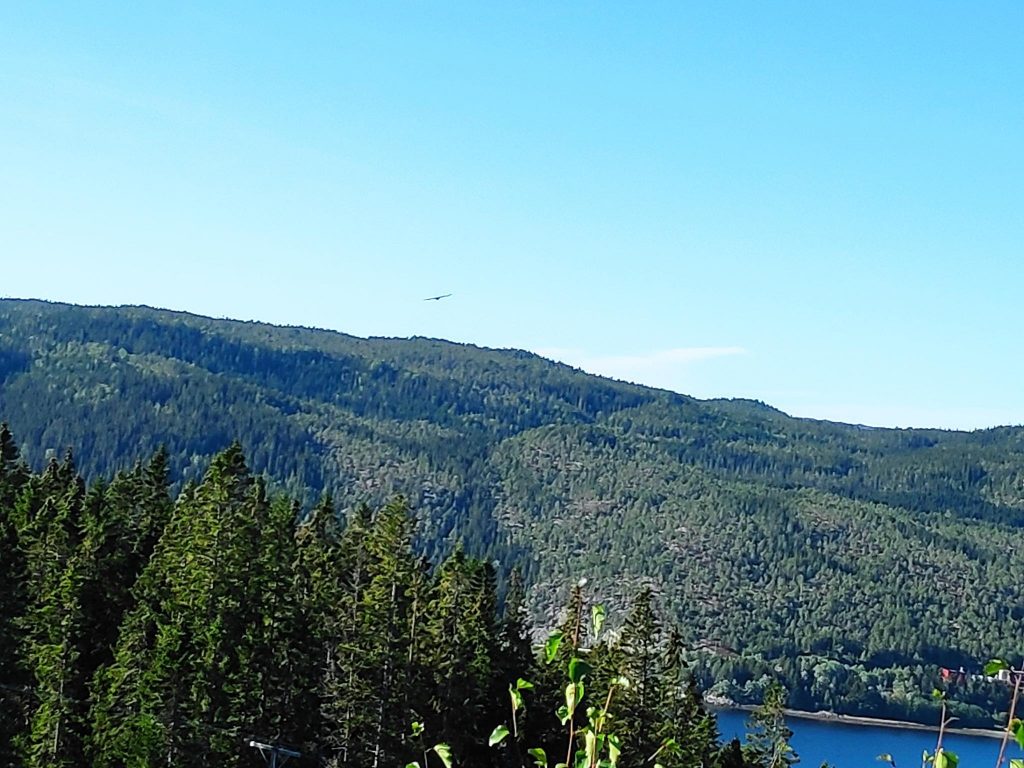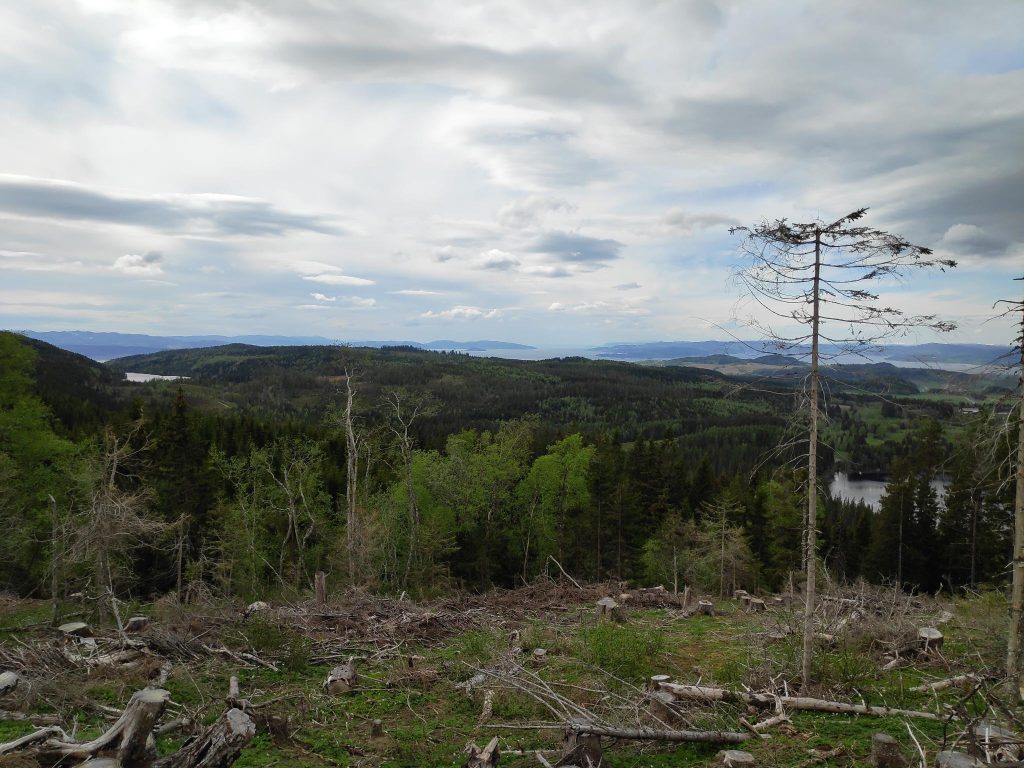
Tuesday, May the 24th, was a Bahá’í holy day, so my husband and I decided to take a walk in the hills at Røra. It is an area we both enjoy walking in. Today’s walk was about 2 hours plus a sandwich break for about 15 minutes. I have been to both Aunan and Floåsen before and if you want to read about the walk taken to Aunan in August 2021, you can read it here.
As we started our walk, I wondered what sort of theme I should have for this blog and my husband suggested “signs”, so that will be the main theme. What sorts of signs do we see while walking in the woods? Some are easy to read, some are directional (i.e. which way to go), some were about the place where we found the sign, some were almost impossible to read, some were official signs, some were hand-made. I think one thing that can be learned from some of these pictures is that signs with writing on them need to be looked after.
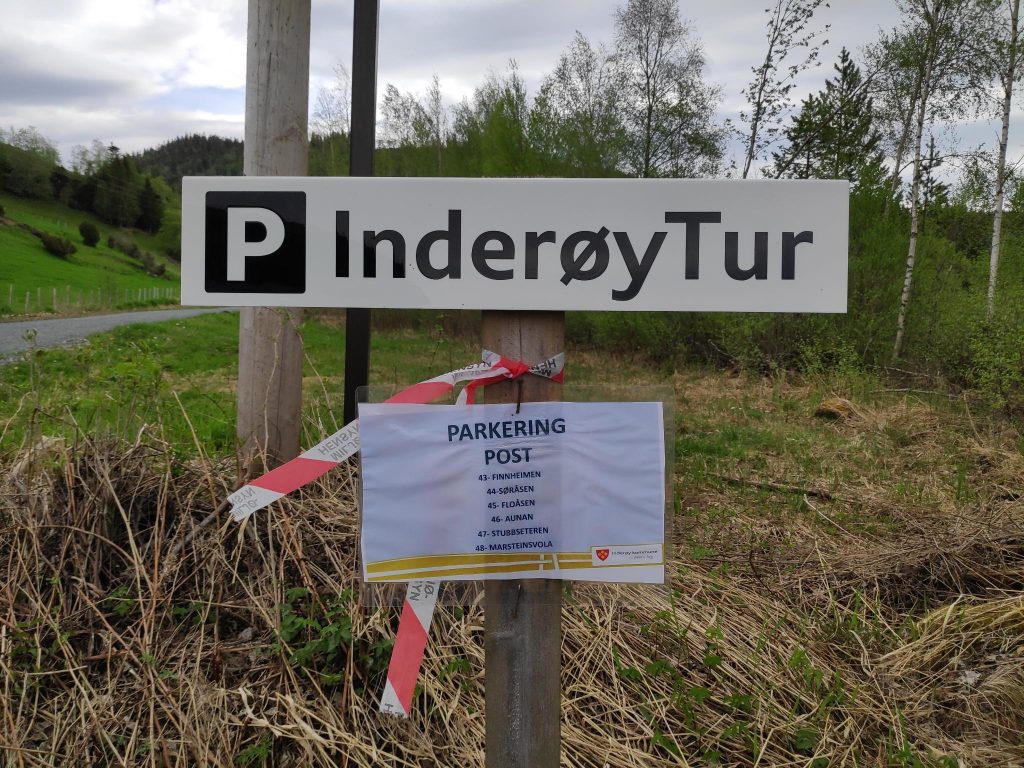
When taking an Inderøy walk, one of the first signs one sees is the indication of where parking is allowed. This year they are wanting people to park in one place and find multiple posts from the same parking spot. From this parking area, one can walk to six different posts depending on how far one wants to walk. We visited two posts, nr. 46 Aunan and nr. 45 Fløåsen.
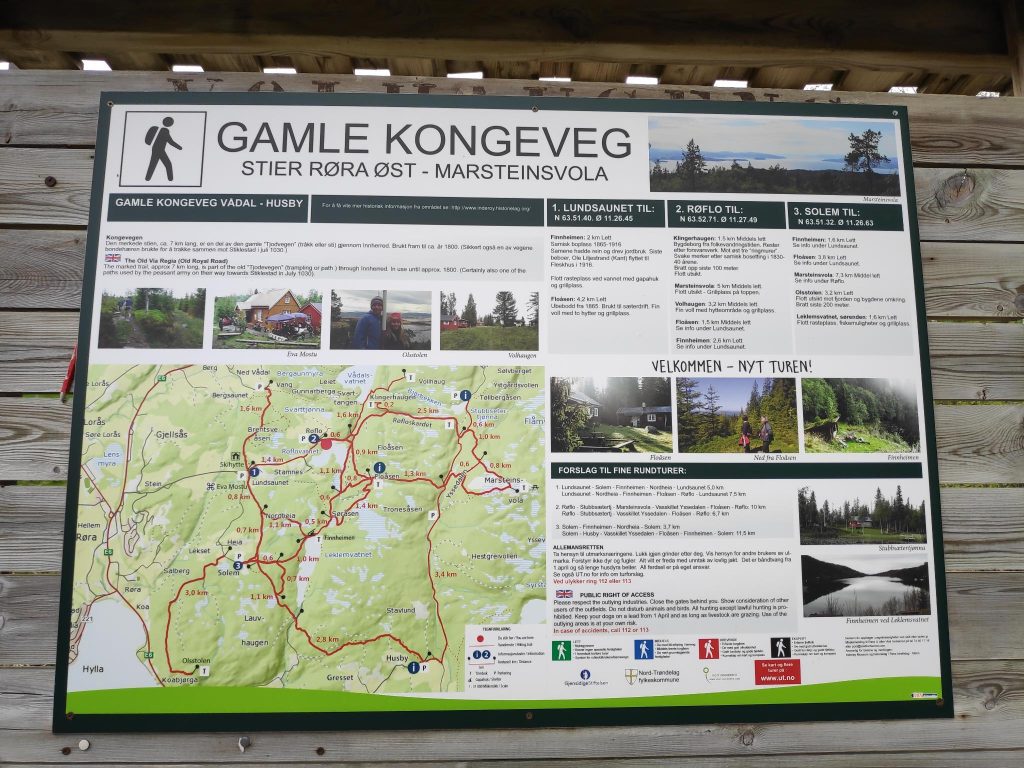
One of the things I have learned over the years (at least since having a camera on a smart phone) is to take a picture of the map that is posted at the parking area. One can always look at it if one isn’t sure which trail goes through. The app for the Inderøy Walks has a good map, but not all trails are actually marked on it. Today we were walking on some good trails that didn’t seem to be on the app’s map at all, though the dot that shows us where we actually are indicated that we were going in the correct direction.
Our walk started at Røflo lake which is the main drinking water source for the municipality of Inderøy. The water is purified before sending it out to the customers which also include a juice factory.
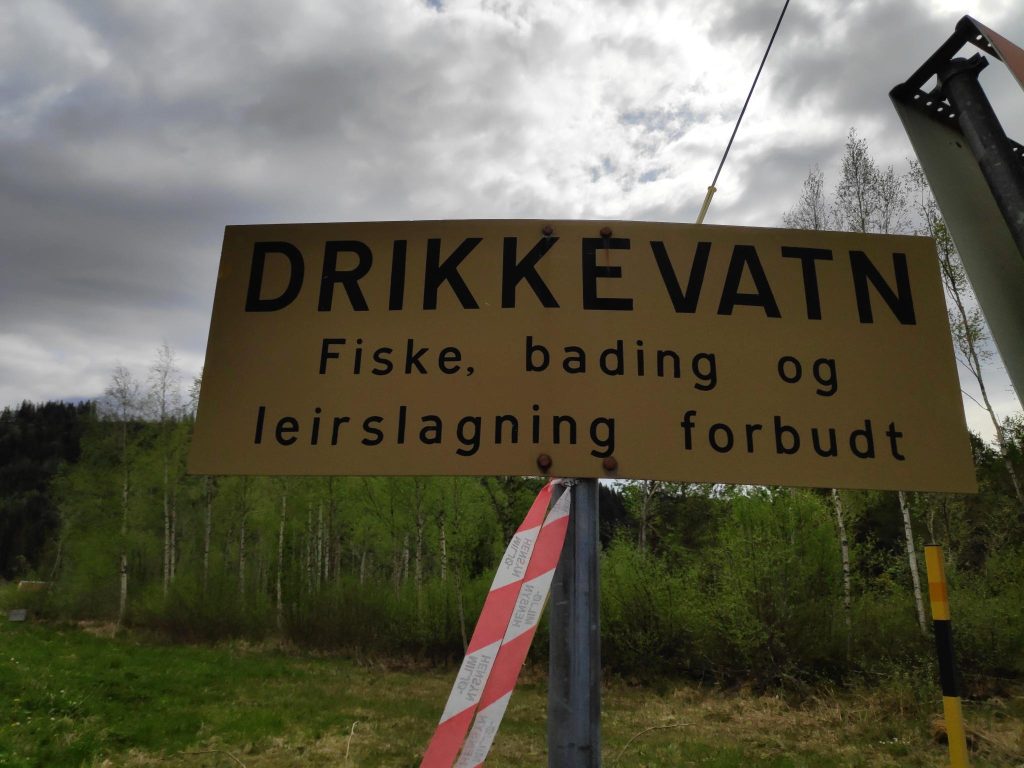
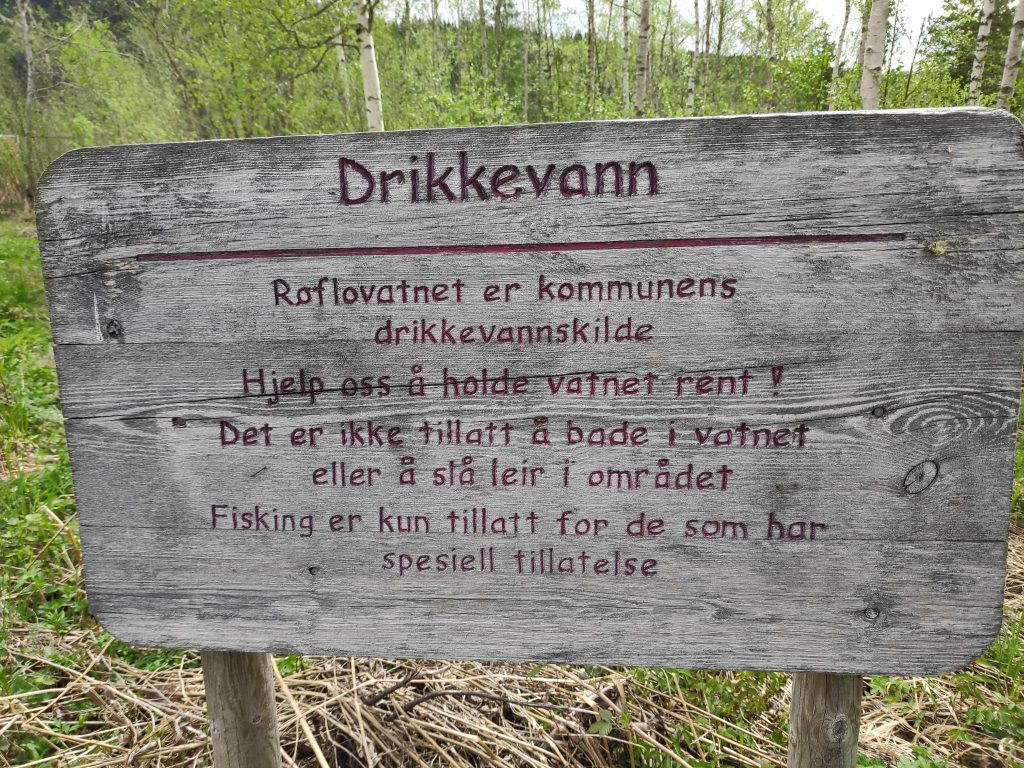
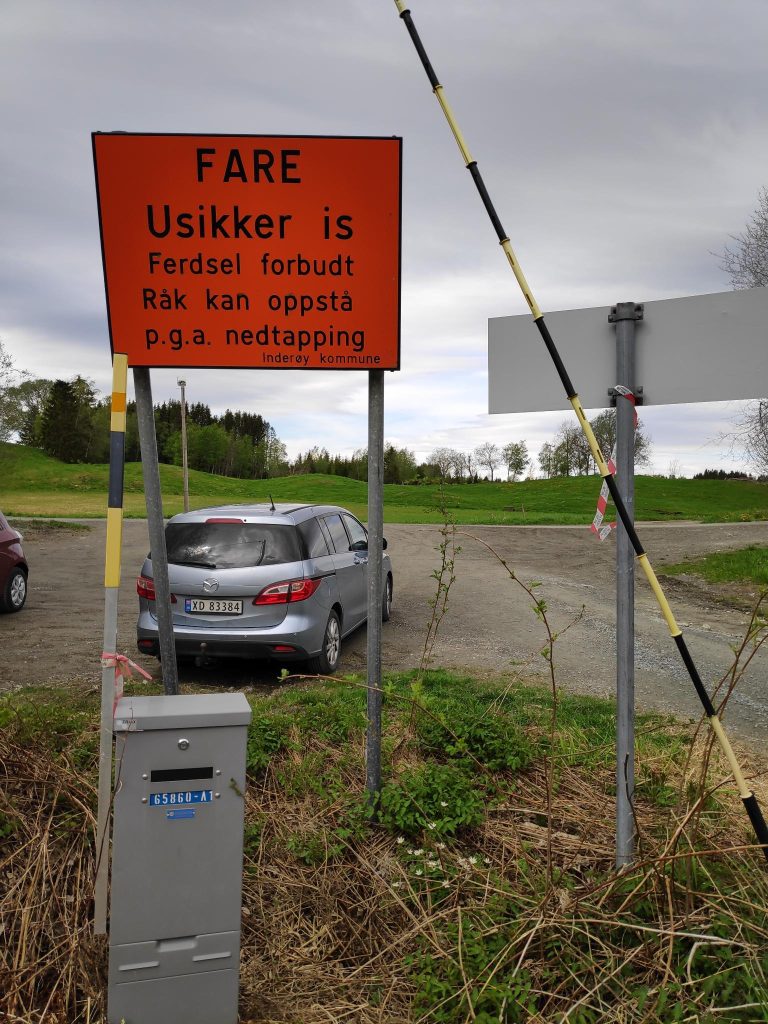
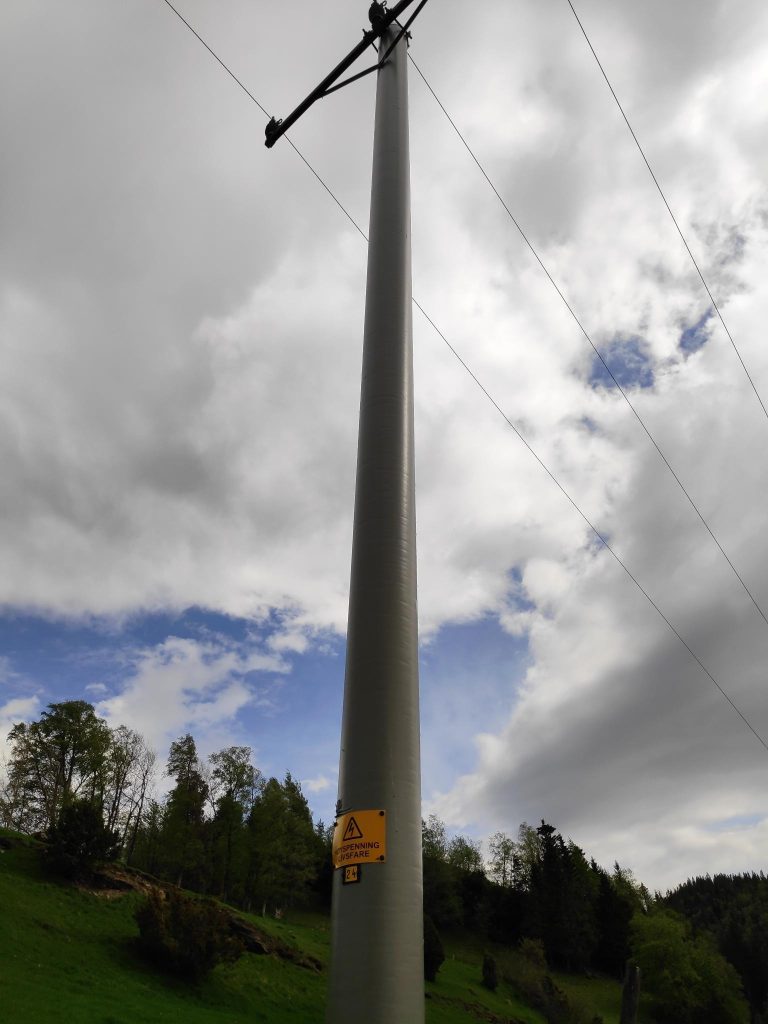
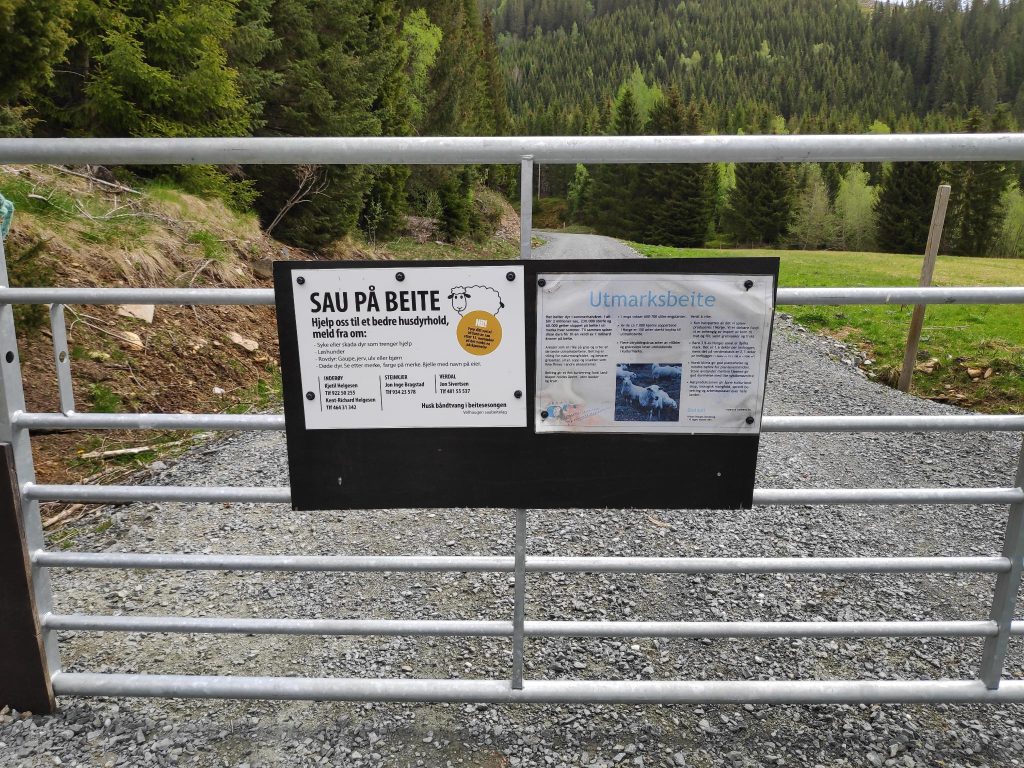
The field closest to the parking area had cows out today. They are usually kept close to the barn for milking. However sheep are sent up into the hills for the summer and are expected to look after themselves. Here there is a fence so that they don’t get out onto the road. We saw the sheep briefly and the lambs are still quite small. We saw two lambs laying on the grass resting and eating the grass that was in reach!
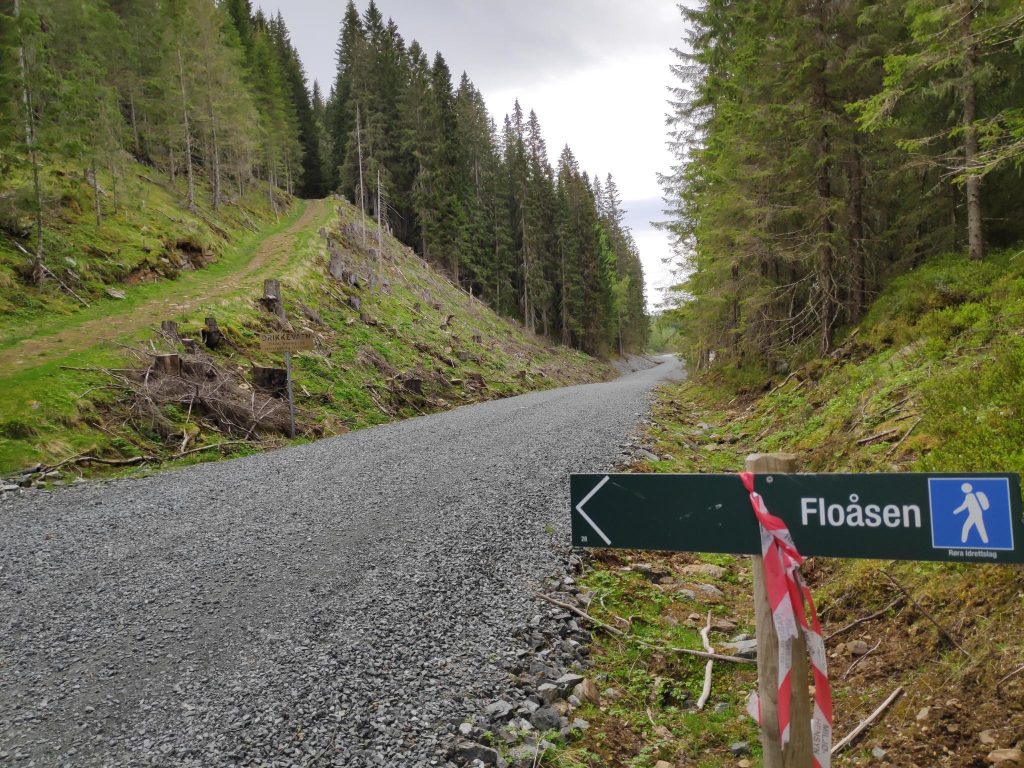
Most of the walks in Inderøy have good signs to indicate how to get places. The sign above shows that we are on a blue trail (not so easy trail, but not too difficult either) taking us to Floåsen. Under the blue man is the name of the organization that is responsible for this trail, Røra Sports Club, and at the extreme lower left hand corner is the number 28. All this type of signs have a number. The red and white tape on the sign indicate that this is a marked trail for this year’s Inderøy Walks.
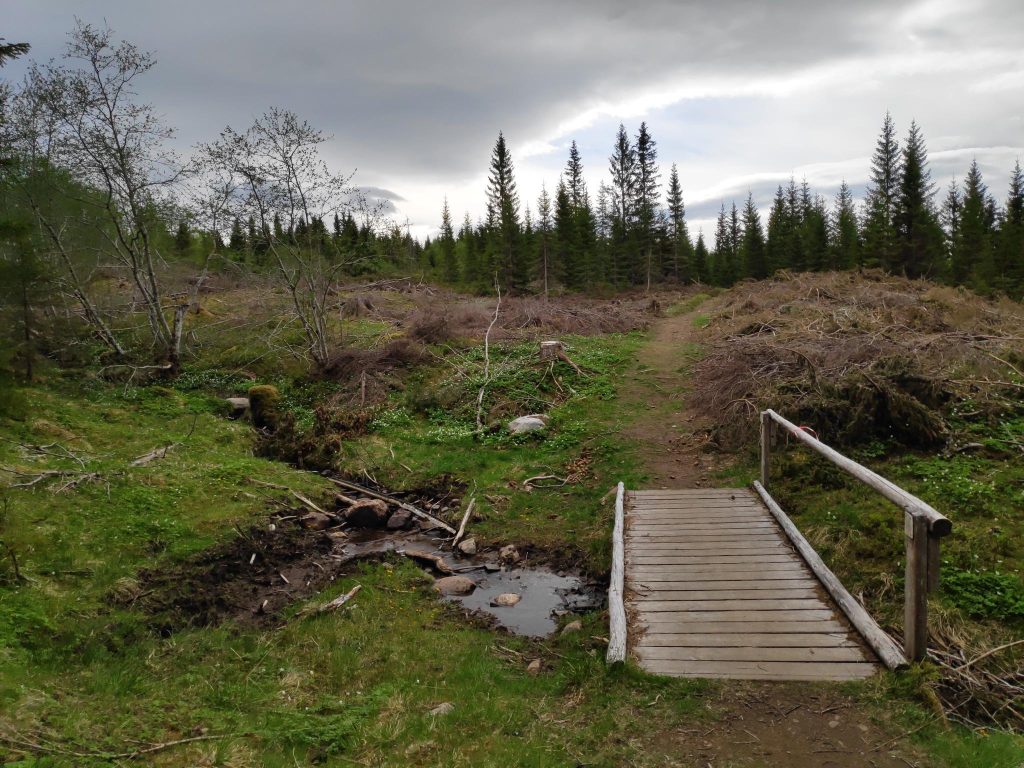
We came to a bridge with a railing, crossing a stream that was very gentle today. Wooden bridges like this can get very slippery in the rain so having a railing on one side is very nice. On this bridge there were also two signs, neither of which were easy to read.
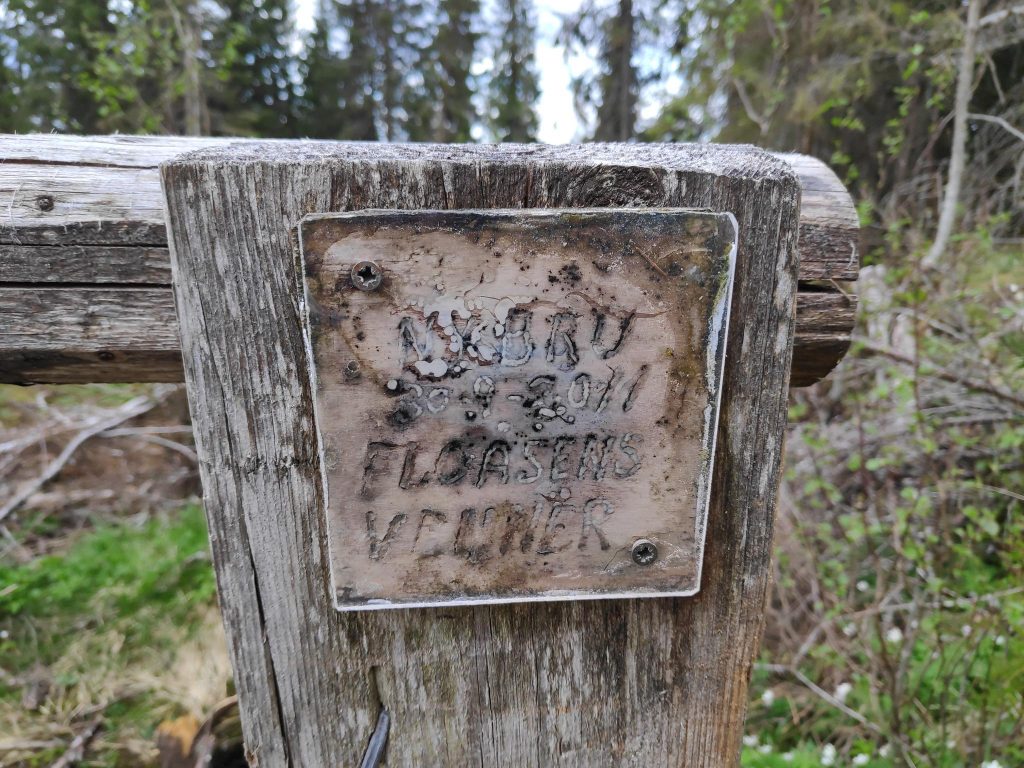
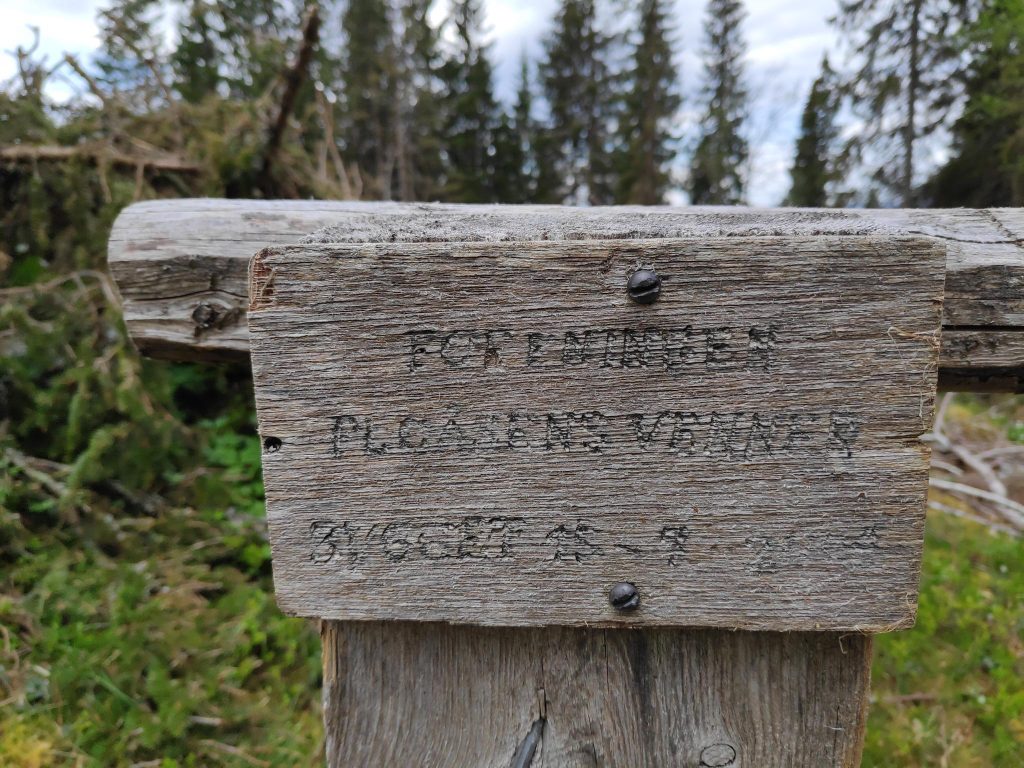
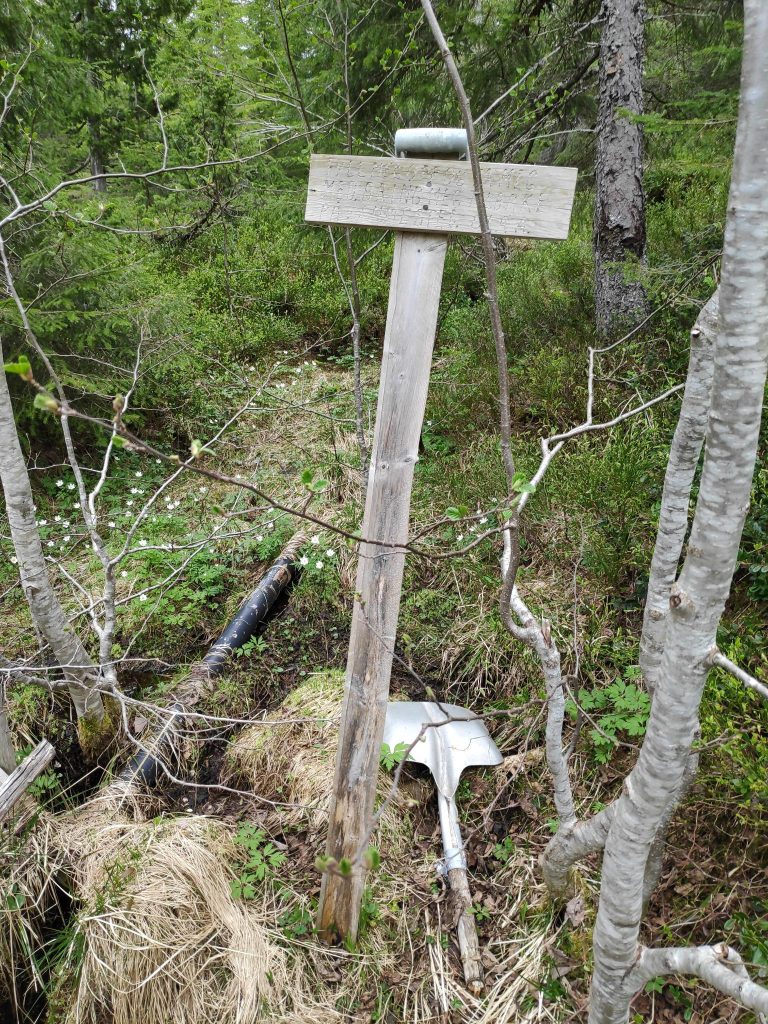
This was the first time that we had gone walking in this area this year. Last year we had gone too early and the trail we had taken was still covered in a lot of snow. So I was curious to see if there was much snow left at all. We’ve had plenty of warm weather and sunshine so I wasn’t expecting too much snow left now.
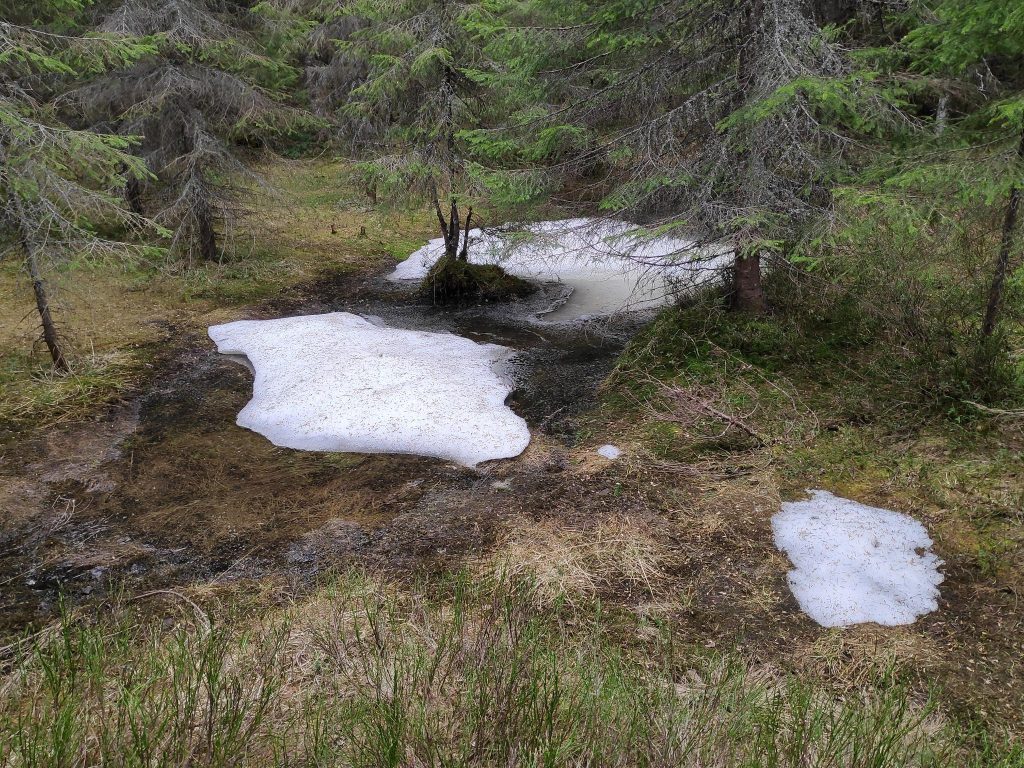
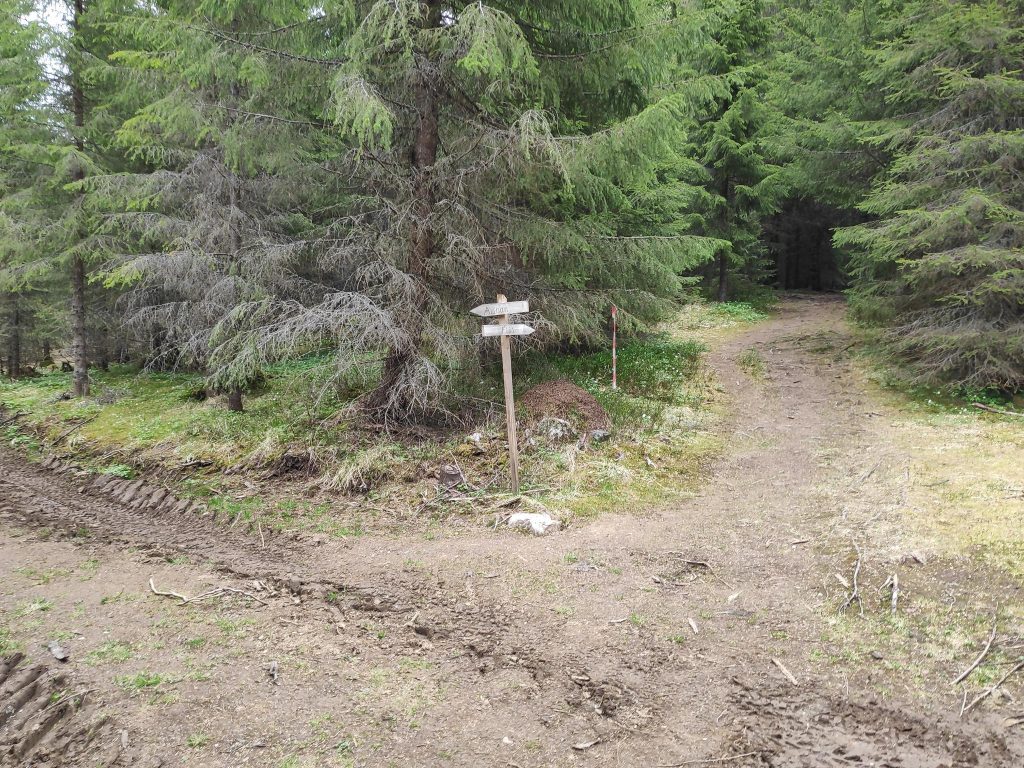
Aunan is a relatively new place to go to in these hills. It is a hilltop that has been recently logged so that there is a beautiful view looking north and west. These signs have been put up after the more professional signs were erected along the trails. At the distance this picture is taken, it is hard to read what is written, but it was quite clear when one stood closer. We headed off to the left to go to Aunan first. We made a circle tour and came back to this intersection on our way back from Floåsen.
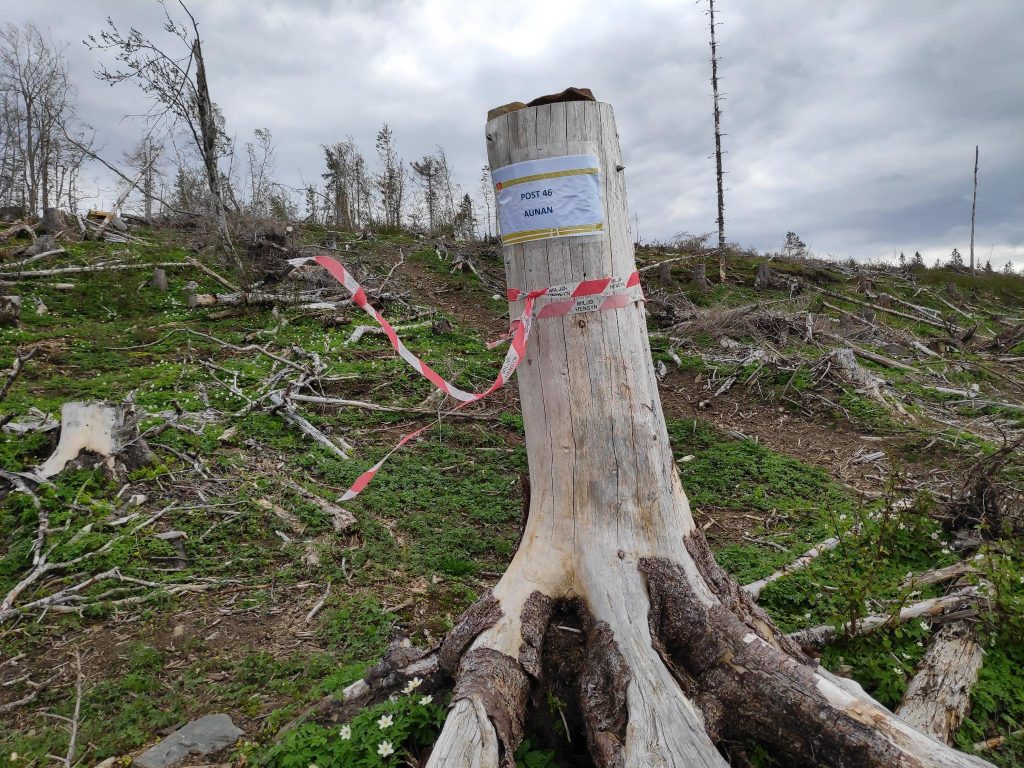
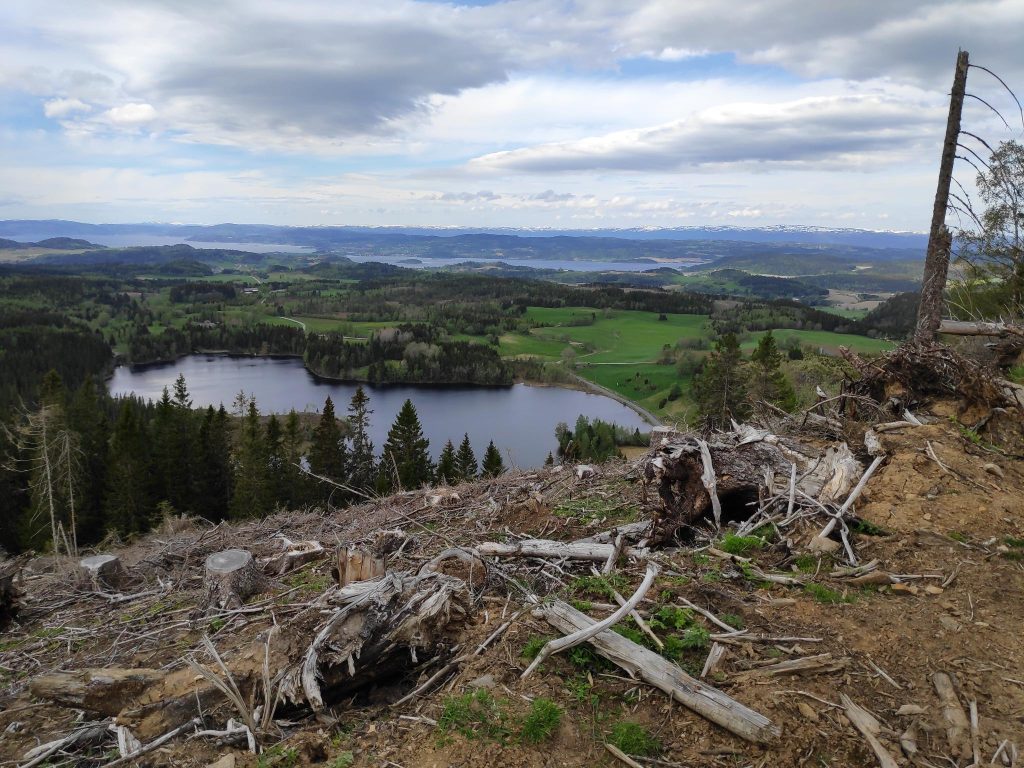
On the way up to Aunan I had seen a sign that indicated a path and I suggested to Brock that we take it and explore. He agreed, so we ended up taking the long way round to Floåsen, but along lovely trails through the forest.
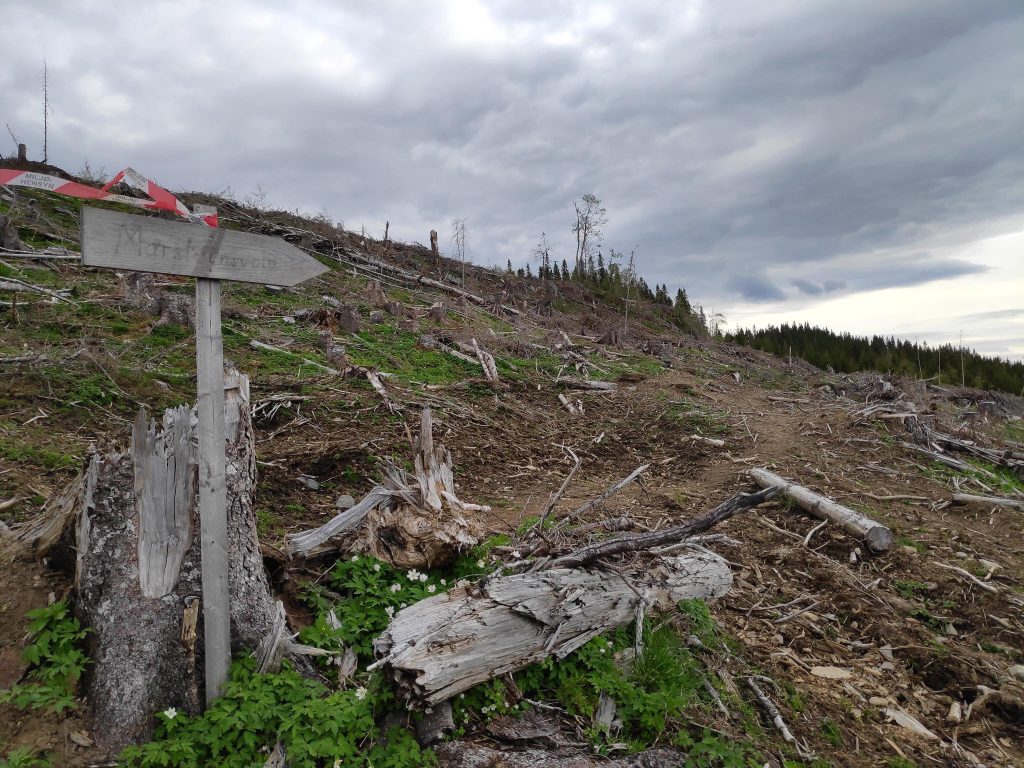
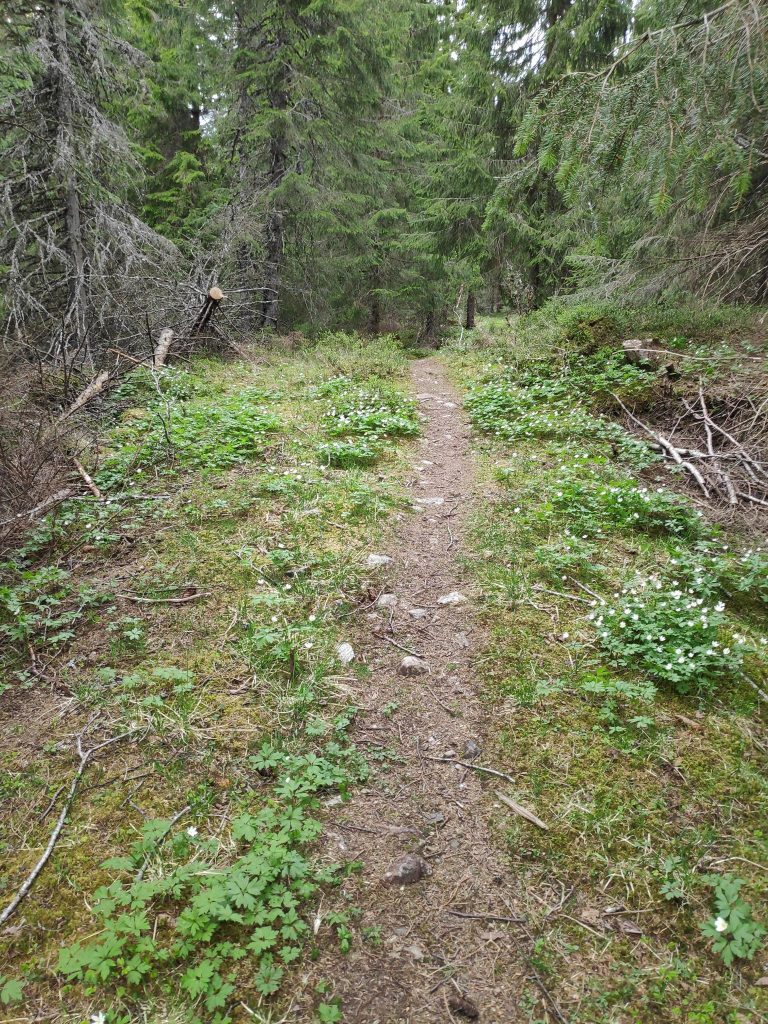
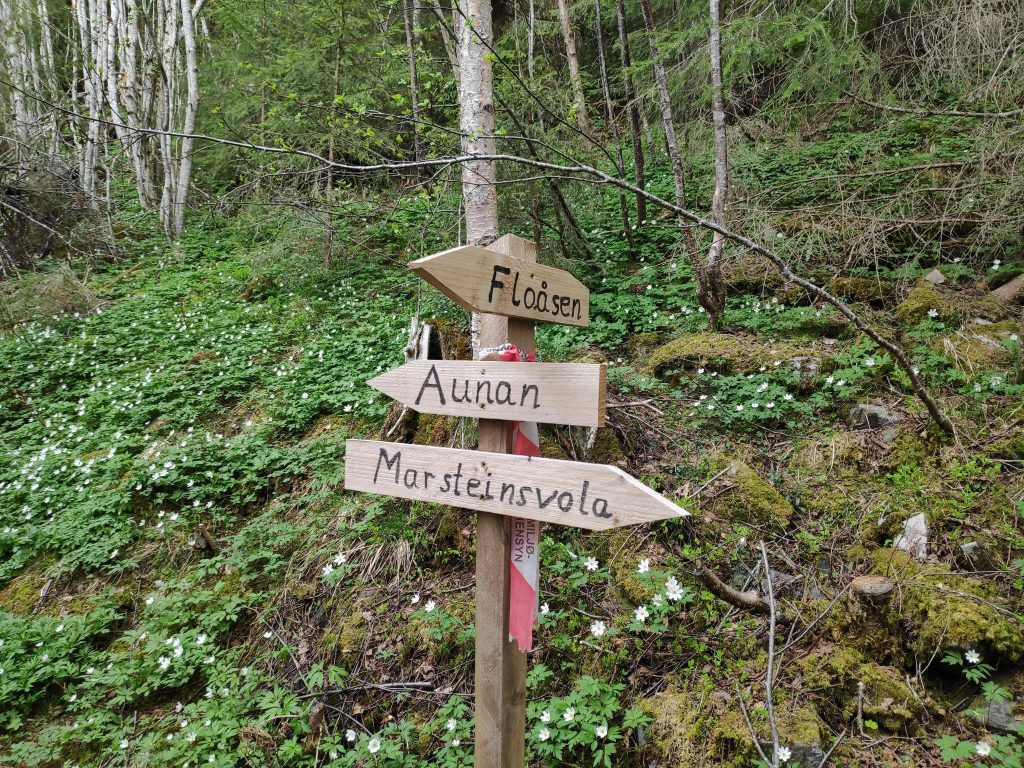
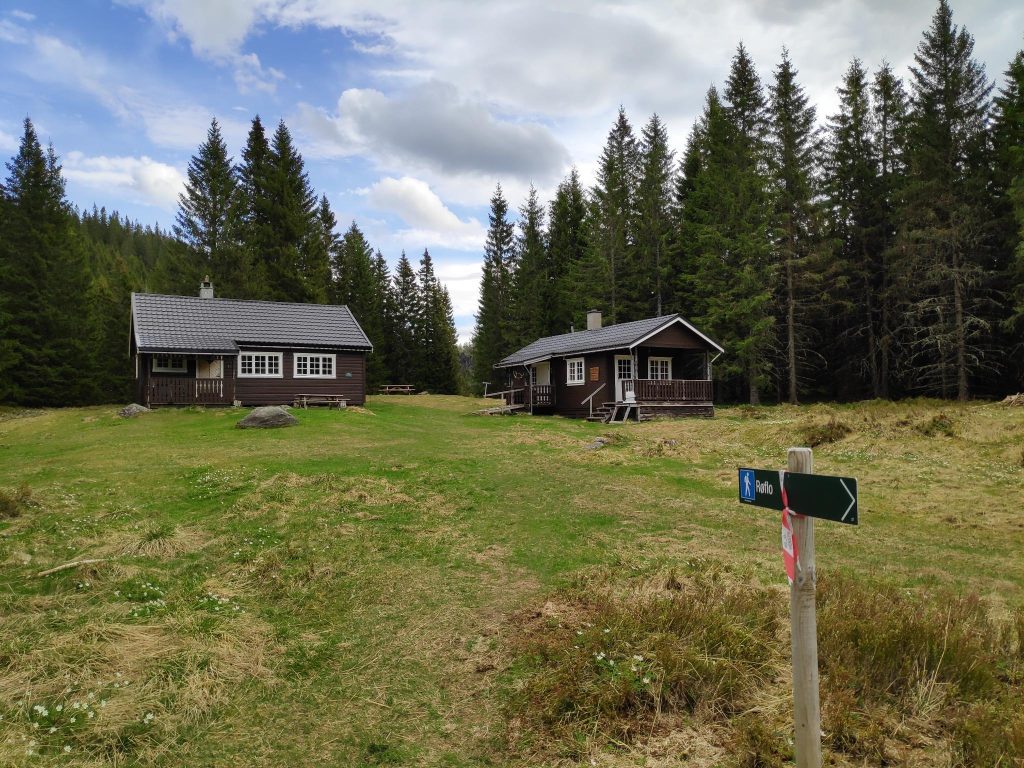
Though there is a lovely view from Aunan, Floåsen is an open area in the middle of the forest. There are two buildings at Floåsen, and there are several signs here. The sign below tells the story of this location. This was originally a farm owned by the King. It was purchased by municipality of Røra in 1924. The cabin that is here is owned by the Røra School.
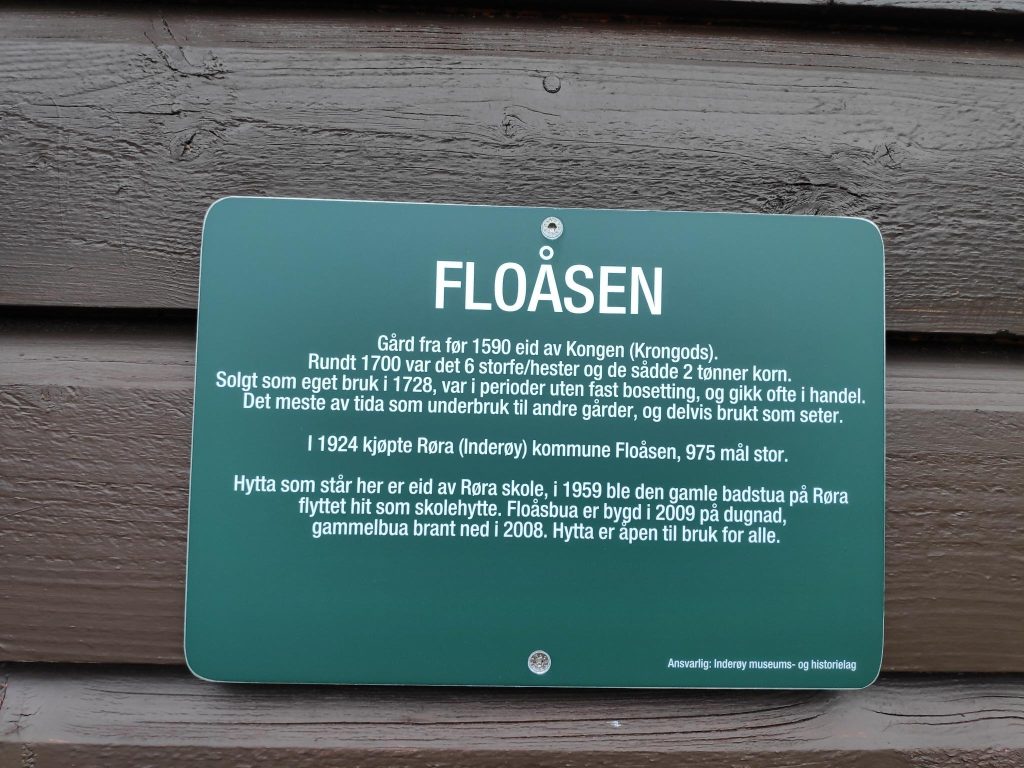
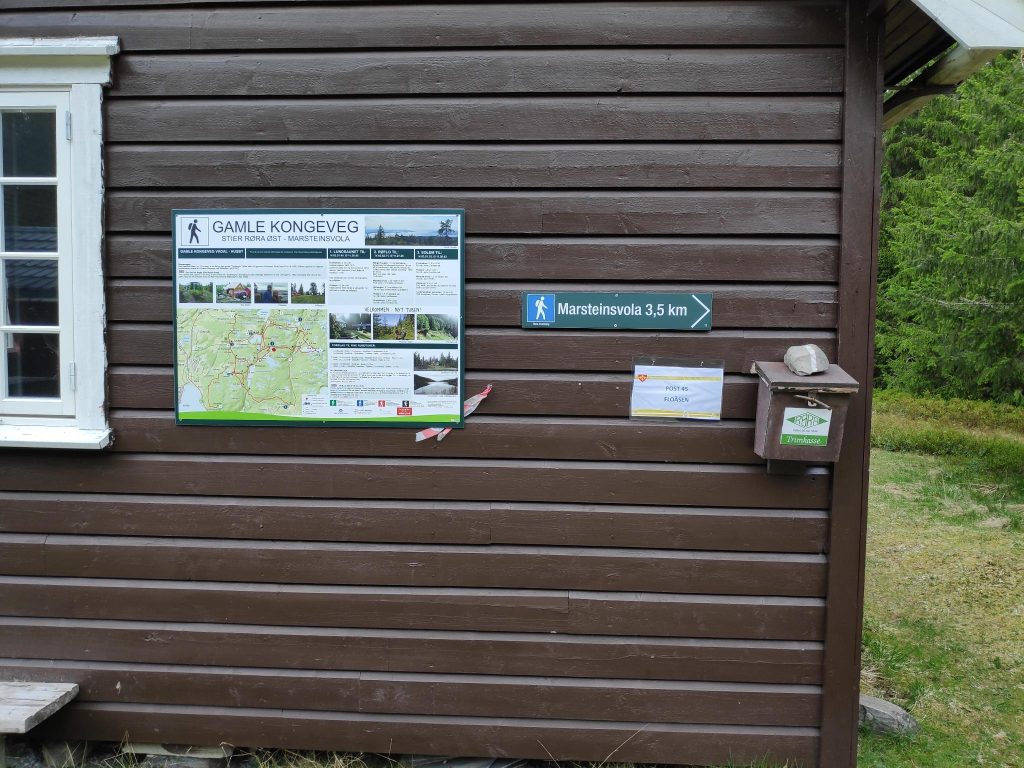
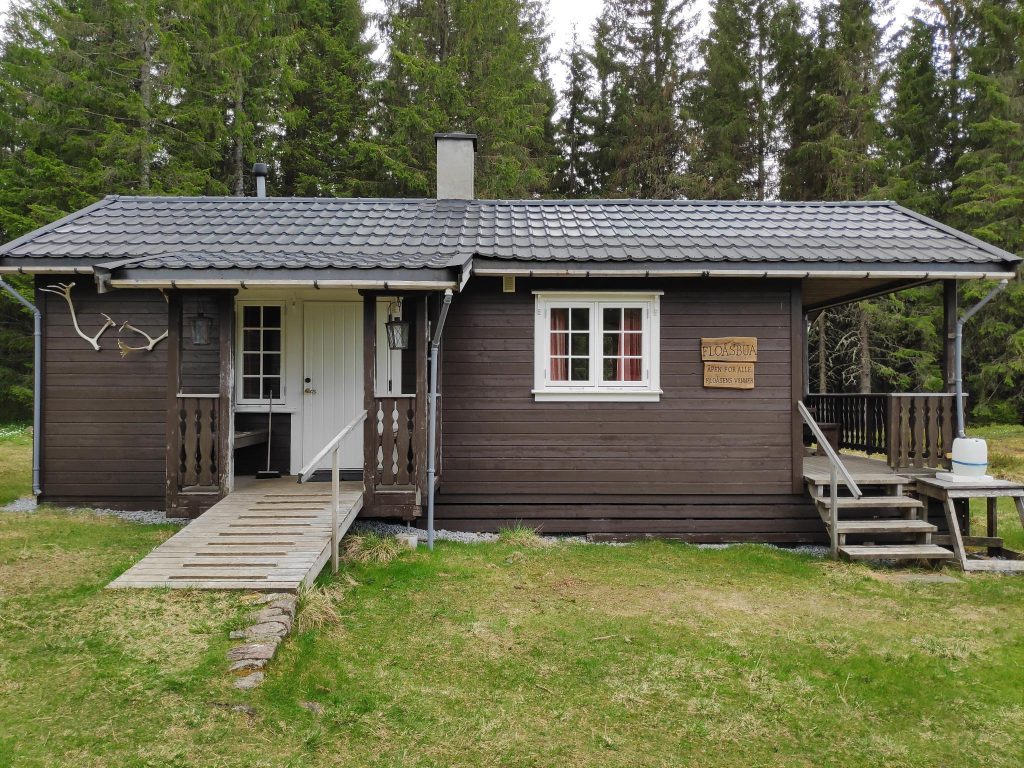
Translation: Floås Cabin, open for everyone, Friends of Floåsen
The left hand door leads to a toilet and to the right is a room with a small kitchen, where one could take shelter in bad weather. We sat at a picnic table outdoors and ate some sandwiches.
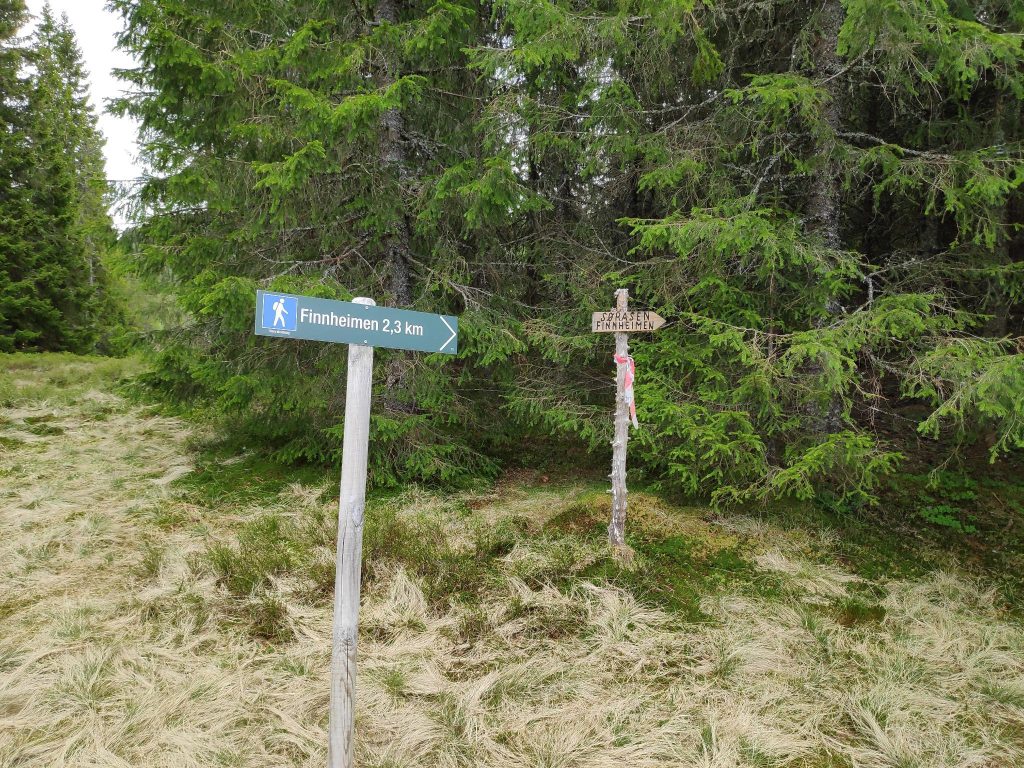
We had now been walking for about one and a half hours, enjoying our time out in nature. There were other places we could have walked to from here, but we agreed that going back to the car was appropriate. Taking the quickest way back it would take about half an hour to the car.
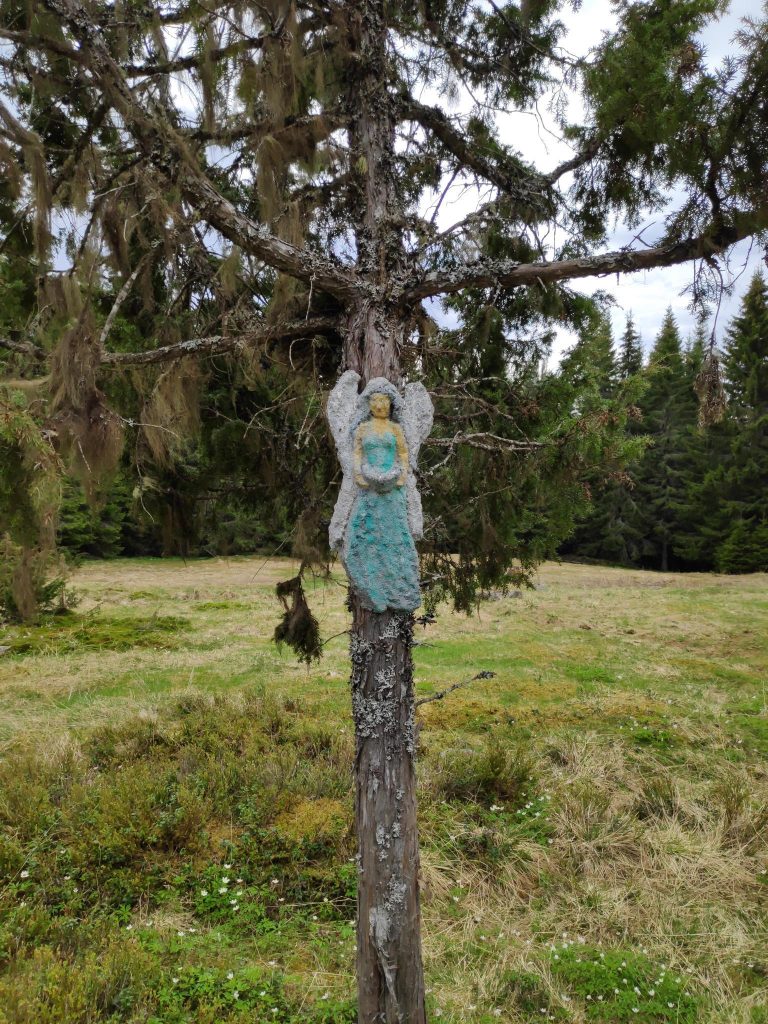
The walk took a little over two hours, in cloudy weather and about 14 degrees Celsius. We were tired by the time we got back to the car, but we want to do walks this long regularly so that we keep in good shape and grow old gracefully. We got to try a different trail we hadn’t been on before and we didn’t get lost.
I hope you have a chance to get out for a walk today. Enjoy nature! They say trees are good for our mental health.

